2-week itinerary in the Balkans
The Balkans is a part of Europe I hadn’t had a chance to explore deeply. With this trip, I wanted to put a remedy to it. Check out this 2 weeks in the Balkans itinerary to get inspiration for your trip and make the most of your time!
- The itinerary
- Day 1 – Explore Slovenia
- Day 2 – Zagreb, Croatia
- Day 3 – Plitvice Lakes and a drive to Zadar and Split
- Day 4 – Dubrovnik
- Day 5 – Day in Montenegro
- Day 6 – Towards Bosnia & Herzegovina
- Day 7 – From Sarajevo to Belgrade
- Day 8 – Visit to Novi Sad, Serbia
- Day 9 – From Serbia to Bulgaria
- Day 10 – Veliko Tarnovo
- Day 11 – Plovdiv
- Day 12 – Seven Rila Lakes and Monastery
- Day 13 – Sofia
- Personal highlights
- Is it cheap to travel to the Balkans?
- How safe it is?
- What is the dress code?
- Practical tips
Affiliate links
This page contains affiliate links. If you click through and make a purchase, I may earn a small commission — at no extra cost to you. Thank you for supporting the site!
The itinerary
Day 1 – Explore Slovenia
Lake Bled
We landed in Ljubljana, took a rental car, and headed towards Lake Bled. The road was beautiful, surrounded by mountains covered in a dense forest. We arrived to Bled, the town, in about 45 min from the airport and searched for a nice area to see the magnificent Lake.
A great option for that is to check the Bled Castle. The views of the Lake Bled are fantastic from there and alone worth the 18€ entry fee. The castle itself has several exhibitions: it was featuring the history of the castle and had a small Neanderthal collection too.

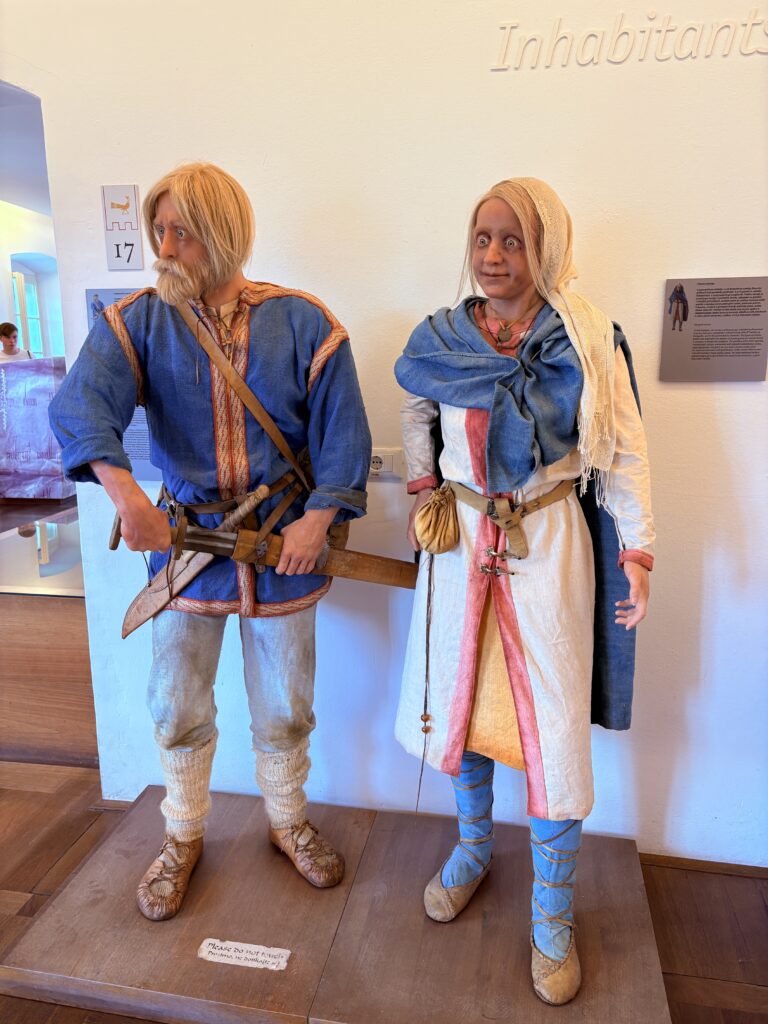
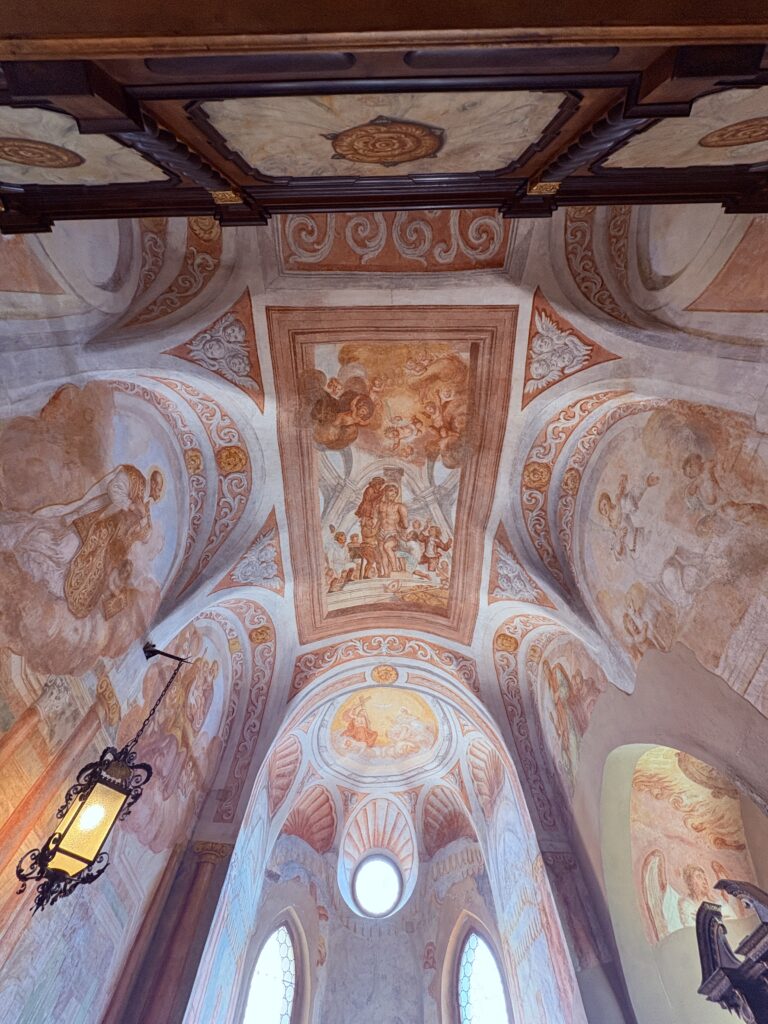
Ljubljana
We then drove to Ljubljana, the gorgeous capital of the country. The old town has a nice walking area around the river, surrounded by small stores and restaurants. Th works of the architect Plečnik are part of a UNESCO heritage site since 2021 and you can see them all around the old town.
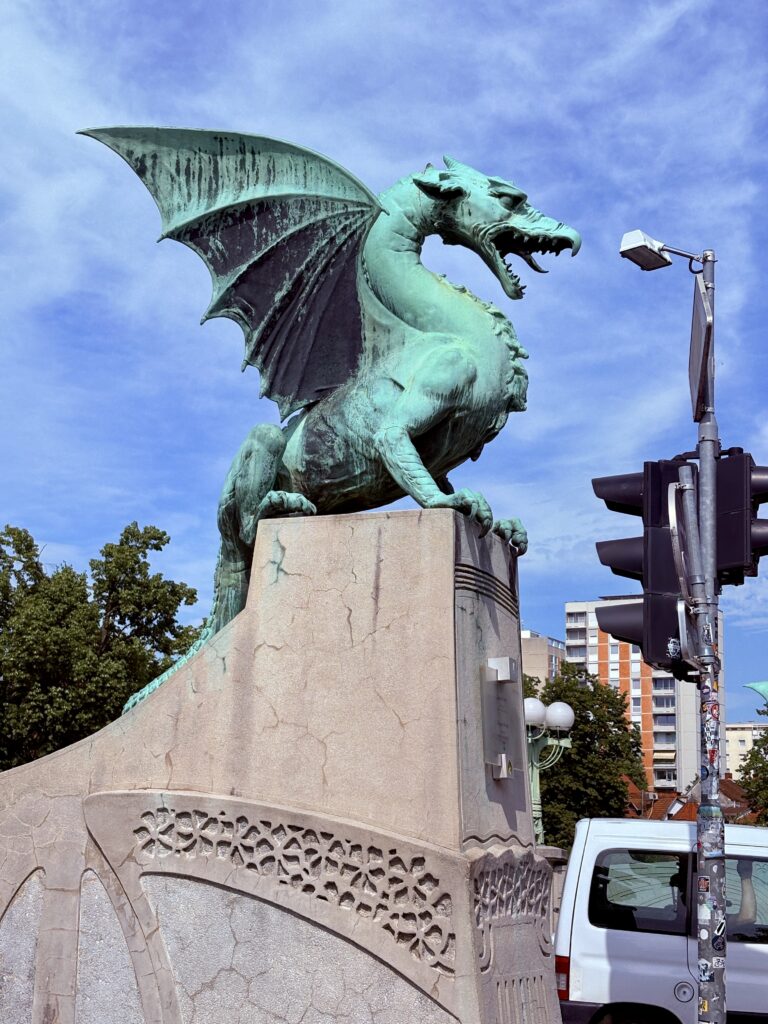
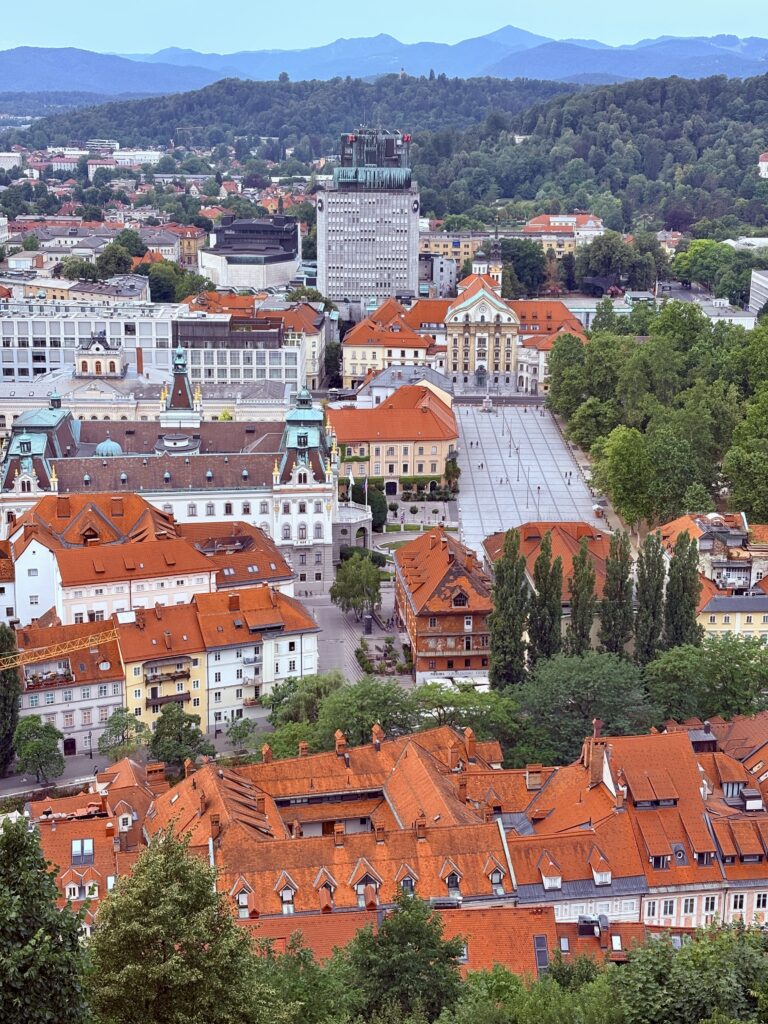
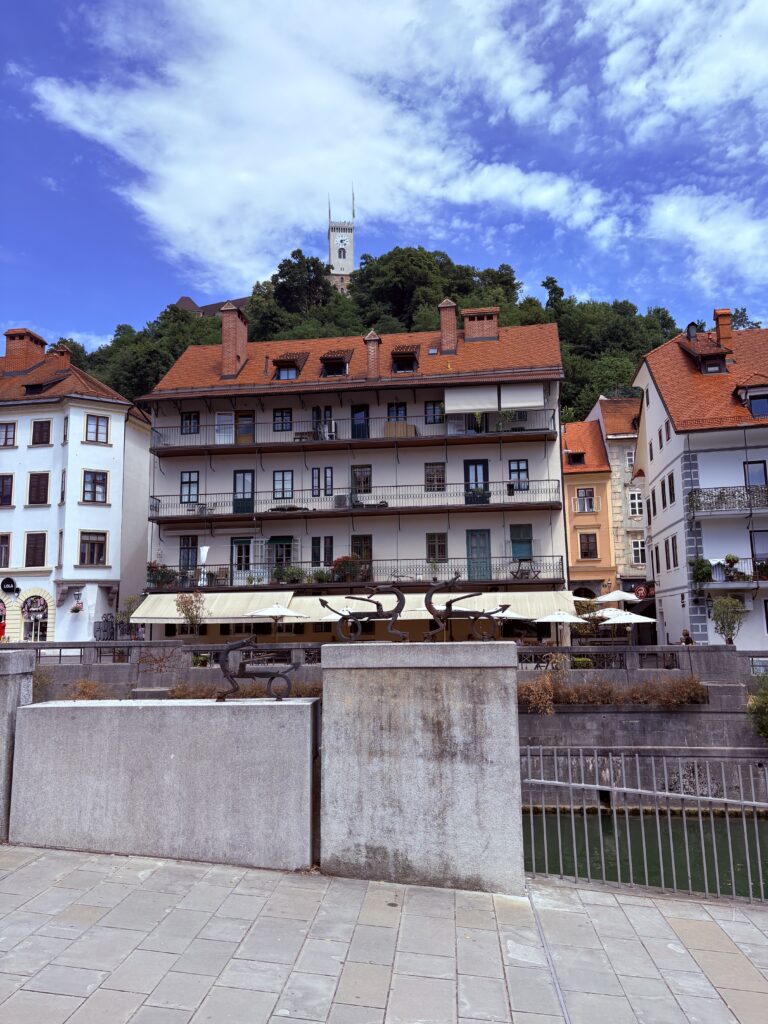
Our next stop was the Ljubljana castle. It has a very similar building to the Bled castle, and you also can get great views from the top. The dragon, a symbol of the city, is very present in the castle, and you can find it in different locations around. Not all areas of the castle require of a ticket, which costs 15€ for the basic package – it includes a 4D experience to learn about the castle history, a climb to the viewing tower, and a couple museums.

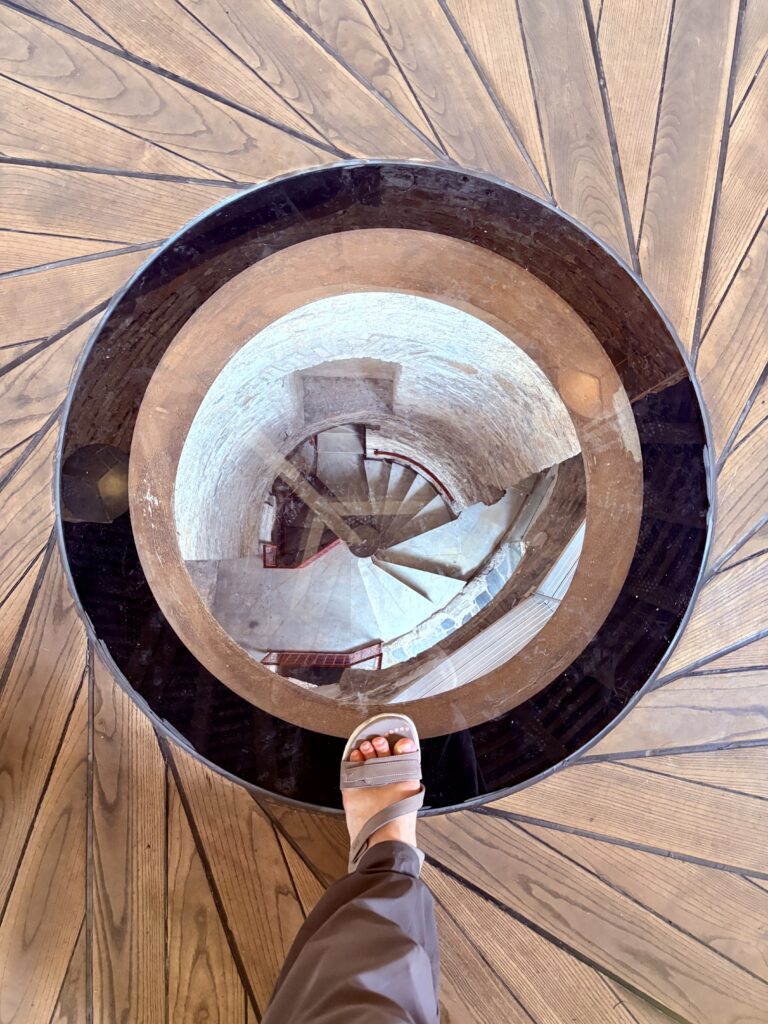

In the evening, we drove to Zagreb, which is only 1:30 h by car from Ljubljana, so it constitutes an obvious next stop to the trip.
No day is complete without a good dinner, and Zagreb offered great locations for that. We walked around the Ban Jelacic square, which is full of restaurants and bars, and had dinner at Gostionica Ficlek, a great choice to try Croatian food. I had fried chicken and green beans, which was an excellent choice.

Day 2 – Zagreb, Croatia
Zagreb is a pleasant small city, which gives a great opportunity for relaxing while sightseeing. The city center contains some of the most important attractions of Zagreb, which makes it pretty condensed. We started at the Ban Jelacic square, from were we walked to the Church of the Transfiguration of the Lord, and to the world’s shortest funicular. The funicular was closed as there were some repairs undergoing, but the views from there are still nice.
We then visited the Museum of Broken Relationships. The aftermath of failing or finished relationships can be tragic, sad, angry, or petty – you get all these choices in the Museum of Broken Relationships. It’s a beautiful tale of human relationships, including not only romantic ones but friendships and deaths. Some stories are funny, but many are sad. If you like learning about our fellow humans this is the place for you.
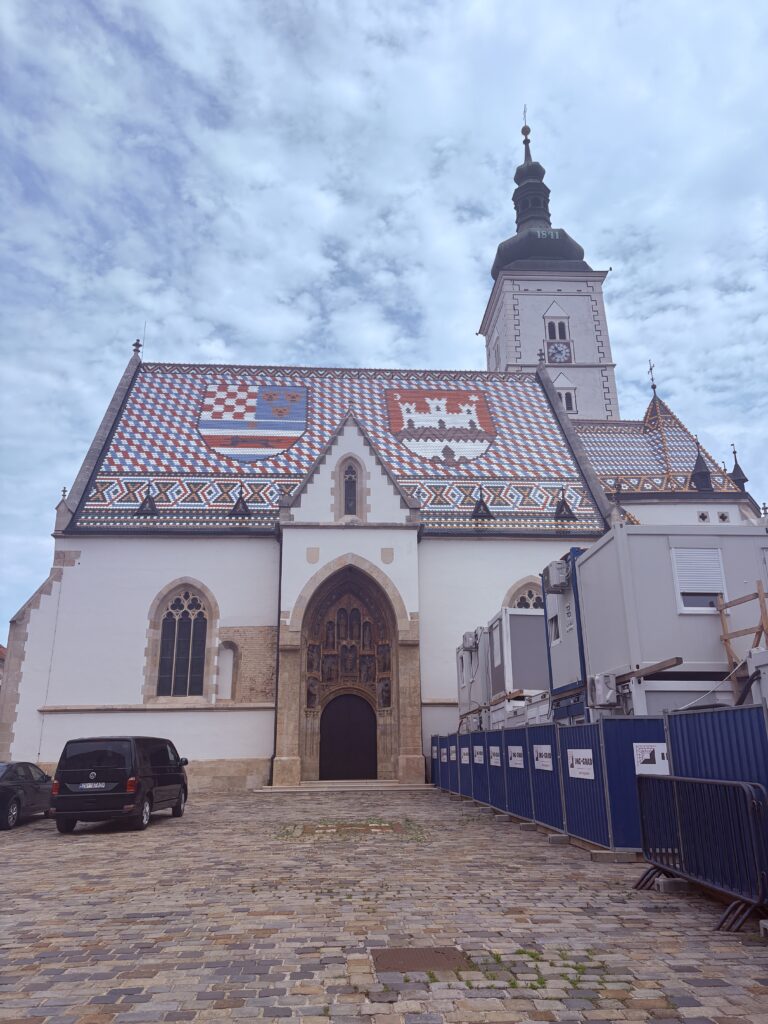
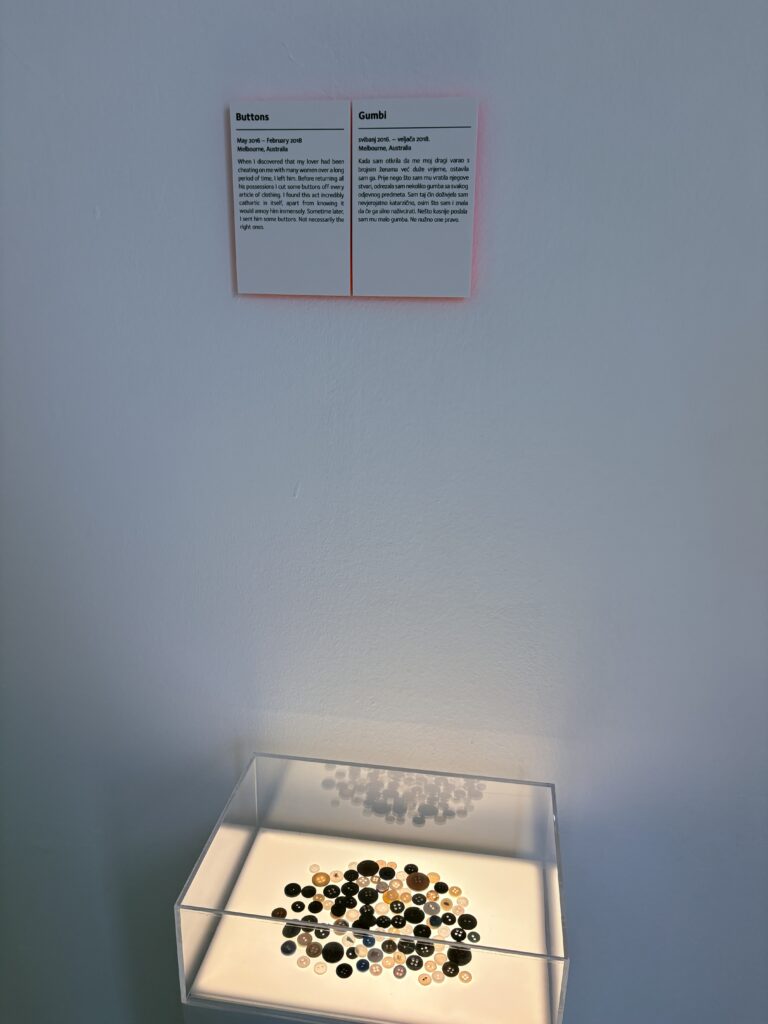
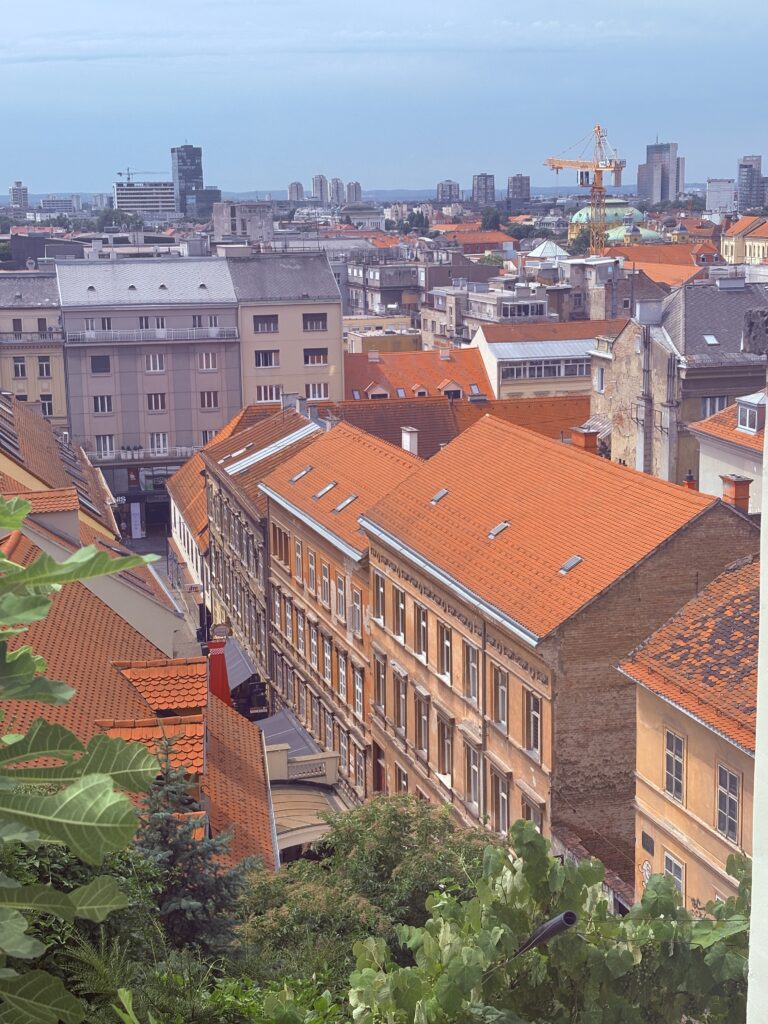
On the same street as the museum, you can see a small church, the Greek-Catholic Co-Cathedral of Saints Cyril and Methodius. Going further down, you’ll the the more famous St Mark’s Church, with a spectacular roof pattern. The Zagreb Cathedral was under repair, so it was not possible to visit it. Instead, we walked towards and visited the Theater, which is a beautiful building of the 19th century.
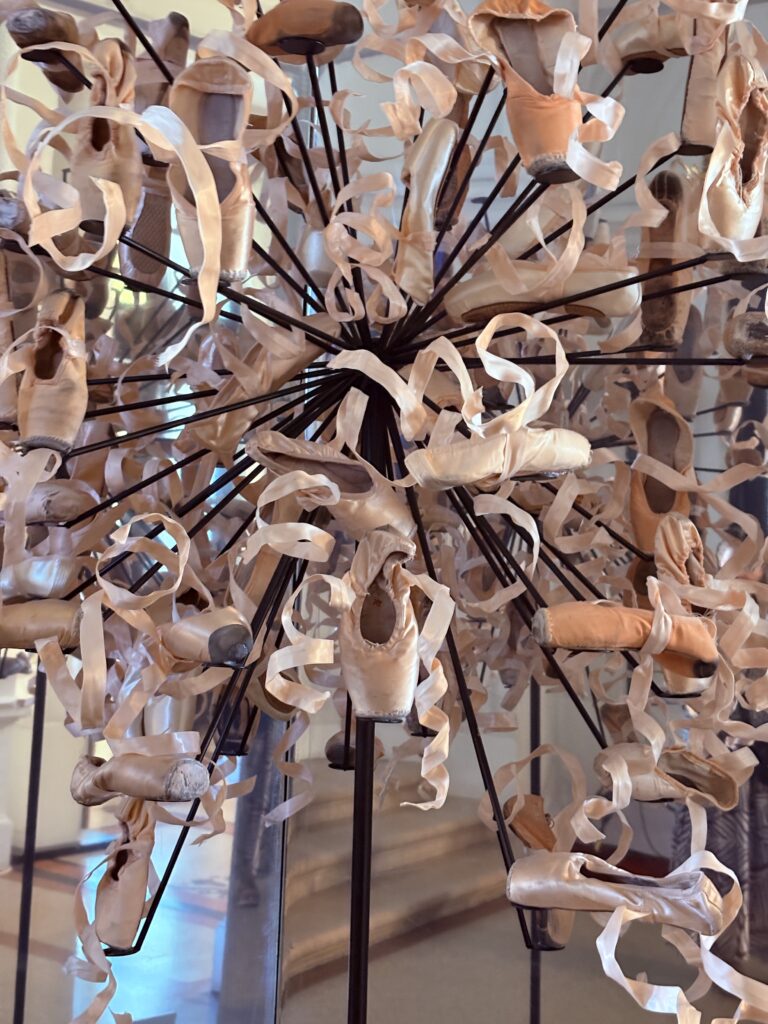

Under the city there is a secret: the WWII tunnels, where people used to shelter during WWII and the Croatian war of independence. Nowadays, the tunnels serve as a spot for cultural events. During our visit, they werehosting an exhibition.
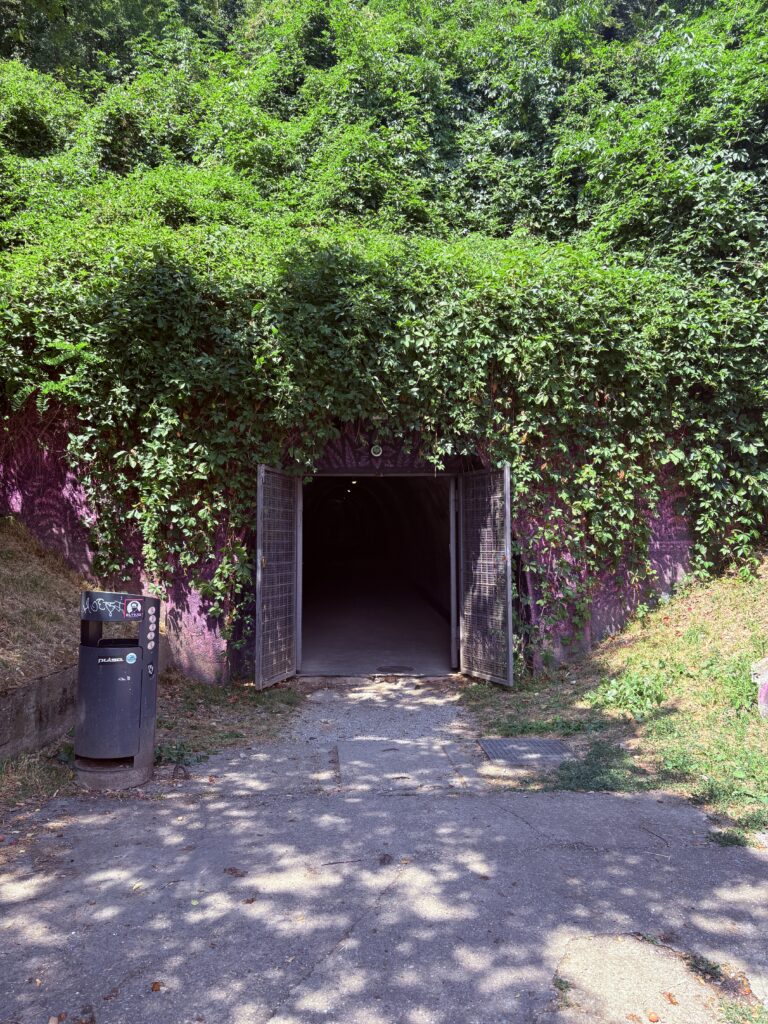

Finally, we walked through the Park Kralka Tomislava, a small park with a sculpture dedicated to King Tomislav and and art pavilion. It’s a nice to do if you have the time, but not one of the essencials of the city.
Mirogoj cemetery
This stop requires to take a car or public transport, as it’s located a bit further. The cemetery is a must-see in the city, with a stunning main structure designed by Hermann Bollé. The creeper plant gives the place a more sinister and run down look. When we visited, the structure was being repaired.

Maksimir Park
Another location that requires of a slightly longer travel is the Maksimir Park, where the Zagreb zoo is located. The zoo started in 1925 with only five animals and then expanded to what it is today. The rest of the park is great for a pleasant stroll. One can also take a boat to explore the park from the water.


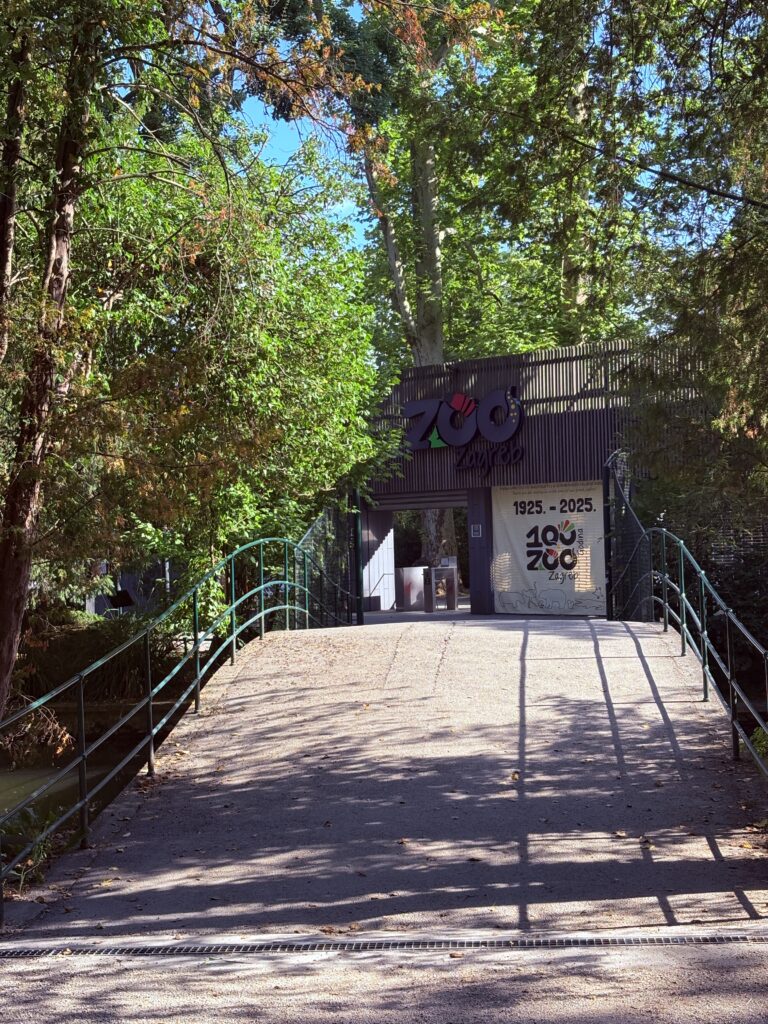
Day 3 – Plitvice Lakes and a drive to Zadar and Split
Plitvice National Park
The Plitvice lakes are located around 2h away from Zagreb, so we arrived to the area the day before to start the hike early. Nonetheless, given the popularity of this national park, the lakes were already crowded. They are nonetheless absolutely worth visiting! I had visited them previously in spring, but summer time was more beautiful (although also more crowded), as the waterfalls were surrounded by lush greenery.
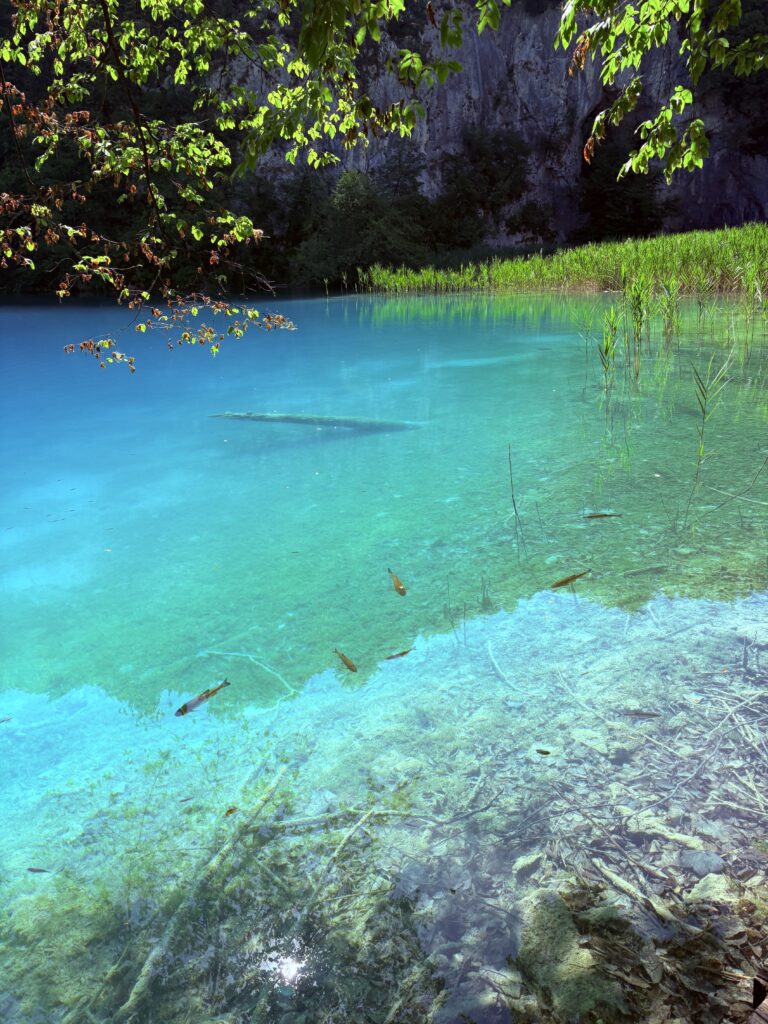
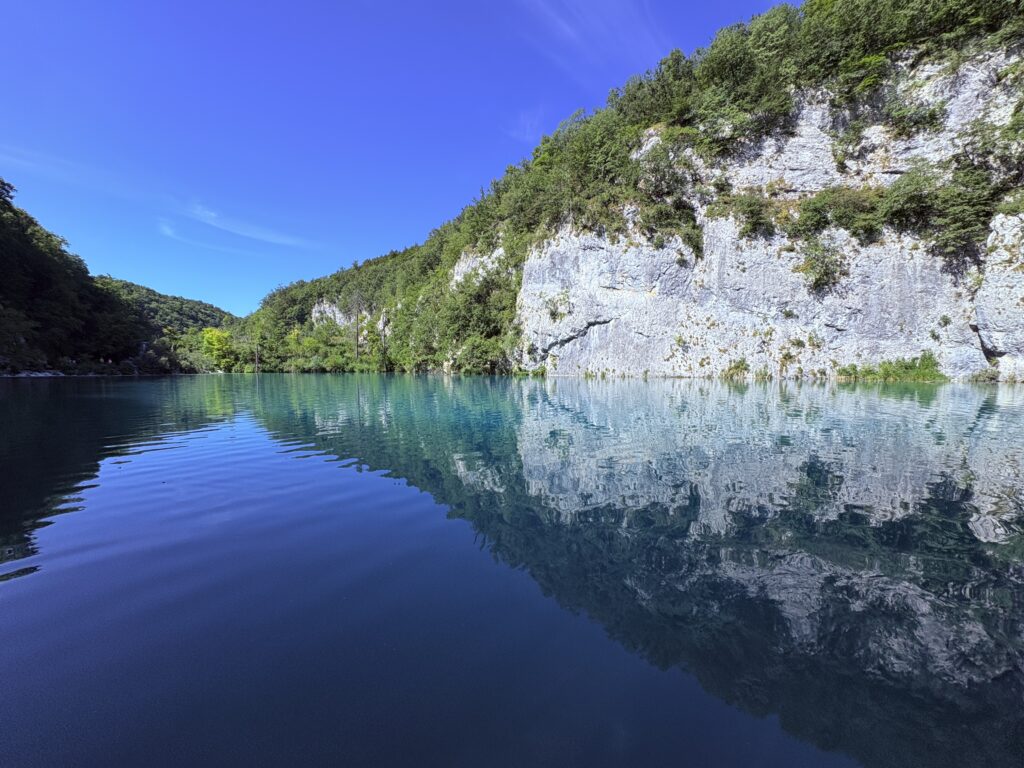
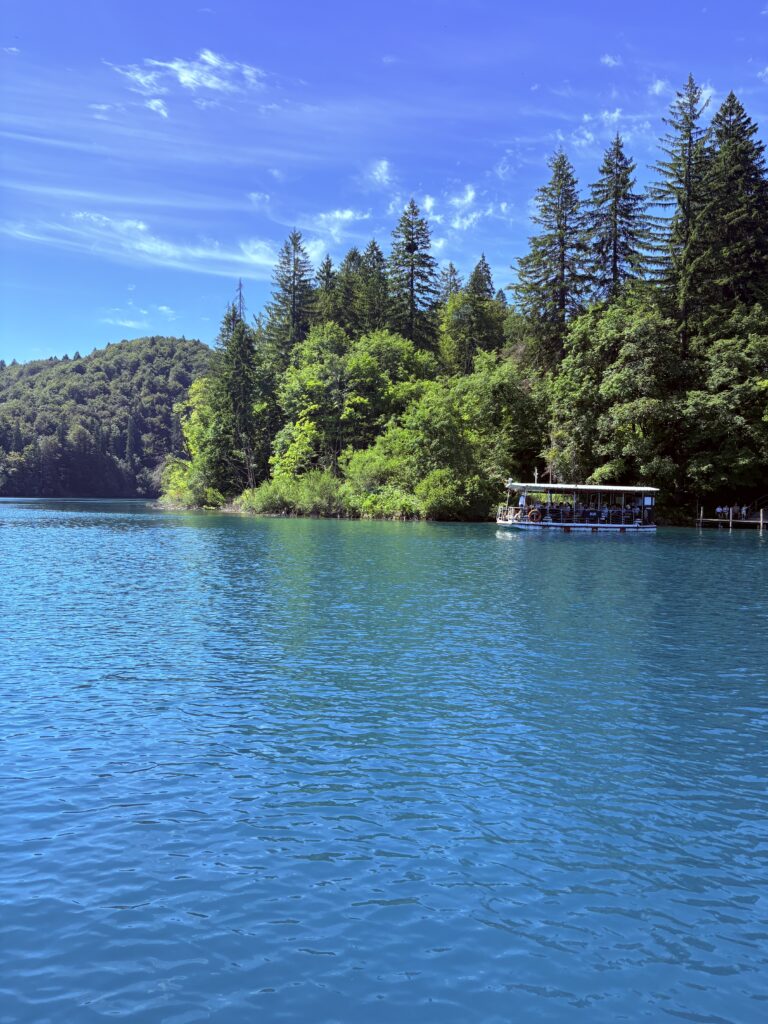


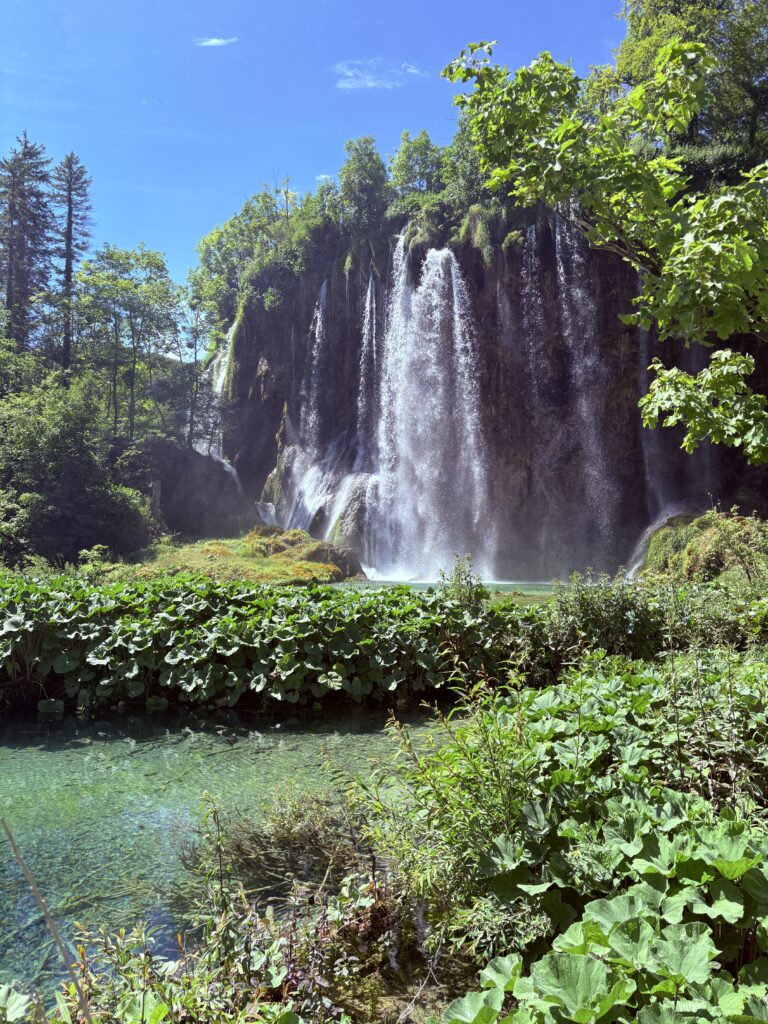
The park has multiple hiking trails, depending on what you’re interested in and how much time you have. Unless you take one of the long trails, the hikes are not wild – there’s wooden platforms and paved trails, and there is also a bus and a ship to help you move across the park. The most popular -and therefore more crowded- hike is Trail A, which gives an overview of the Lower Lakes, and you can also see the Veliki Slap, the tallest waterfall in Croatia (62 m of free fall).
The other hike we did was Trail E, which is also a relatively short one but following the Upper Lakes. Both hikes are stunning and bring you to plenty of locations to enjoy the blue and green waters. This color is naturally occurring due to the tufa (calcium carbonate sediments) and the algae in the water. The process of formation of this lakes is very special and it’s what warranted them to become a UNESCO heritage.
Zadar
Zadar is a pleasant medieval city located near the sea. It’s also the starting point of boat tours to neighboring islands. The city itself is quite small, surrounded by walls, and has a few churches and roman remains. It’s quite similar to Split, its more famous neighbor, but it deserves a visit if you have the time.
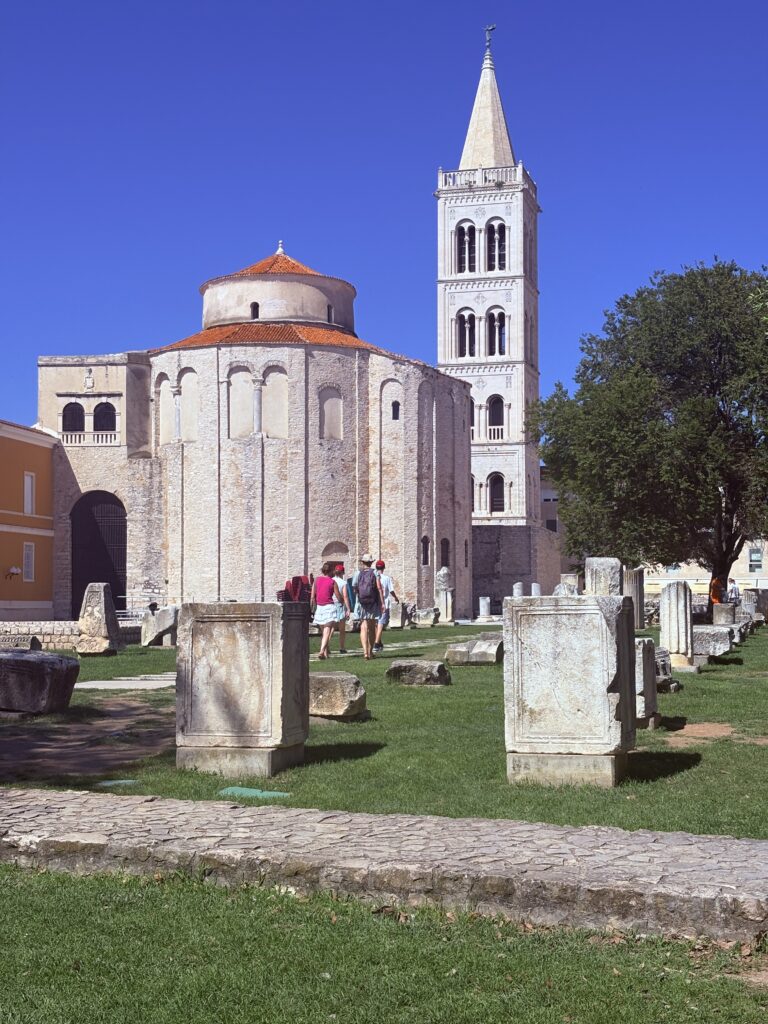
Split
Split has a beautiful old town, blending Roman and medieval architecture, with narrow streets that you can explore for hours. The city, founded by the ancient Greek, is today the second largest Croatian city, after Zagreb. We enjoyed the restaurants and stores, as well as the historic views – and even had a swim there! The vibe of Split reminds me of Barcelona – visit my weekend guide to Barcelona if you like this kind of cities!



Day 4 – Dubrovnik
Dubrovnik is a popular tourist destination and its old town has been part of UNESCO since 1979. As such, Dubrovnik is very crowded, especially during high season. If its beauty and proximity to the sea are not enough to attract you, Dubrovnik got (more) famous for being part of the filming location in Game of Thrones. For those who are a fan of the series, there’s many tourist attractions and souvenir shops dedicated to Game of Thrones. However, if that’s not for you, there’s also plenty to see.
The main attraction of Dubrovnik are the city walls – this is a must do in the city. The whole perimeter of the city takes around 1 h to do and gives a great overview of the old town. There are a couple of bars on top of the walls in case you want to stop for a drink. The views from the city walls are absolutely stunning, facing both the Adriatic sea and the city itself. That said, this attraction comes with a steep price, 40€. If you buy the Dubrovnikpass, some additional attractions are included, so you can also take the chance to explore some of the museums of the city.
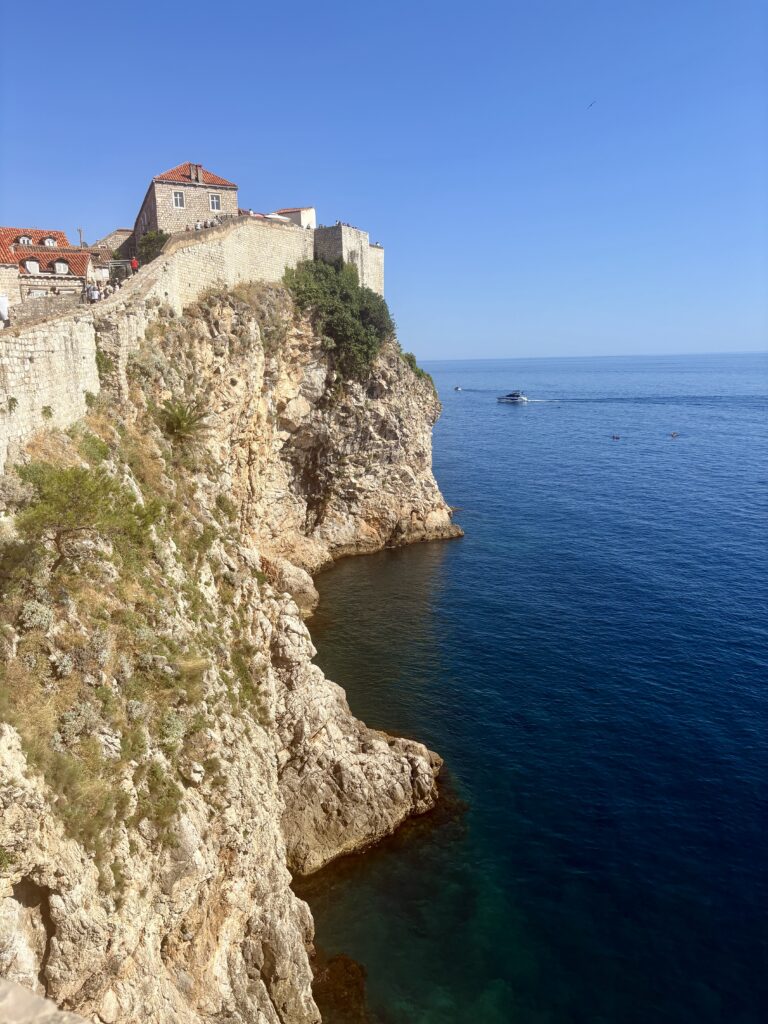
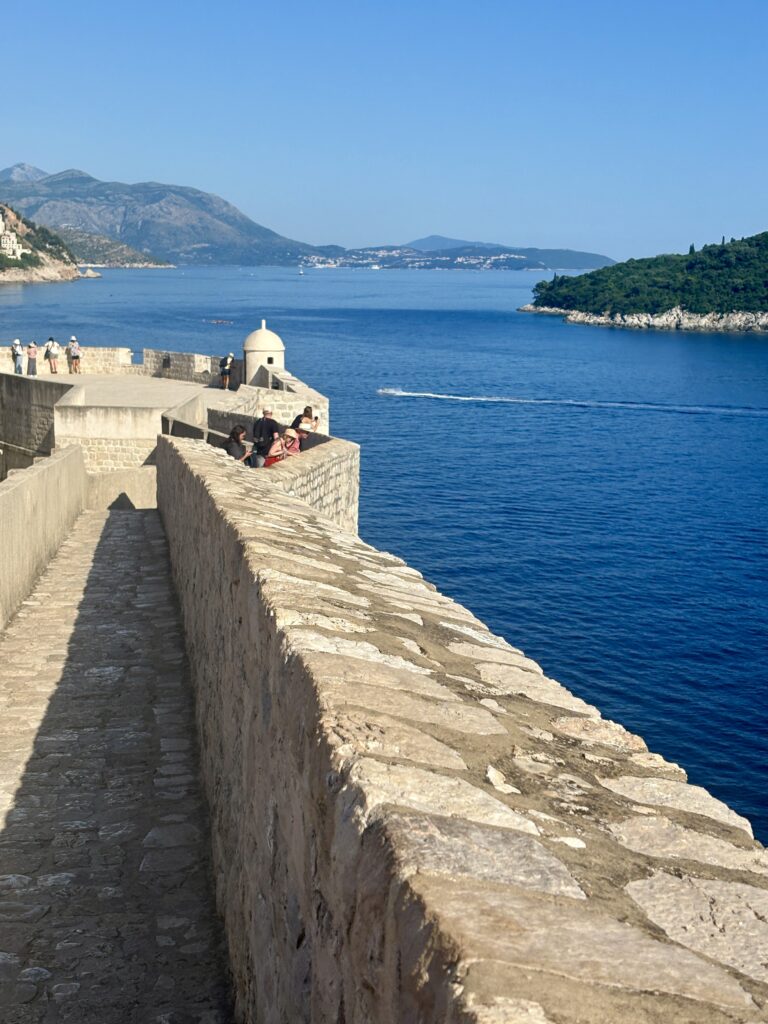
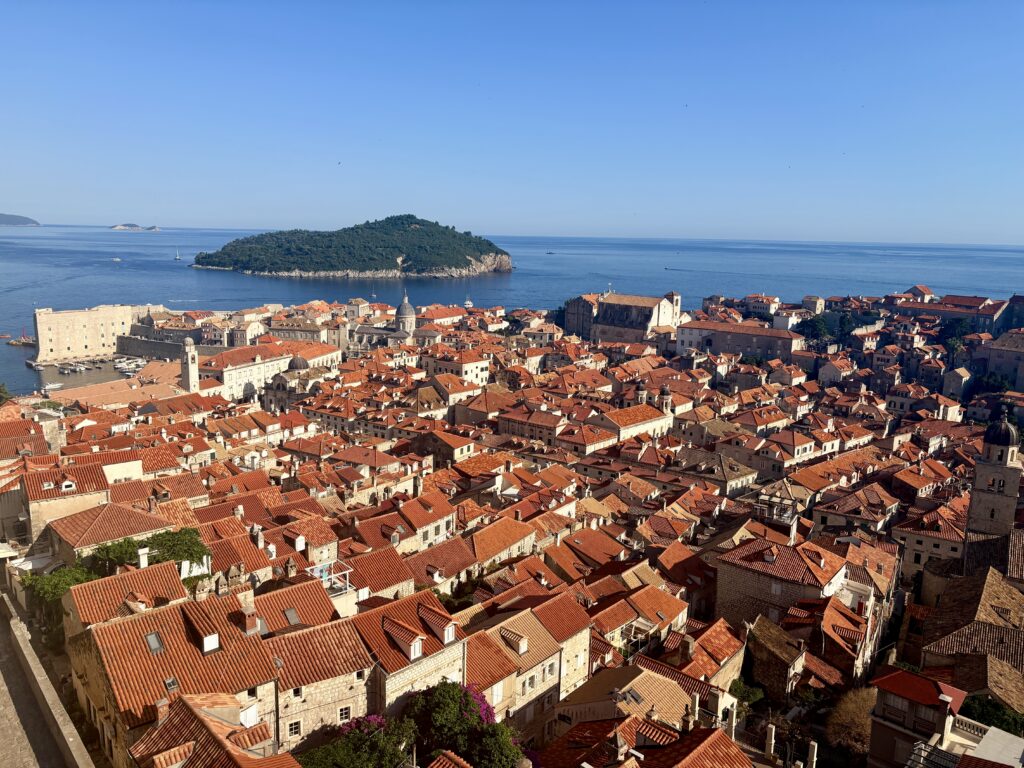
For sunset, a great place is Srđ, a mountain from which you have amazing views of the city. There is a cable car that you can take from nearby the old town, with is not cheap (30€) to go up, but you can also hike or drive there. Either option, the top views are stunning.
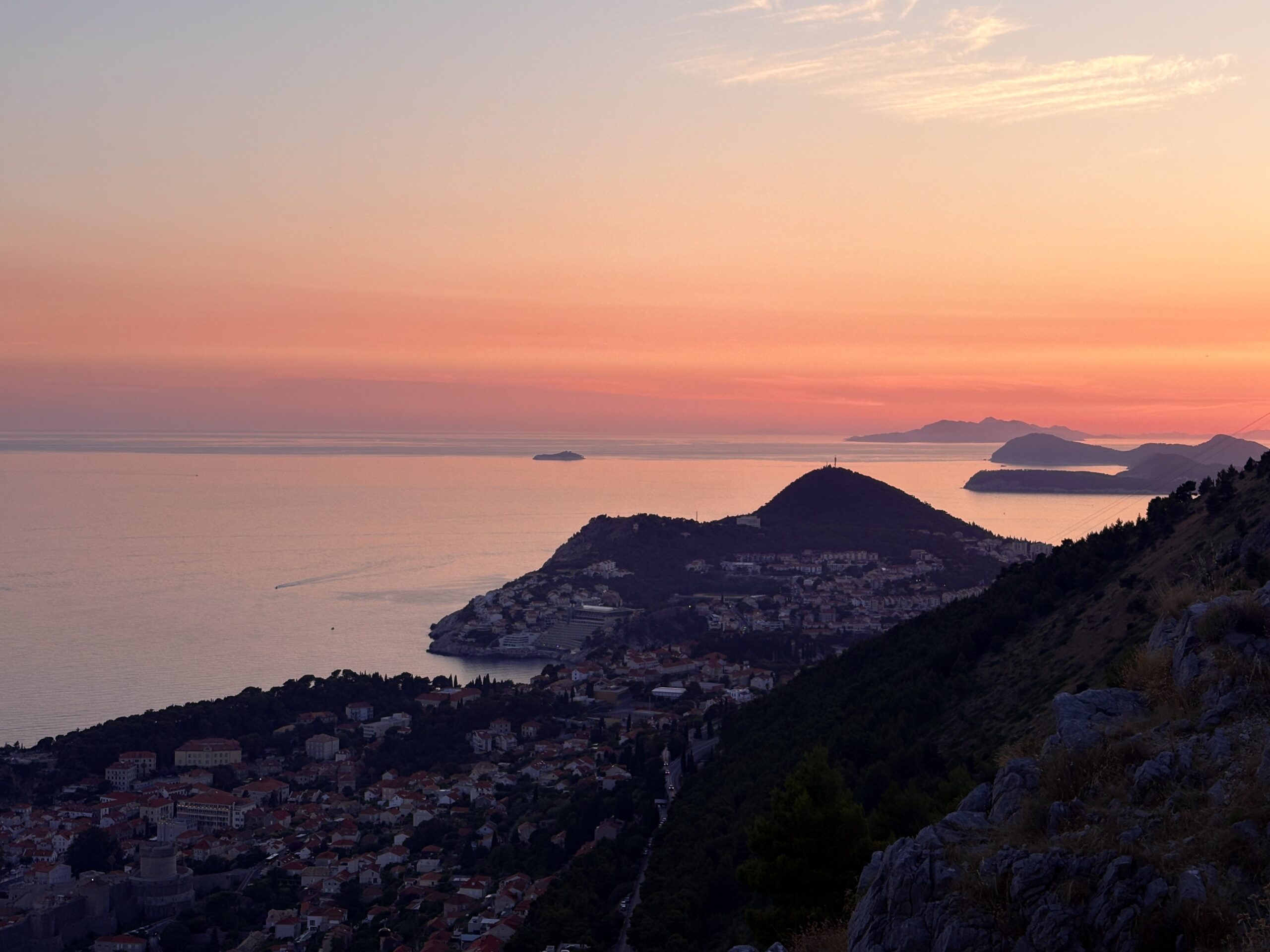
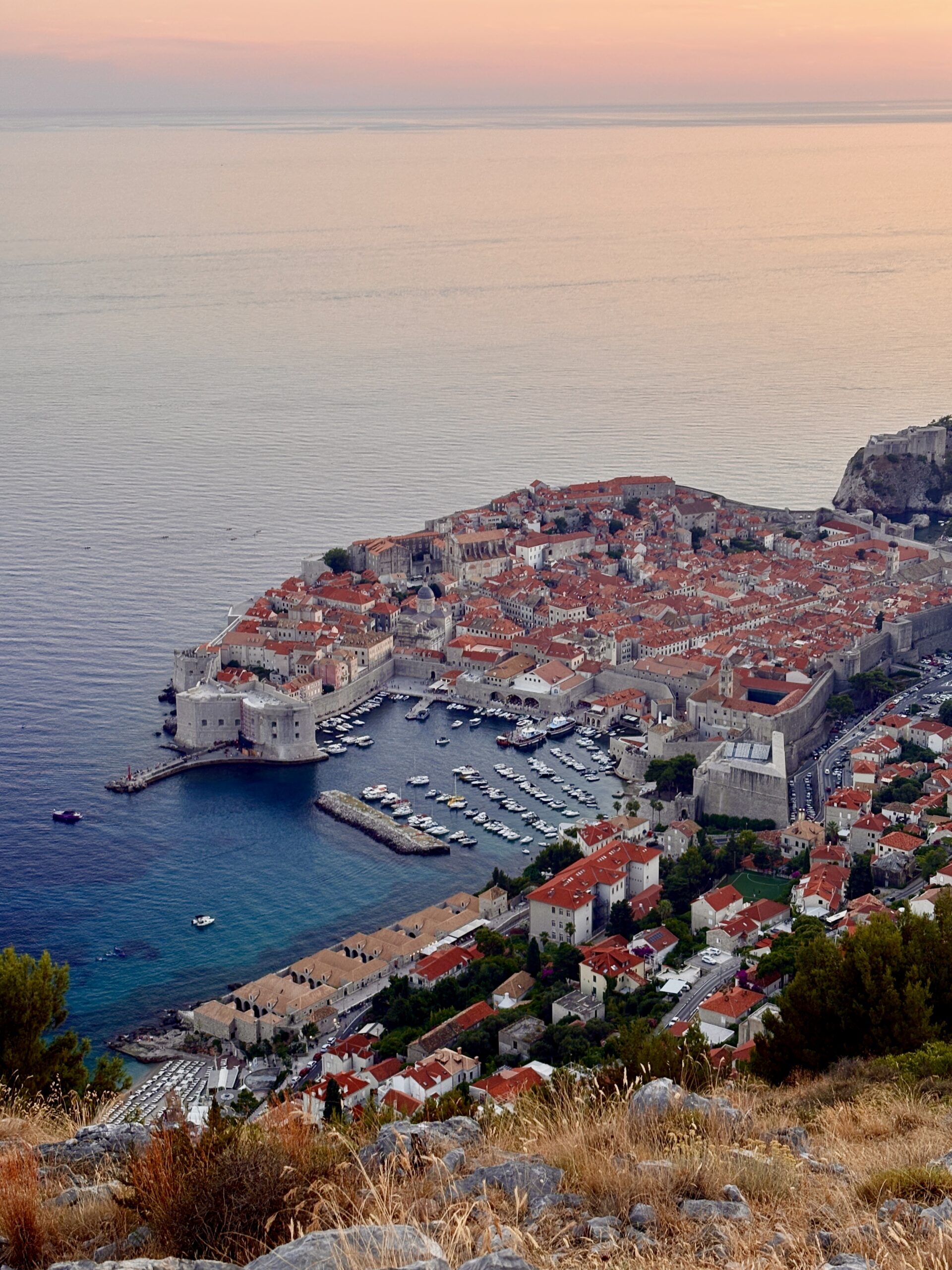
Day 5 – Day in Montenegro
Molunat
Our AirBnB was in Molunat, a small Croatian town near the border with Montenegro. While we didn’t stay ther elong, Molunat had great views of a bay and it’s worth the stop.

Perast
Perast is a small coastal town located in Montenegro, not too far from Kotor. The main attraction in Perast, apart from its idillic old town, are two small islands located in the middle of the lake. The islands, St. George and Our Lady of the Rocks, have both a church and some additional buildings. One of the islands is private, so you can only visit the Our Lady of the Rocks . You can take a boat that drives you to the island, for around 20-25€. The visit to the islands takes around 1 h, and the city itself is also quite small. Half a day is a perfect amount of time to dedicate to this place.

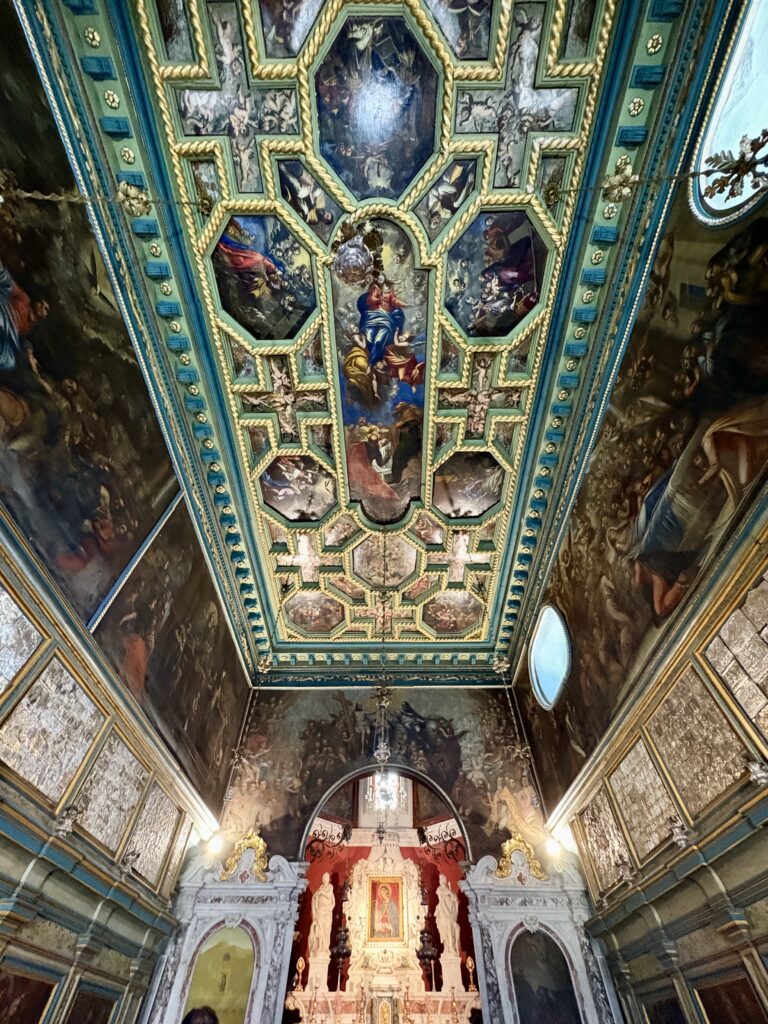
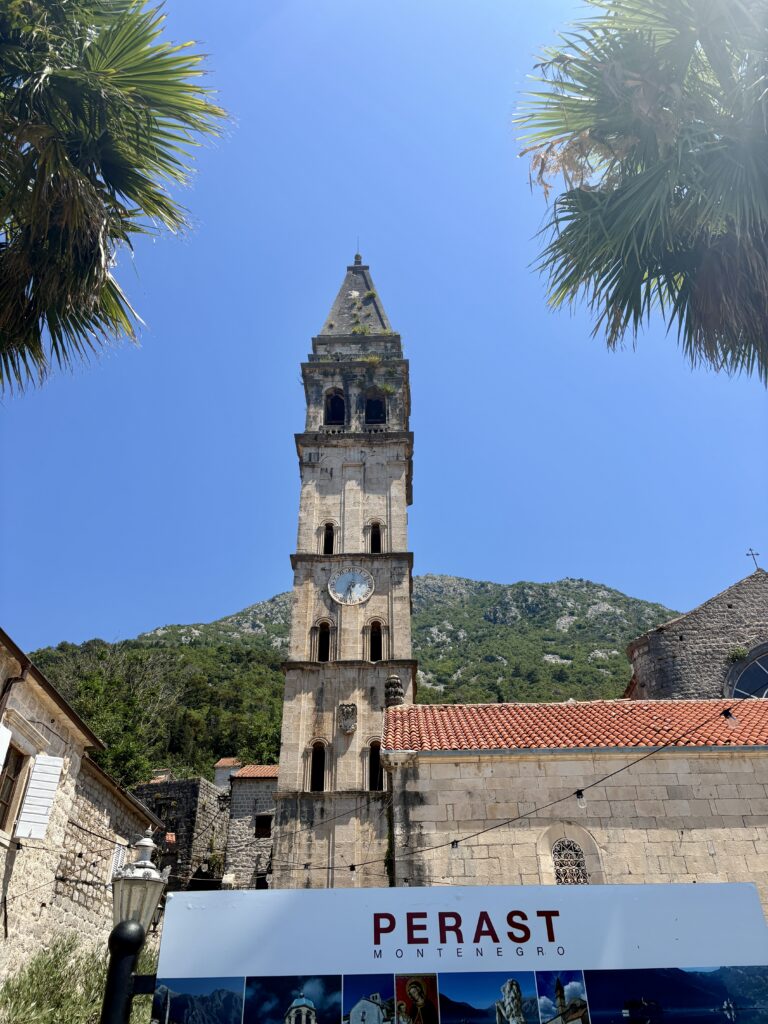
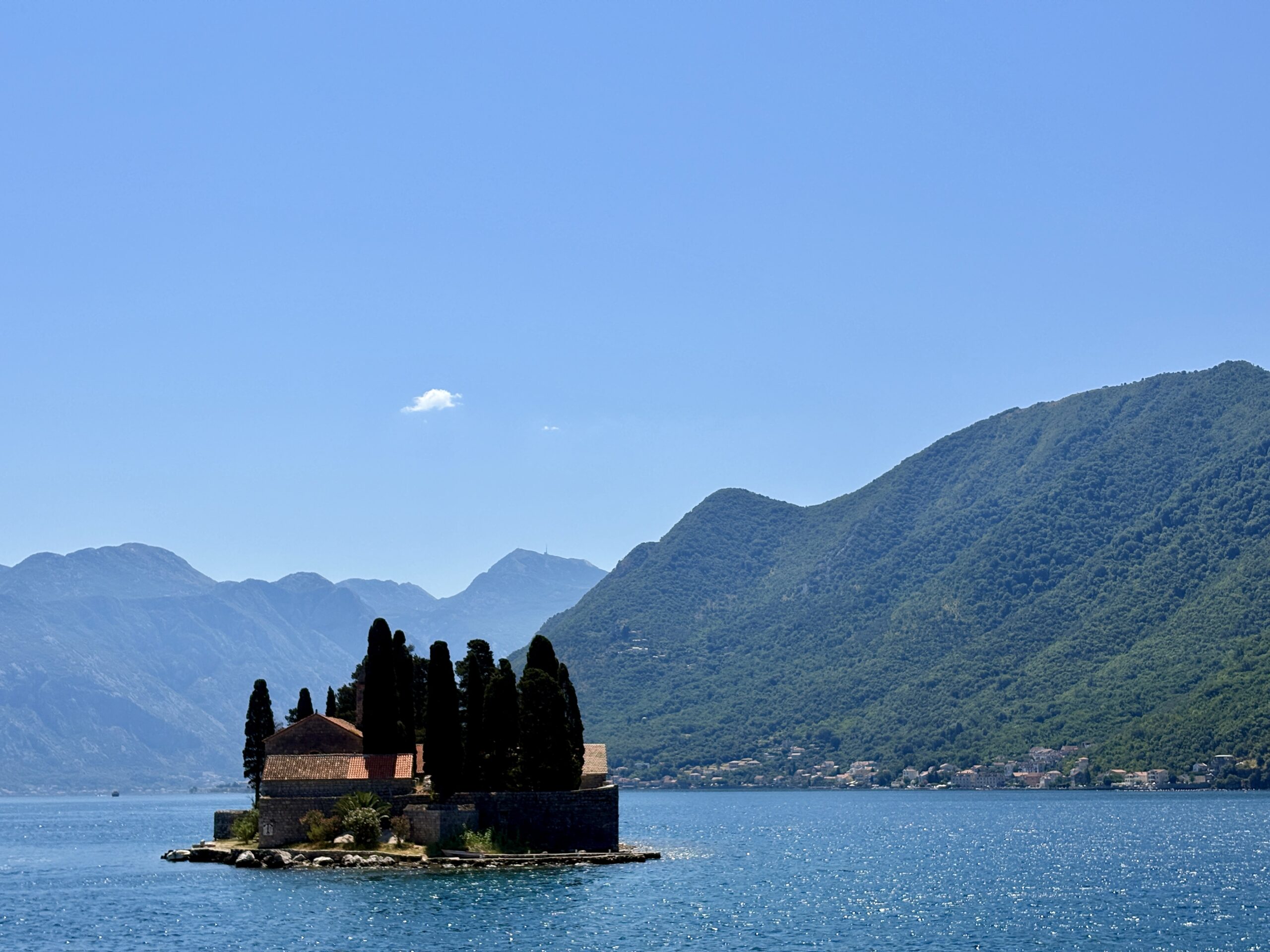
Kotor
Kotor is a must-do stop in Montenegro: a UNESCO heritage from 1979, Kotor is located at the Bay of Kotor. The city is surrounded by walls built during the Venetian period. Kotor is a rather small city, with many stores, restaurants, and -importantly- lots of cats and cat merchandise. For me, the fun of these cities is to get lost in the small streets and just explore some of the churches with open doors.
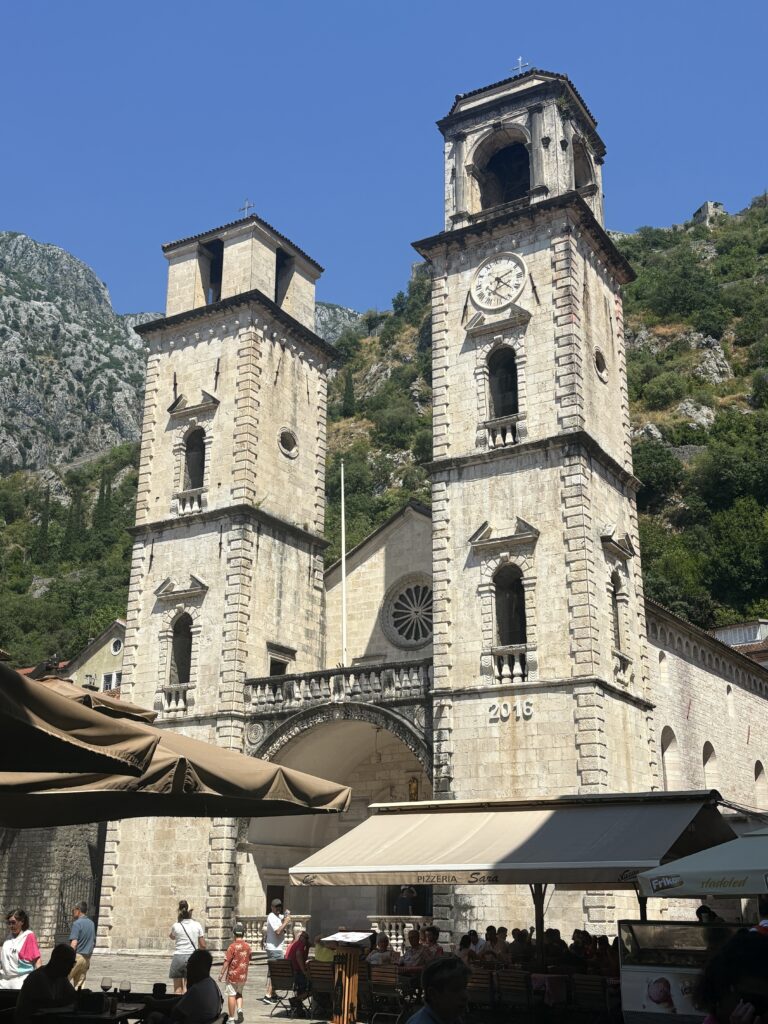
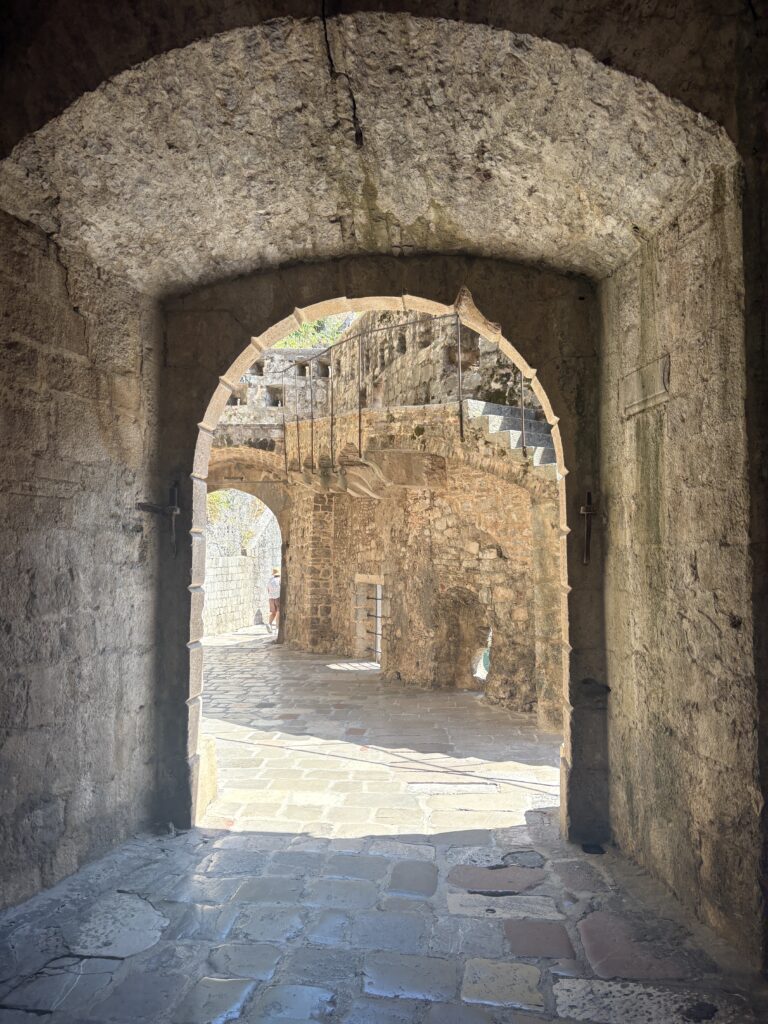
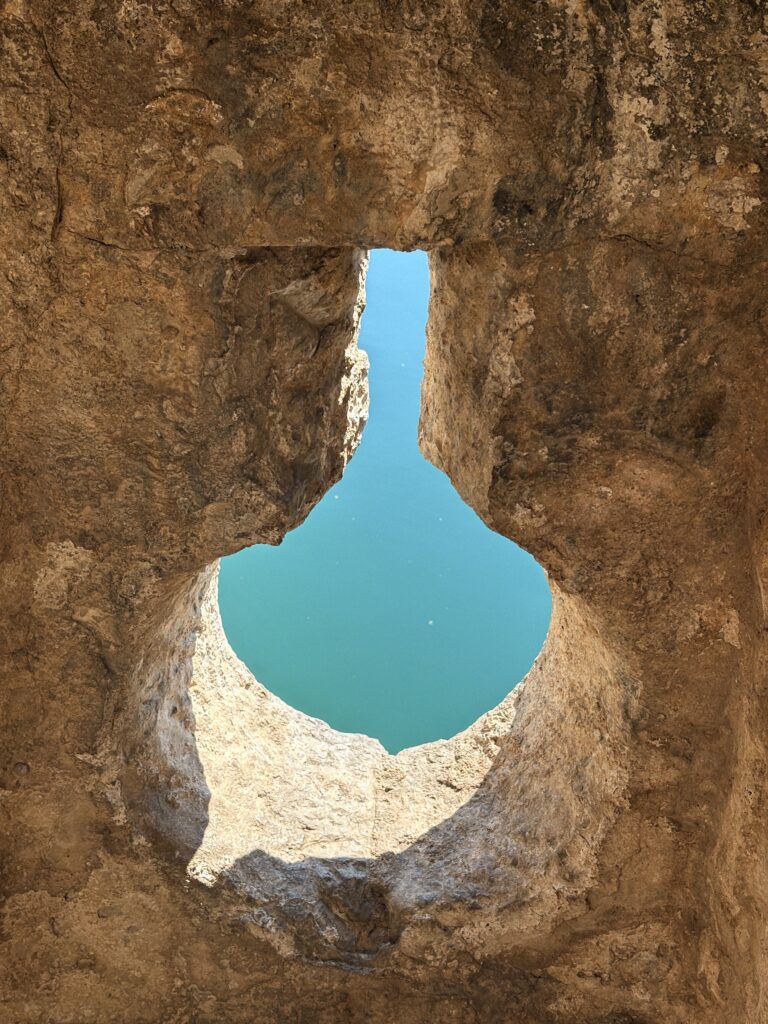
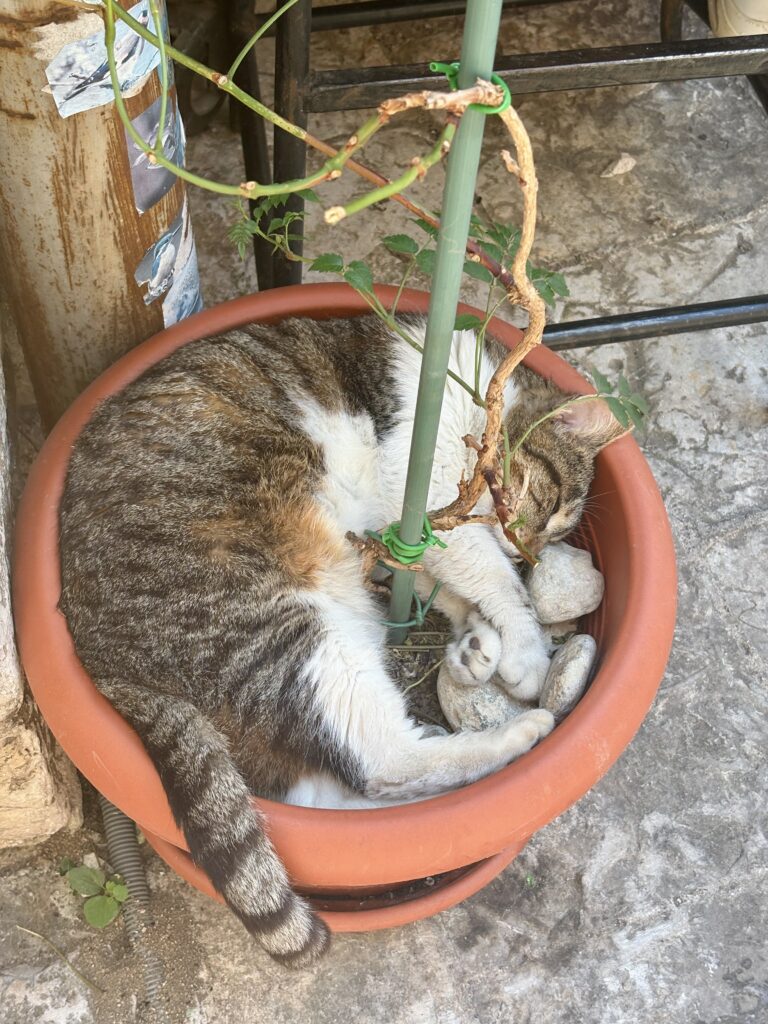
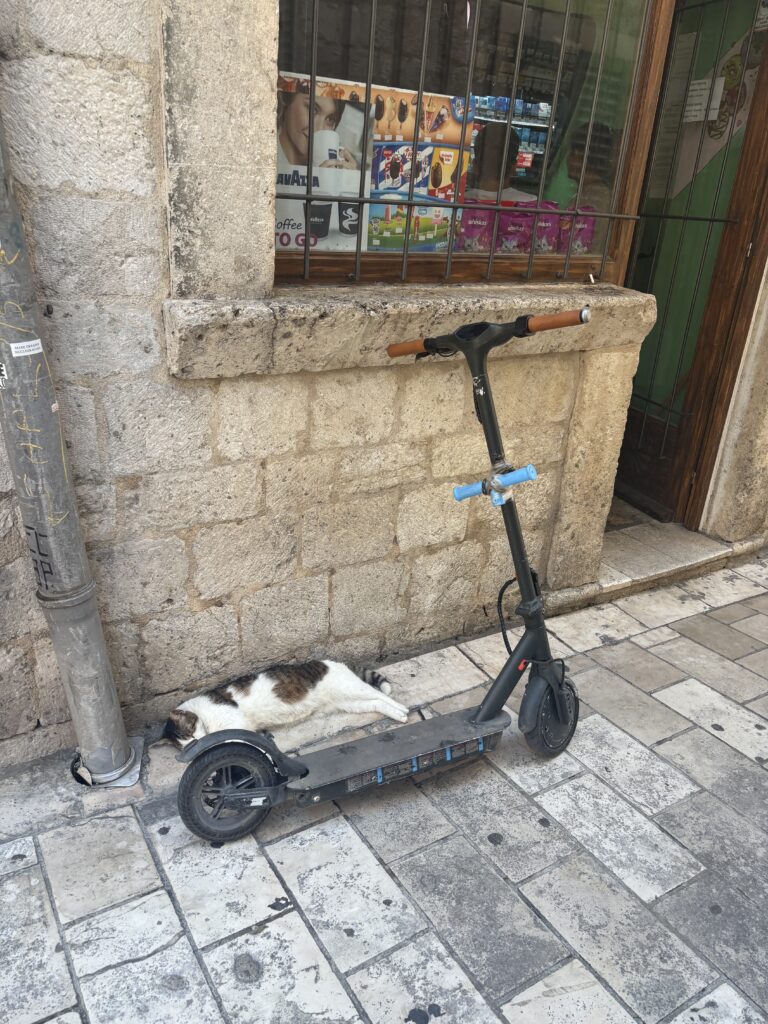
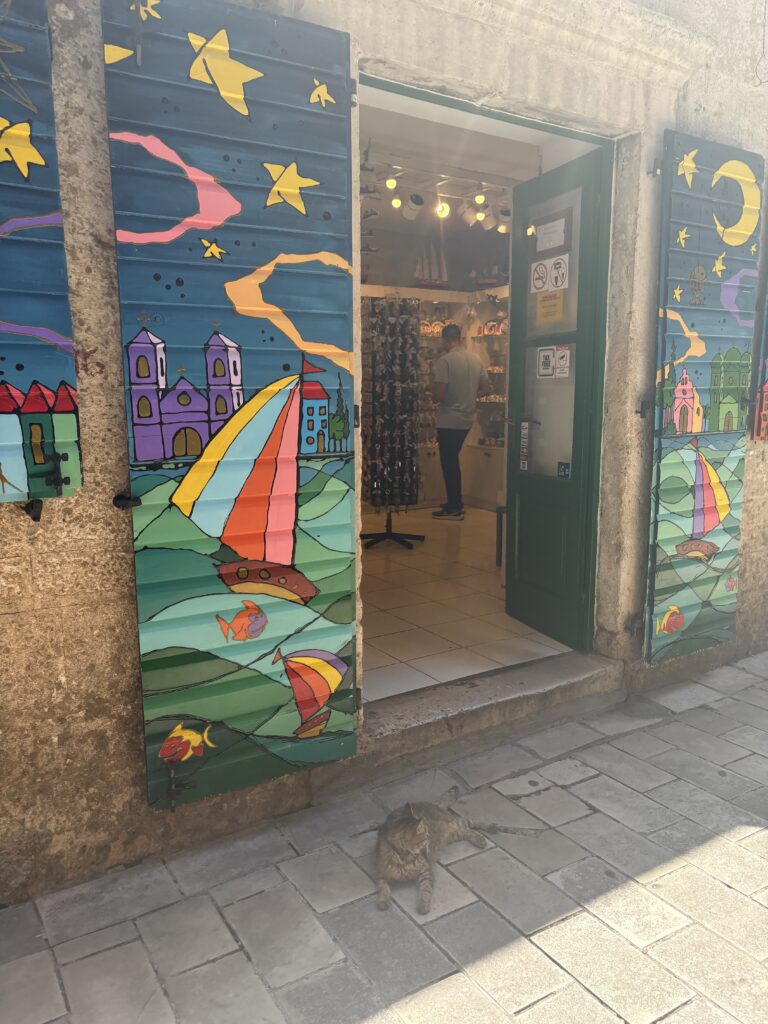
Day 6 – Towards Bosnia & Herzegovina
We headed towards Bosnia & Herzegovina, more precisely to Mostar. Kotor to Mostar is a 3:30h drive, but it’s a very scenic drive. We didn’t have any issues during border crossing and there was not even a line when we went. While it is not an issue on the roads, be aware that Bosnia still has mines, so for your own safety don’t venture hiking in unmarked areas.
Mostar
Mostar is a small city, but it’s also full of life. We went to the Koski Mehmed Pasha Mosque, from which you have amazing views of the Mostar Old Bridge.

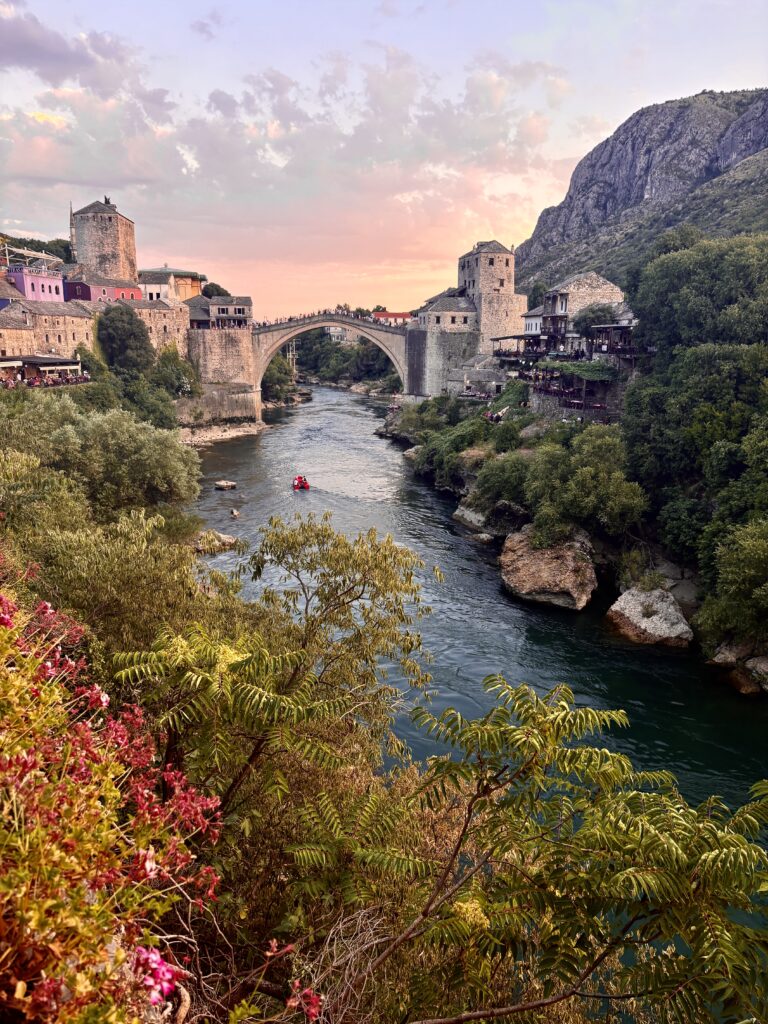
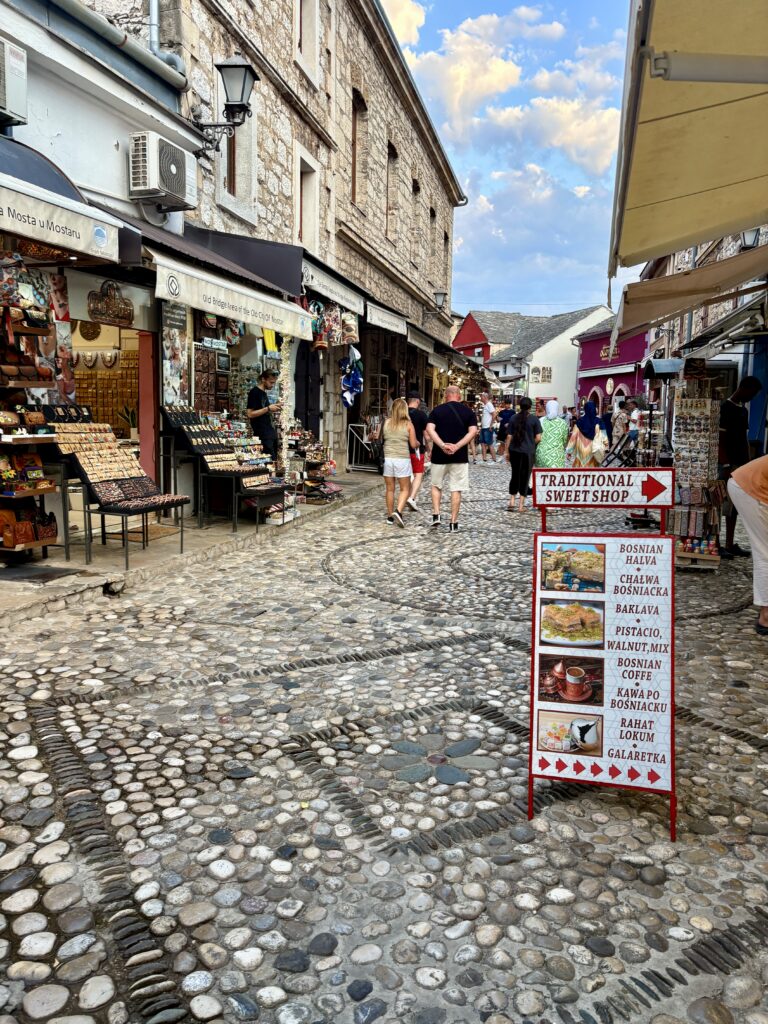
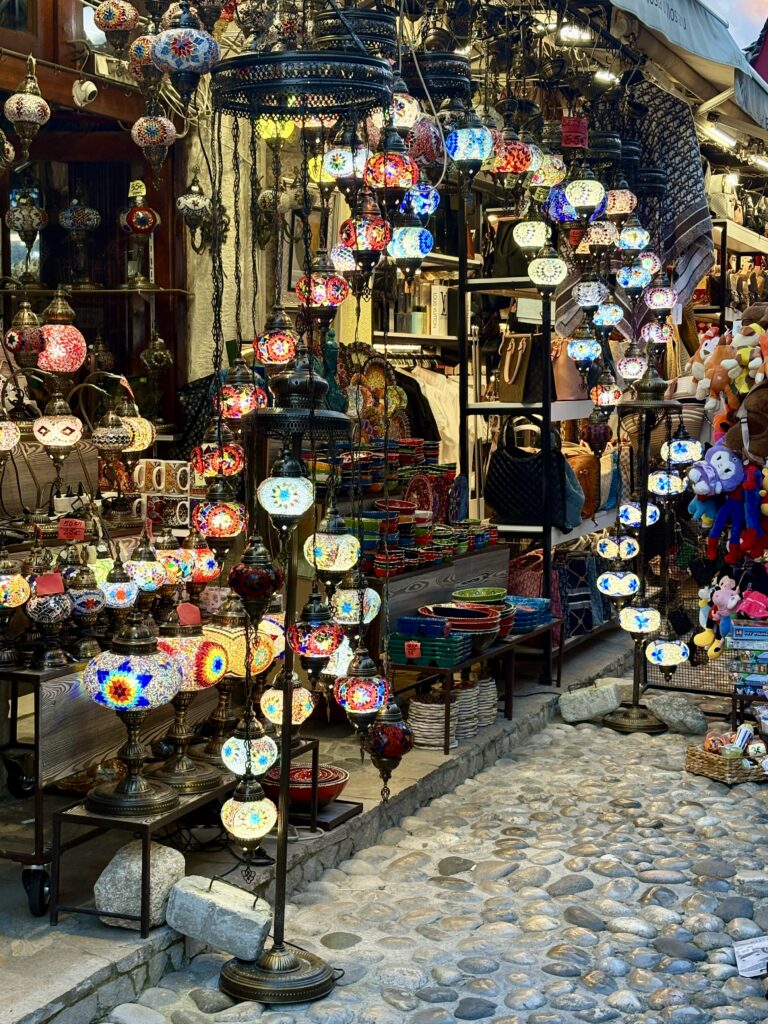


Mostar is a great place for souvenir shopping and I had the impression that they had a better choice and prices than what I later saw in Sarajevo. They had many souvenirs similar to what I saw previously in Turkey (colorful lamps and decorated cases), as well as copper jewelry and beautifully decorated coffee sets.
While you don’t see it in the city center, Mostar has a dark history during the war in the early 90’s. We visited one store where a man showed us a video of the destruction of the old bridge (the current one is a reconstruction) and recalled his own experiences, clearly still very affected by what he lived through. Learning this part of the Bosnian history is important to understand how this place came to be. If you pay attention, you’ll see the remnants of the war in some of the buildings.

Sarajevo
Around 2 h from Mostar is the capital city of Bosnia & Herzegovina, Sarajevo. Sarajevo has been of great historical importance – the assassination of Archduke Ferdinand was the starting point of WWI, and during the Yugoslav wars, the city was sieged for over 3 years.
The city center of Sarajevo is quite compact and easy to visit in one afternoon. It has, however, many fascinating history museums, so depending on your own interests you could spend here a few days. We parked our car near the Latin Bridge, where the Archduke Ferdinand was shot and read the commemoration plate of the event. Then, we headed towards the main street passing by Tašlihan, the ruins of an Ottoman caravanserai, and headed towards Baščaršija, the market place, with many souvenir stores. We took a photo near the Sebilj fountain and headed towards the Sacred Heart Cathedral.

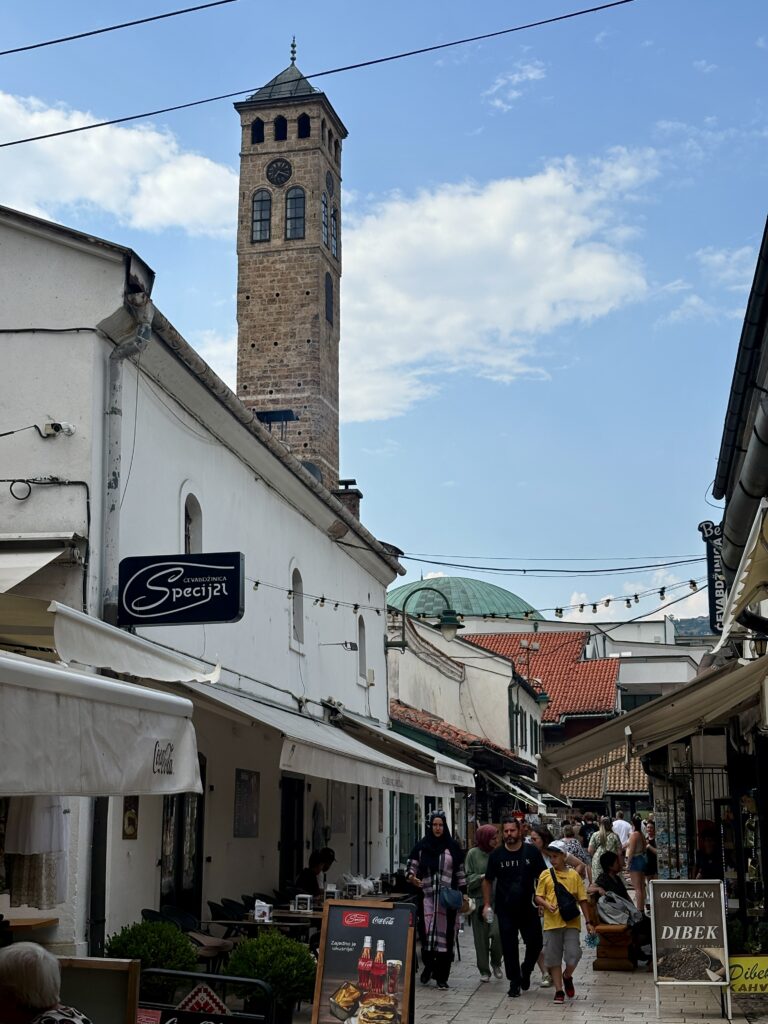



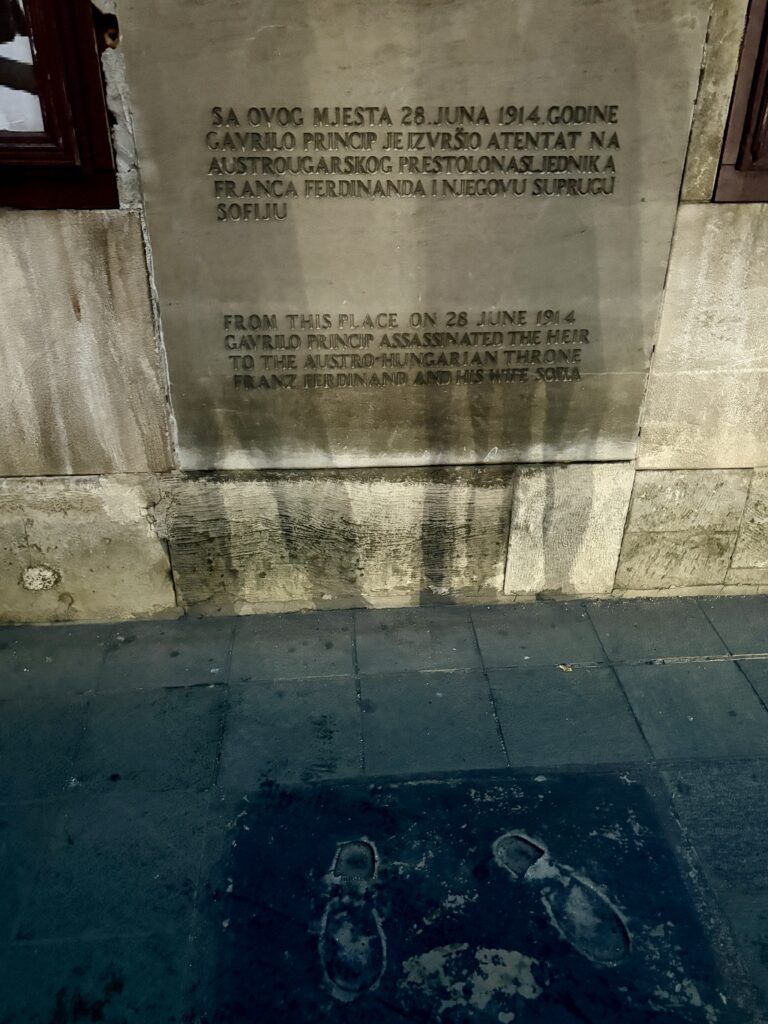
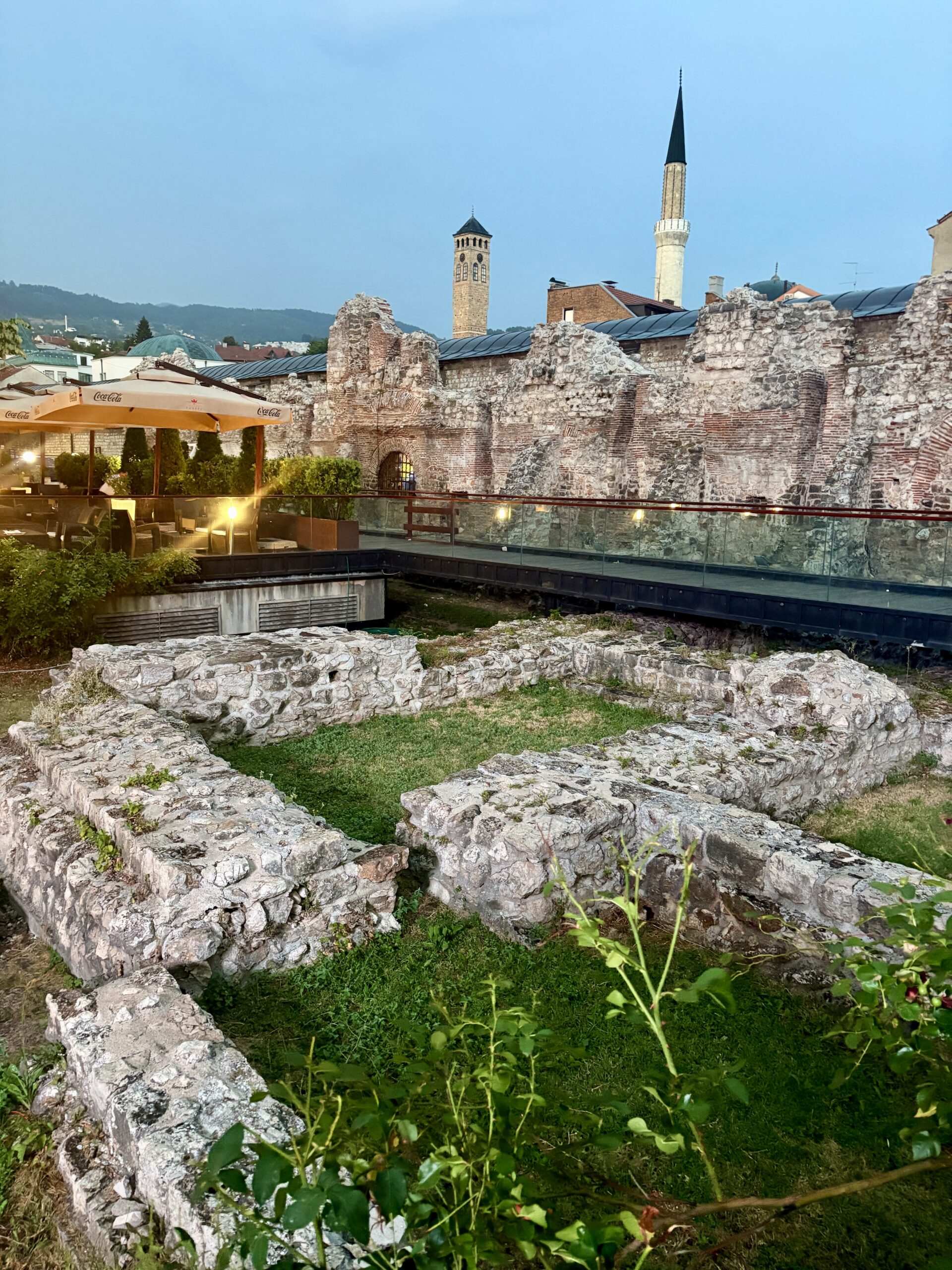

Our last stop was the Gallery 11/07/95, which has an exhibition about the genocide in Srebrenica, when more than 8,000 people were mass killed. It’s a hard to watch exhibition, with impactful images of the siege and the massacre that took place. I would strongly recommend taking the audioguide, as it gives many details about the event and the victims. The visit takes around 1,5 h and costs 24 KM per person with the audioguide.

After the exhibition we wanted to take the cable car to see the views from the city, but a storm started and we didn’t have the chance to go there, although the photos from uphill look very promising.
Day 7 – From Sarajevo to Belgrade
This day I said farewell to my friends and headed to the Tunnel of Light for a short visit before my flight to Belgrade.
The Tunnel of Light is located right behind the airport. It was the tunnel that residents of Sarajevo were using to escape the city during the siege and bring in supplies. Before the construction of the tunnel, people could only leave the city running through the 400 m of the airport runway, a very dangerous process during which many were injured or killed. That tunnel proved to be key for the survival of the city, as it was their only connection with the world around them. The entrance to the tunnel costs 20 KM (cash only) and you can use wifi to download the audioguide for 2 USD. Once again, I would recommend getting the audioguide as it provides very interesting information about the siege and how people survived it.
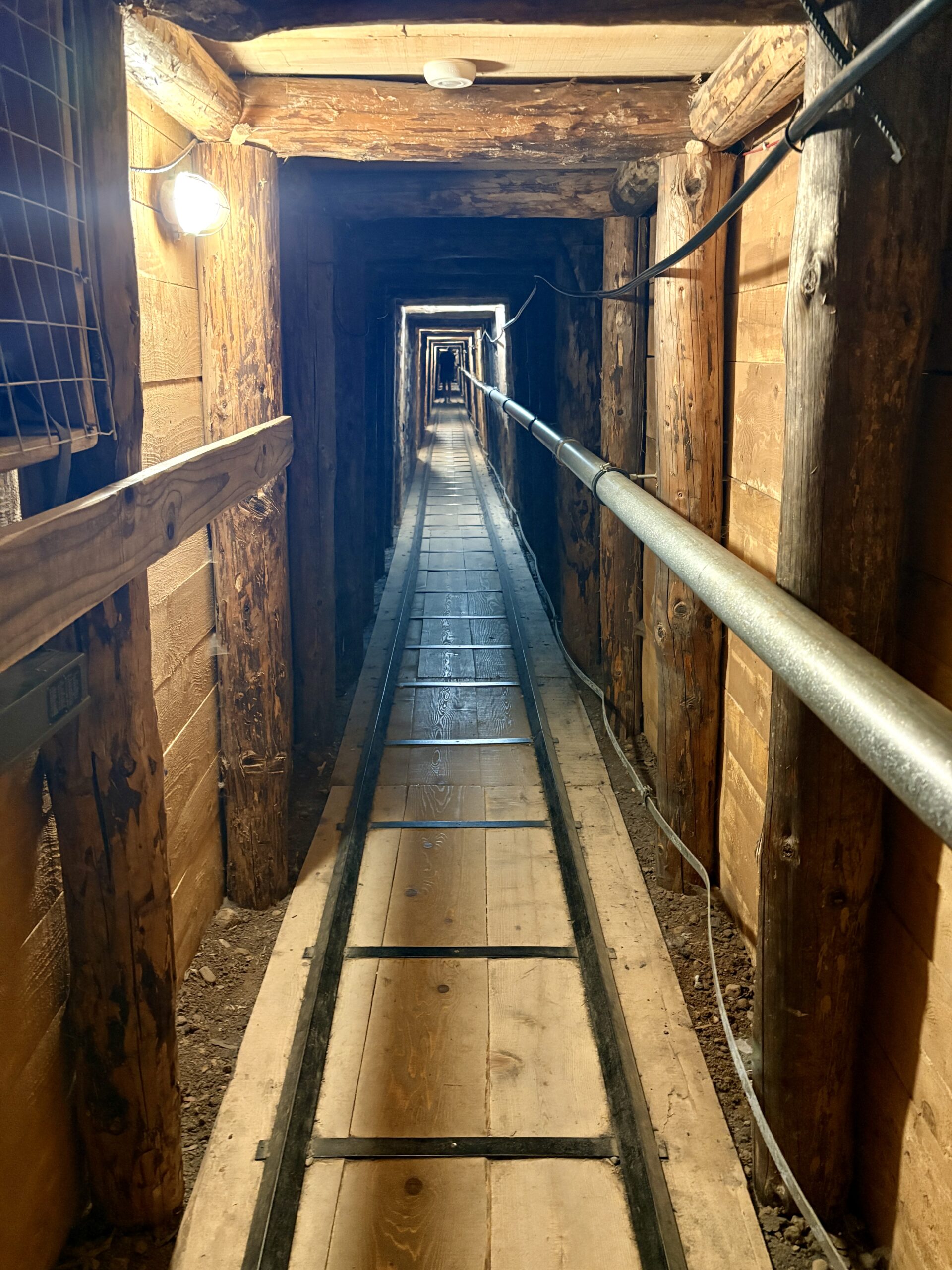
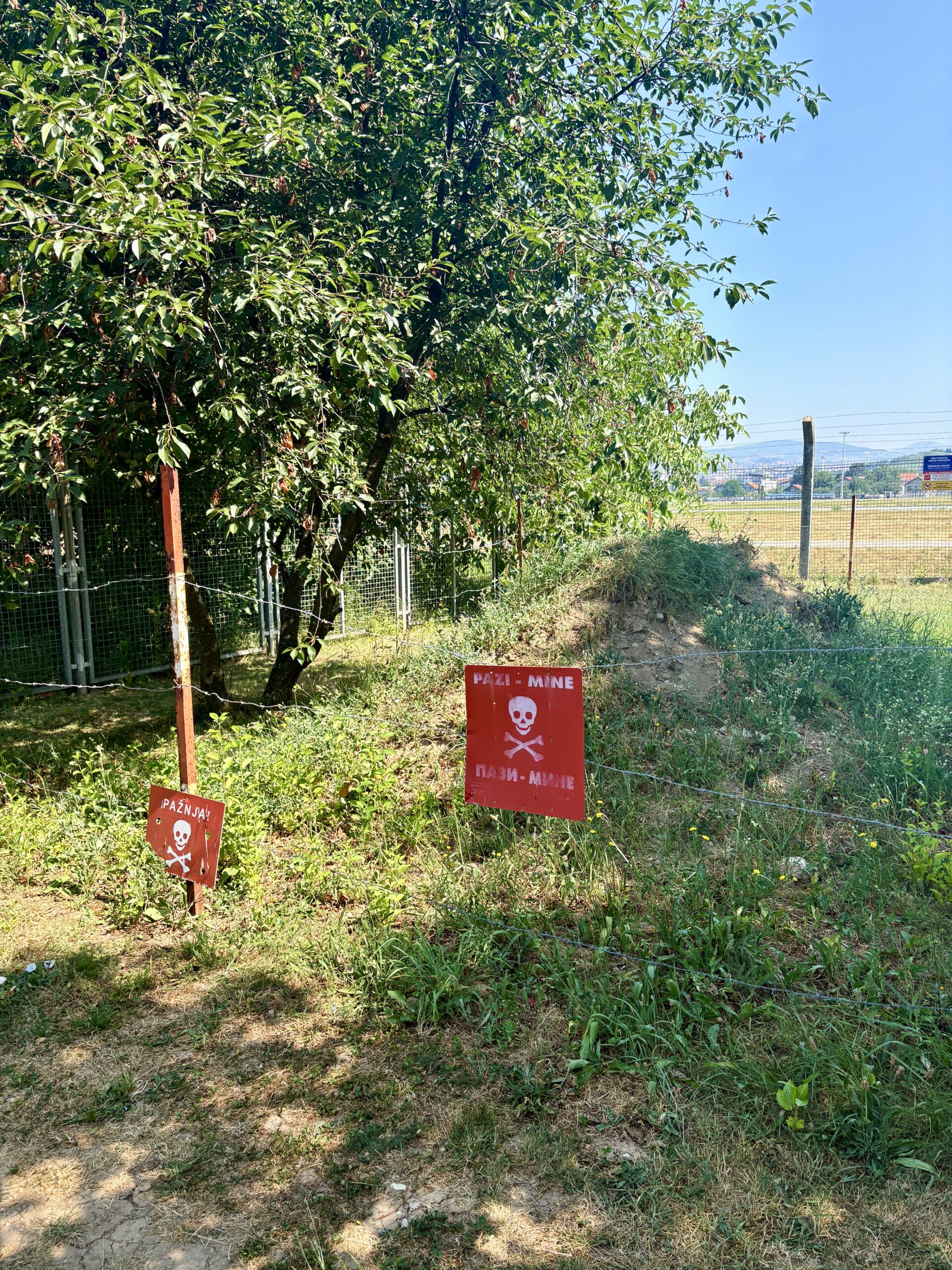
Belgrade
Belgrade is one of the oldest continuously inhabited cities in Europe, and was the capital of Yugoslavia. The city has an interesting mix of buildings from different ages of the city, including royal residencies in the 19th century, and the communist era. To transfer from the airport to the city, I took the A1 transfer bus, which costs 400 RSD (around 4€) and left me in the city center. Something I learned is that public transport in Belgrade is free (confirmed by the hotel receptionist), which is extremely convenient and simplifies the use of public transport.
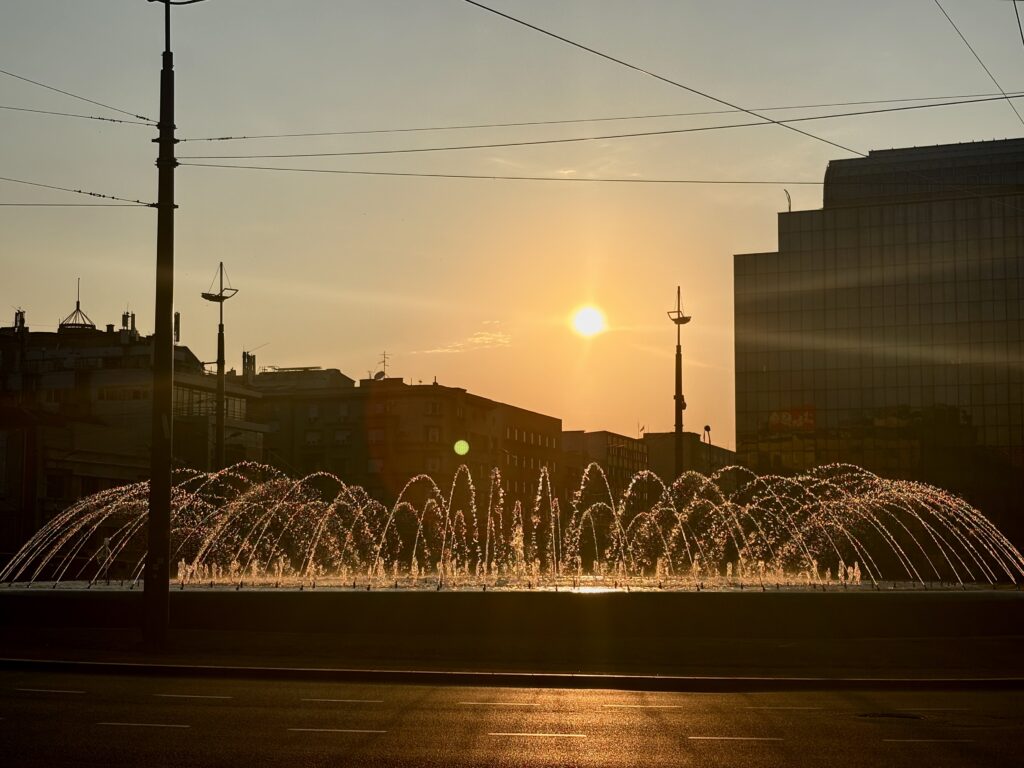
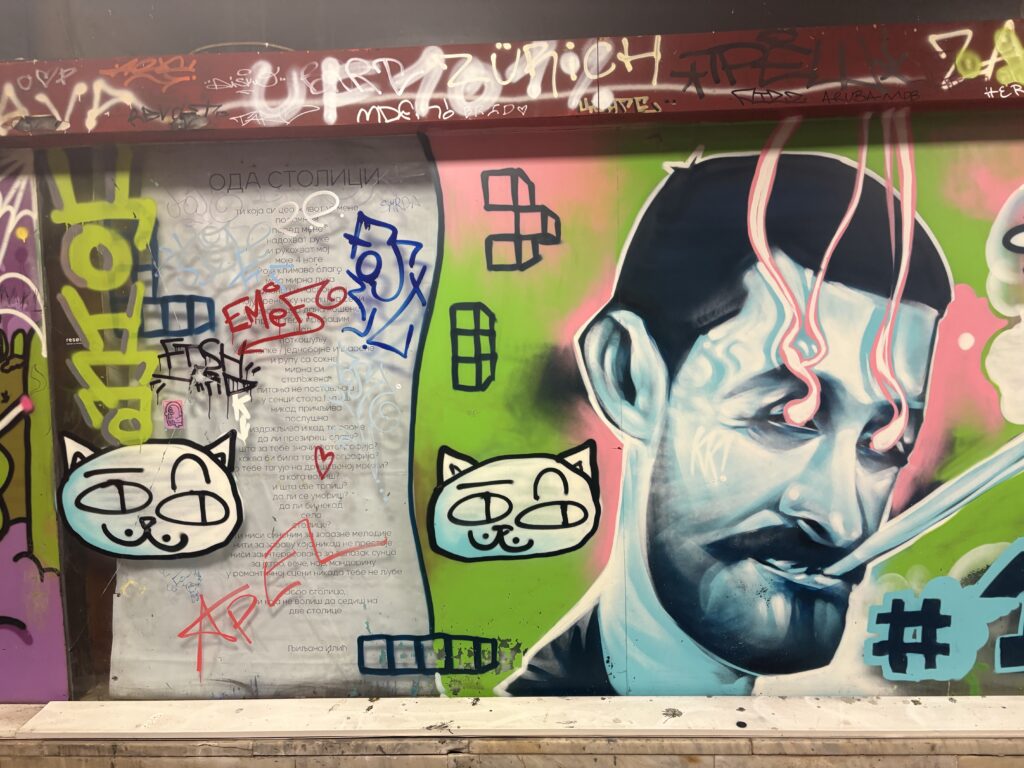
It was already pretty late in the day when I arrived, so I only had time to visit the Cathedral of Saint Sava, a magnificent orthodox church, the largest of its kind in the Balkans. The cathedral’s construction started in 1935, but was postponed due to WWII, so the it was only opened in 2004.
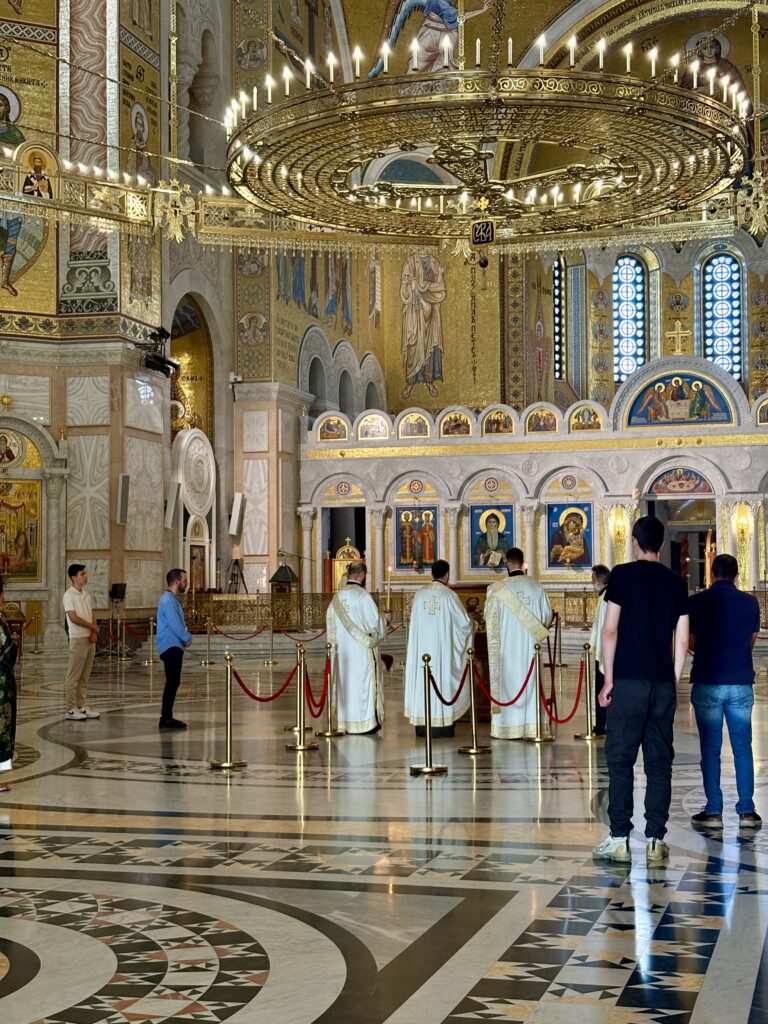


After the visit to the church, I went to the Republic Square. The square itself has the theater and a museum, and is surrounded by lively pedestrian streets, filled with stores and restaurants. I was craving something with more vegetables that the traditional Balkan food, so I ended up in Curry Souls, a fusion Sri Lankan restaurant, which was a great option!
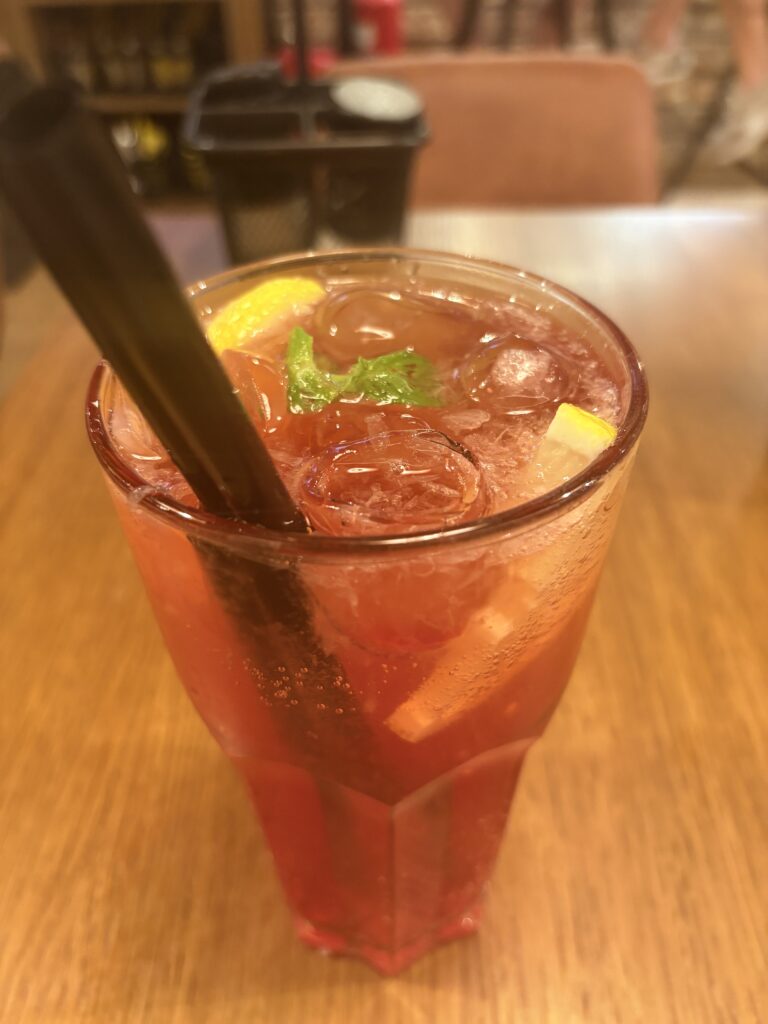
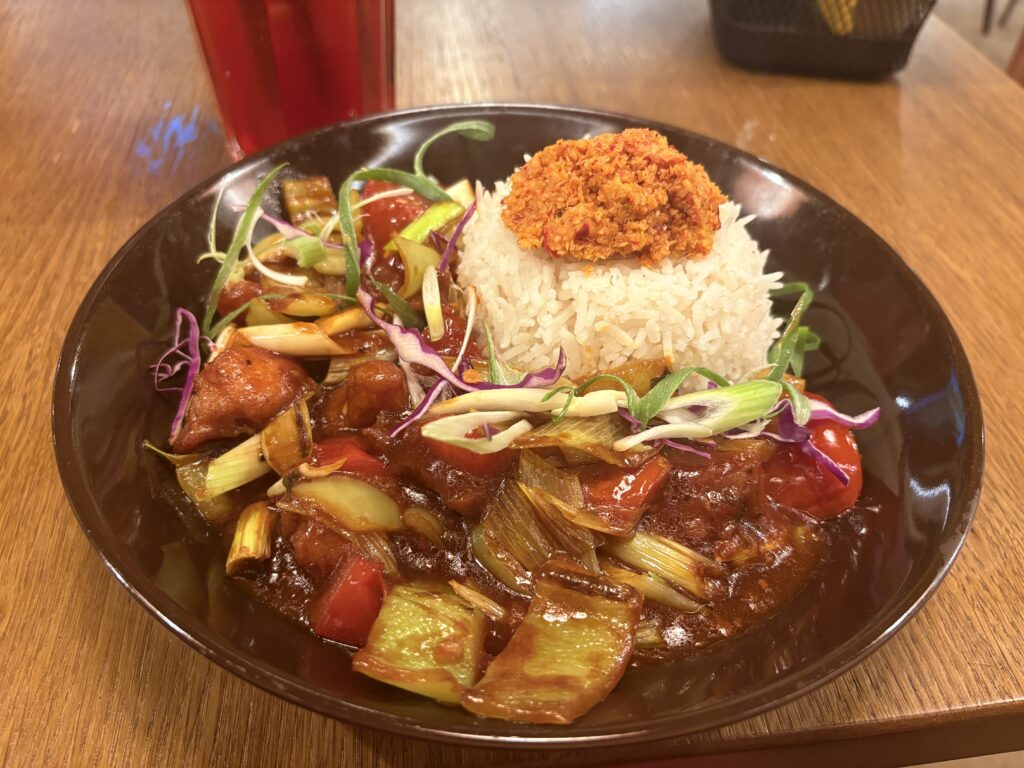
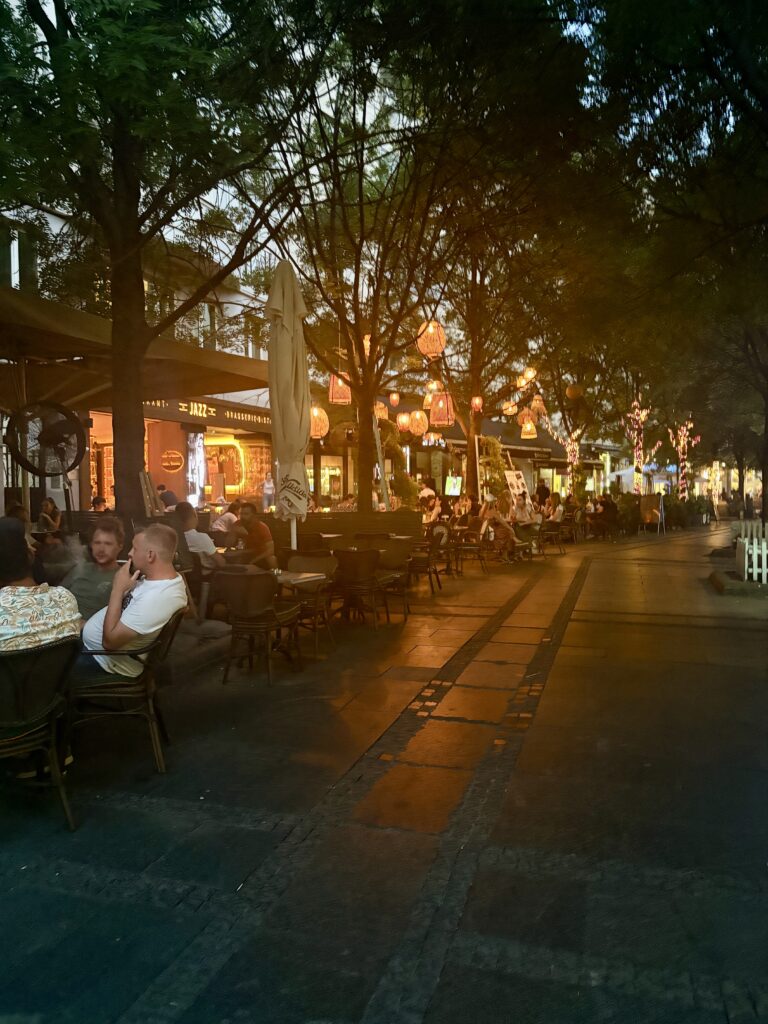
Finally, I reached my hotel, the Five Points Square – City Center B&B. The room was comfortable and clean, and I found the decoration quite interesting (an ancient photograph of some people). The views and location are great too! My only criticism is the entrance – the hotel is accessible through a rather old elevator to the 5th floor, which makes you wonder if you’ll be regretting your choice. I did not, I had all the amenities and was actually happy I was staying there two nights (my whole stay in Serbia).
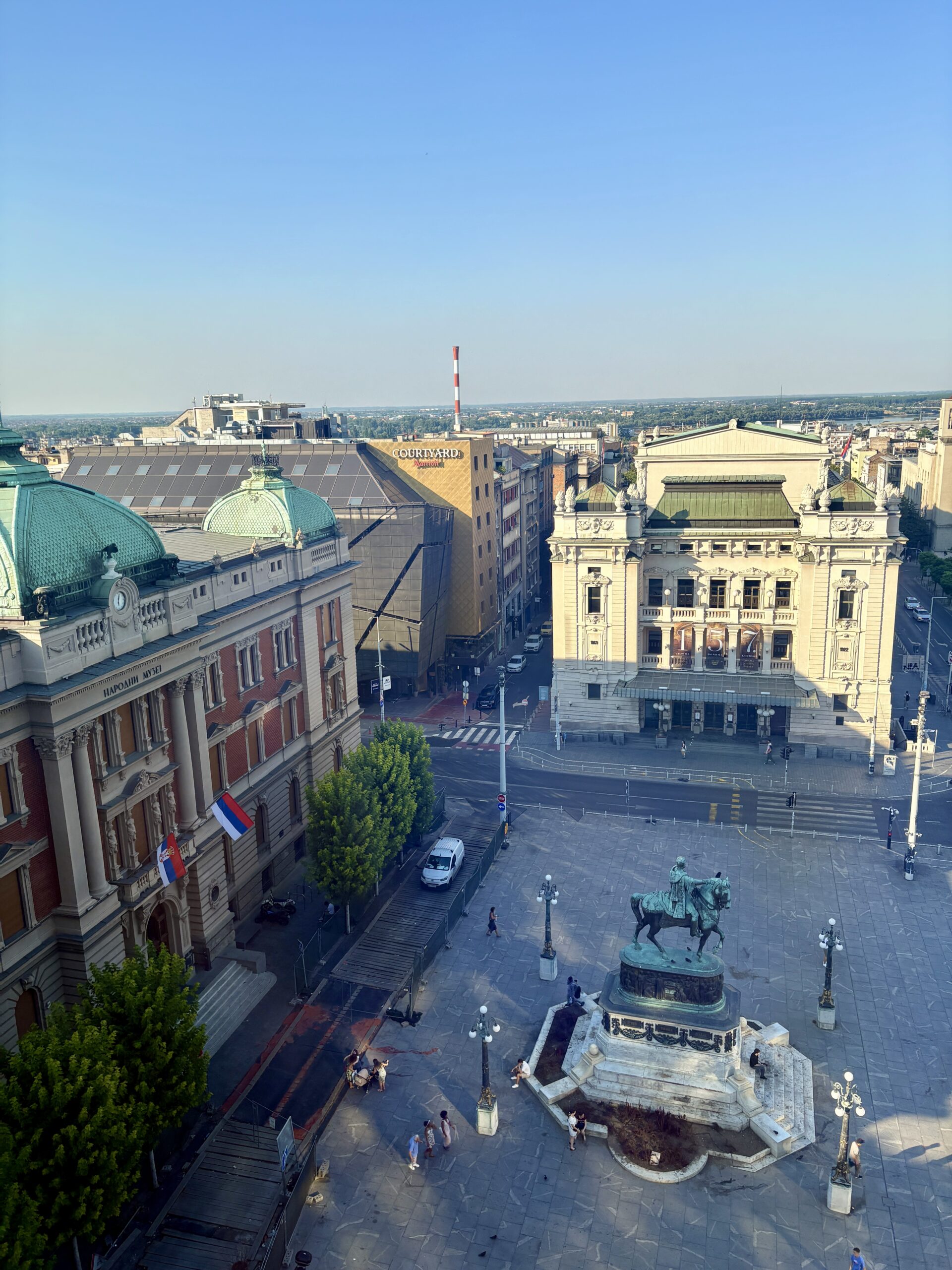

Day 8 – Visit to Novi Sad, Serbia
When traveling, not everything always works out, and this was -for me- one of those days.
Belgrade
In the morning, I went on to visit some of the parts of Belgrade I was still interested in seeing, such as taking a look at the Hotel Moskva, and the Stari Dvor and Novi Dvor. Then, I walked to the St Mark Orthodox Church (still closed as it was before 8 am) and contemplated a building bombed by the NATO that is kept as a memorial.


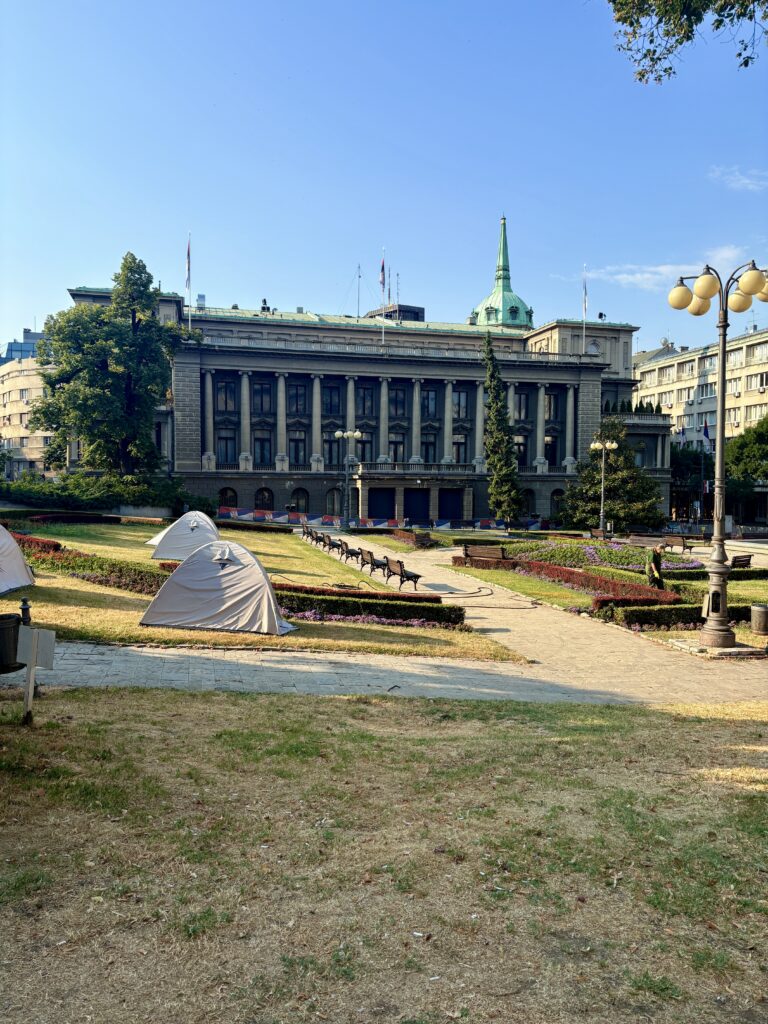
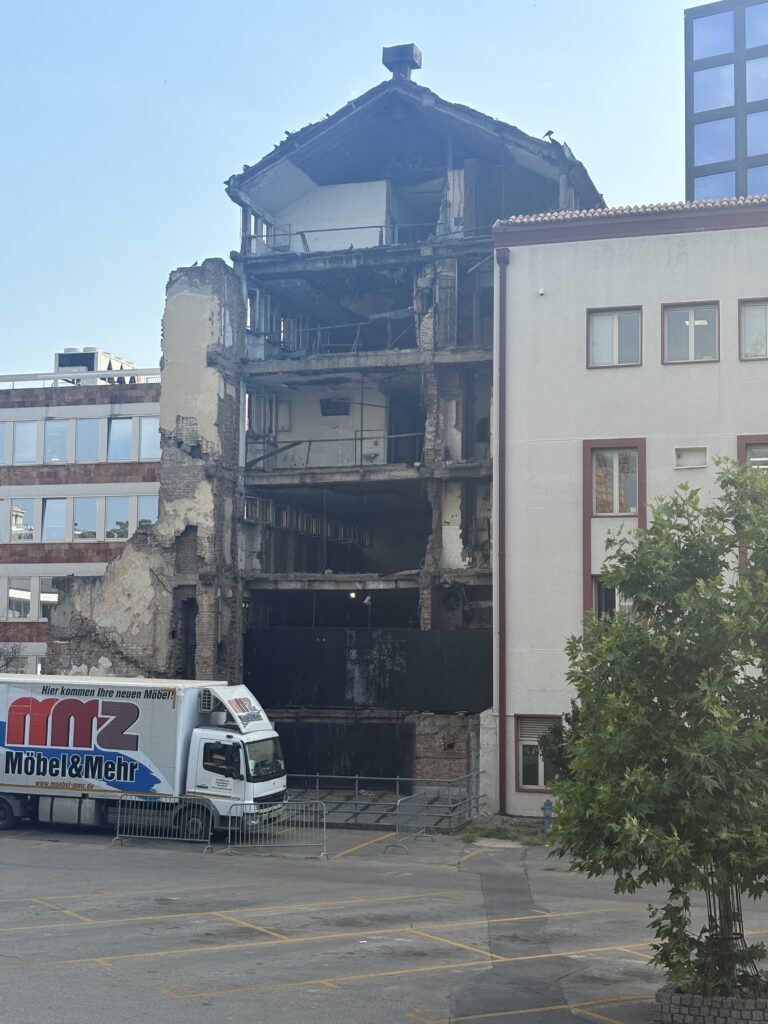

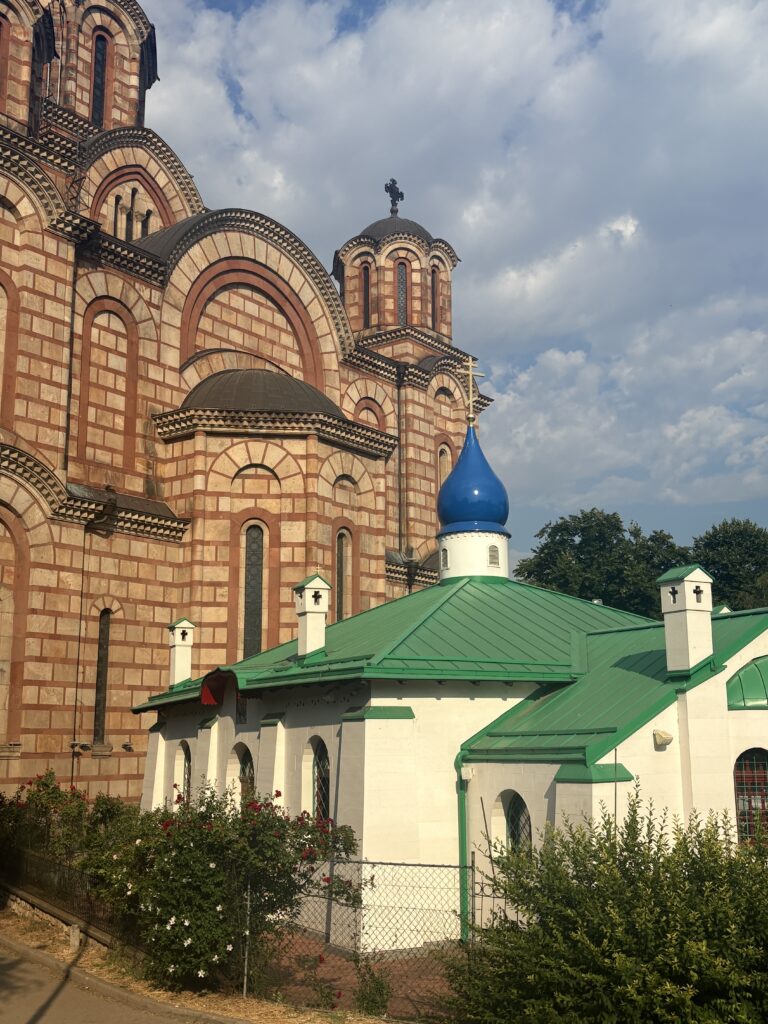
The misadventures in Novi Sad
After, I headed towards the train station. Be aware that the location of the new train station is different than the old train station, which is no longer functional. The new one is on the other side of the river compared to the city center, and the bus 95 brings you there. Once I arrived is when my misfortunes started to happen. I couldn’t find the ticket office for the trains, and since I was about to miss the scheduled train, I ended up just buying a bus ticket which was departing shortly after. However, the bus did not depart shortly after, but only after almost an hour delay. I couldn’t see the delay announced, so I asked a few times the person in charge.
Finally, they told me that the bus was arriving in 2-3 min to the platform and that it was the red bus. So when I saw the red bus to Novi Sad arriving to my platform, I jumped into it and took my assigned sit. Big mistake. Apparently, that was the wrong company – something I only learned once the bus departed and a controller checked the ticket. I had to pay for the ticket again, as the controller was saying that my bus had changed platforms. Not only did I pay again the ticket, but I ended up in a slower bus and one without WiFi.
Novi Sad
While not in the best mood due to the bus mix up, I arrived to Novi Sad determined to enjoy the rest of the day. I took bus 14 to the city center (it costs 100 RSD that you can pay to the driver) and from there walked around the old town. I visited the Church of the Name of Mary, which is located in the Slobode Square, and to which you can enter but only to the corridor, as the rest is closed to tourists. Then, I strolled to the Saint George’s Cathedral, which has a stunning interior, with gorgeous stained glasses representing some historical figures. What I didn’t realize when planning the trip was that I was visiting on a Monday, so museums were closed. That certainly reduced the time I needed to see Novi Sad.

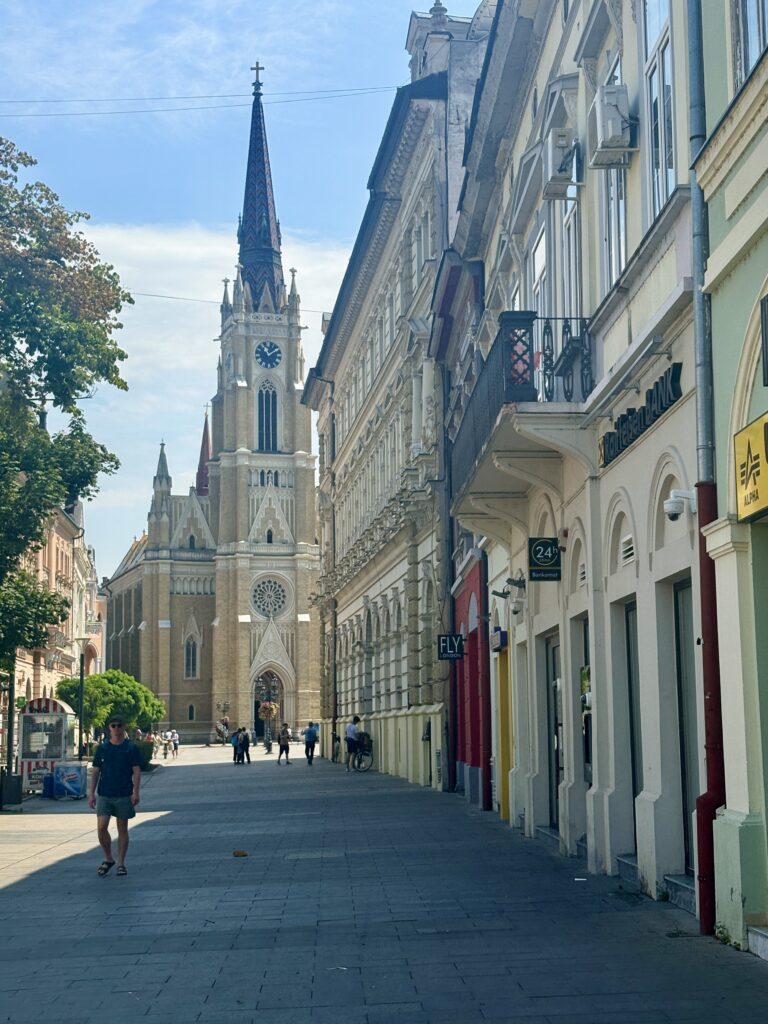

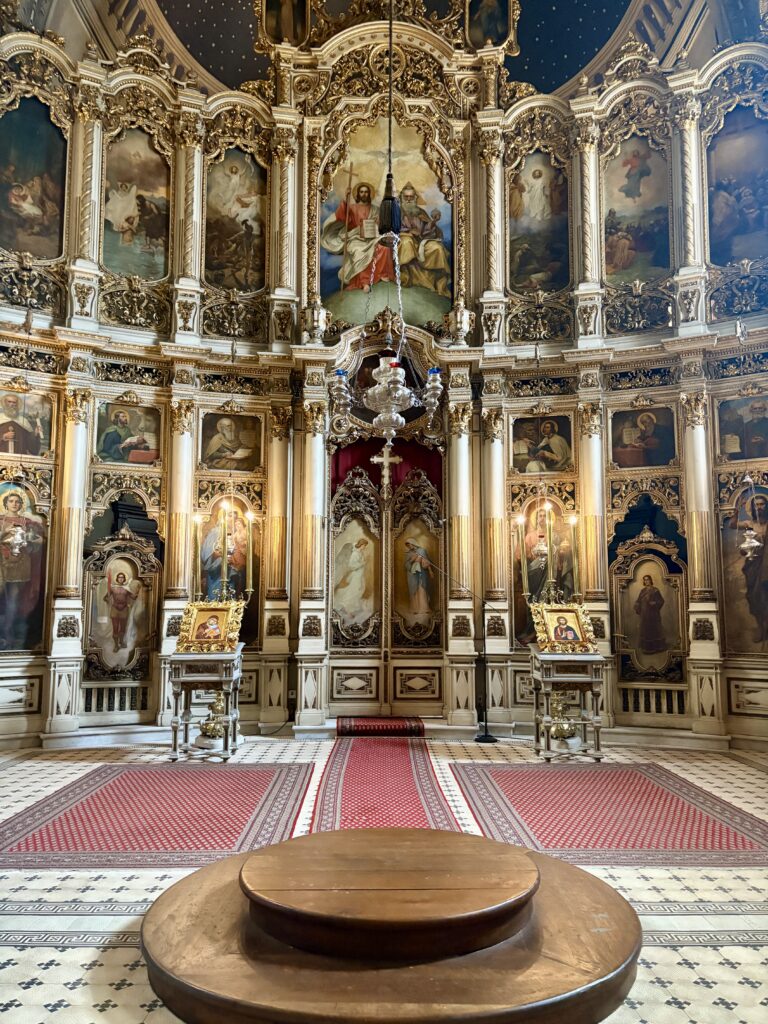


Petrovaradin Fortress
The next place to visit was the Petrovaradin Fortress, which you can see crossing the Danube. There are good views of the fortress from the bridge, so I recommend walking through it – although in summer it’s really hot to do that. The fortress was not very big, and after climbing the stairs I could enjoy the views of the city. There are a few restaurants on top, but otherwise there was not much more to see. I found out that there were catacombs, but one had to book a tour and since it was already late, I skipped.
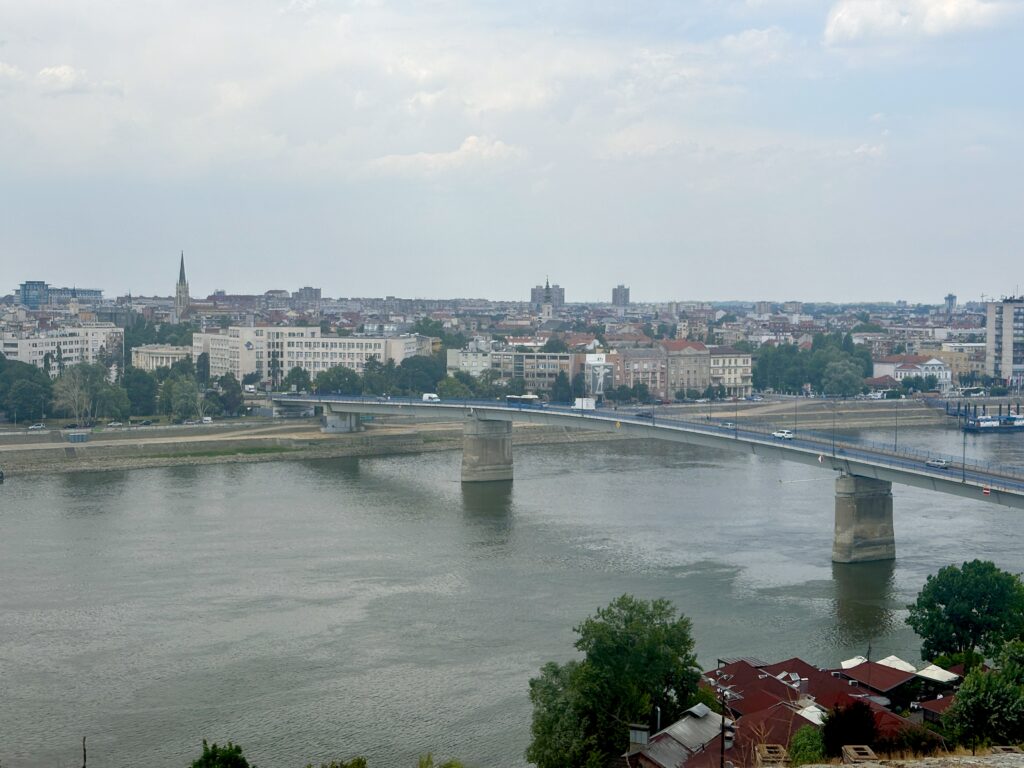
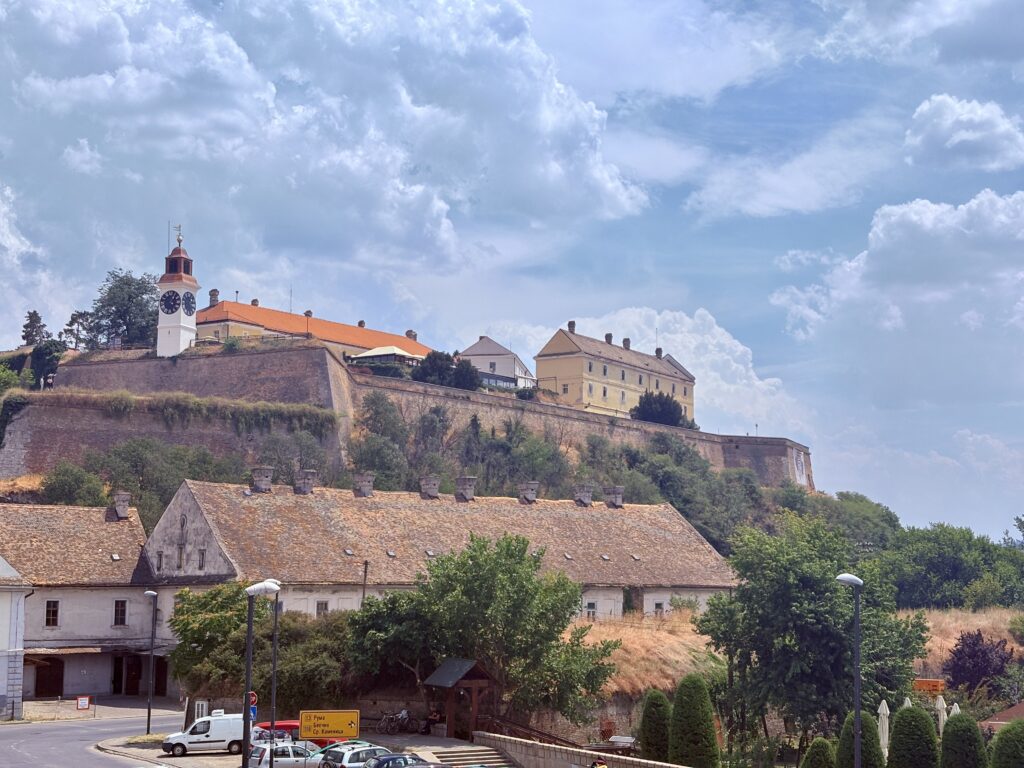
Back to Belgrade
The way back to Belgrade was equally stressful. During my morning bus ride, I had the ‘great’ idea of buying my train tickets for the evening to avoid taking the bus. That was the big mistake nº2 of the day. When I arrived to the station, I noticed that it was closed. An evening after-the-fact Google search showed that there had been an accident in November 2024 and the canopy of the station collapsed killing 16 people, which resulted in the rise of protests in Serbia against the government.
In any case, the station was still closed, and I didn’t know what to do with my tickets, as there didn’t seem to be anyone in the station to help. So I ended up in the bus station, where I was told that the train station was closed. Not knowing what to do, I ended up buying a bus ticket to Belgrade, as I wanted to visit the Nikola Tesla Museum too. So that was the second double ticket of the day. I tried to ask for a refurn of my train ticket, but the office never replied.
Belgrade fortress
Unfortunately, my afternoon bus was also late, so by the time I arrived to Belgrade the last museum tour had already started. Instead, I went to the Belgrade fortress, a must-do in Belgrade. The fortress area is pretty large, with many different activities to do during the opening times of the museum. There is also an open-air military museum, showing different types of military equipment such as tanks or cannons. The fortress has many walking areas and offers nice views of the city.

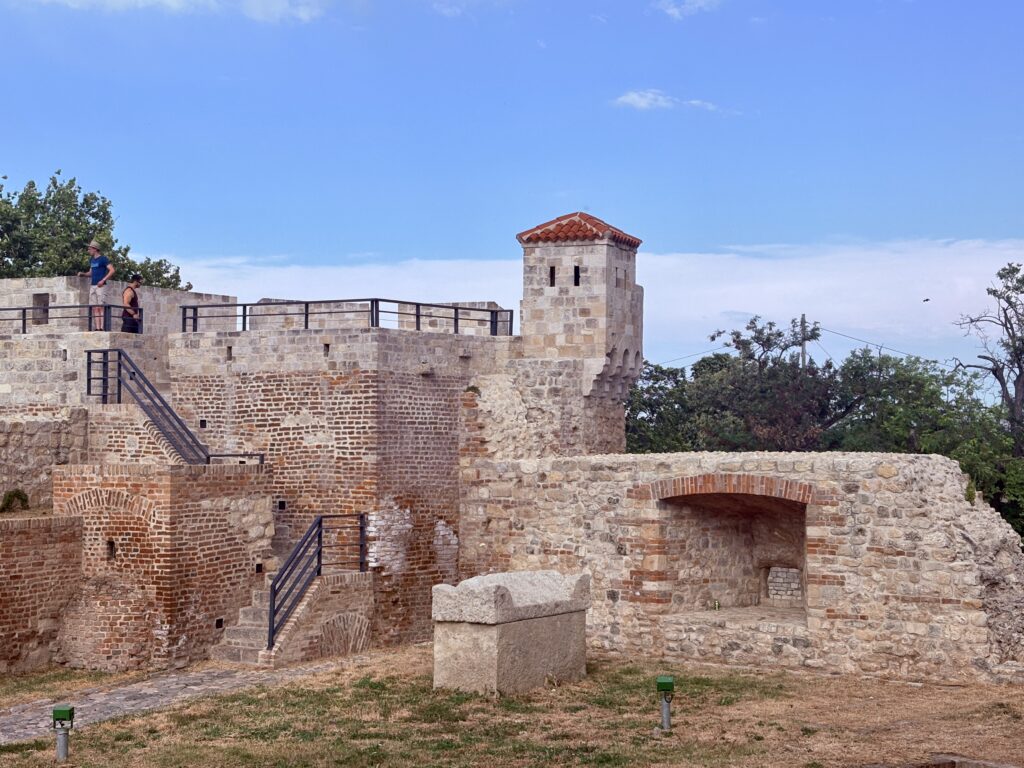

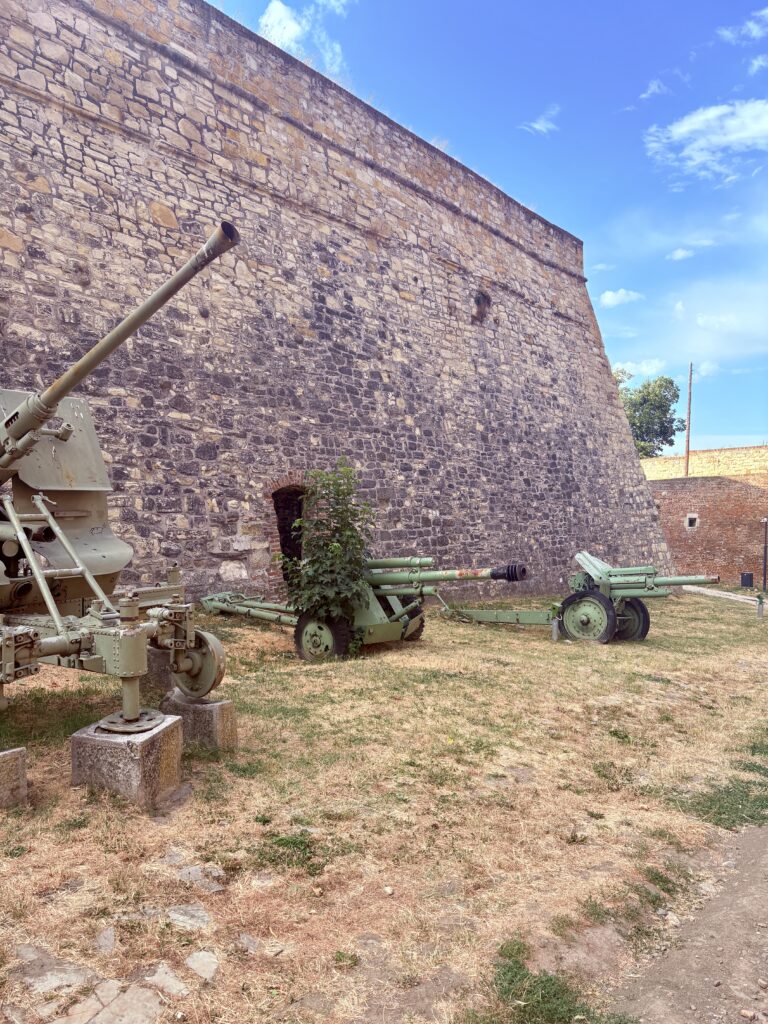
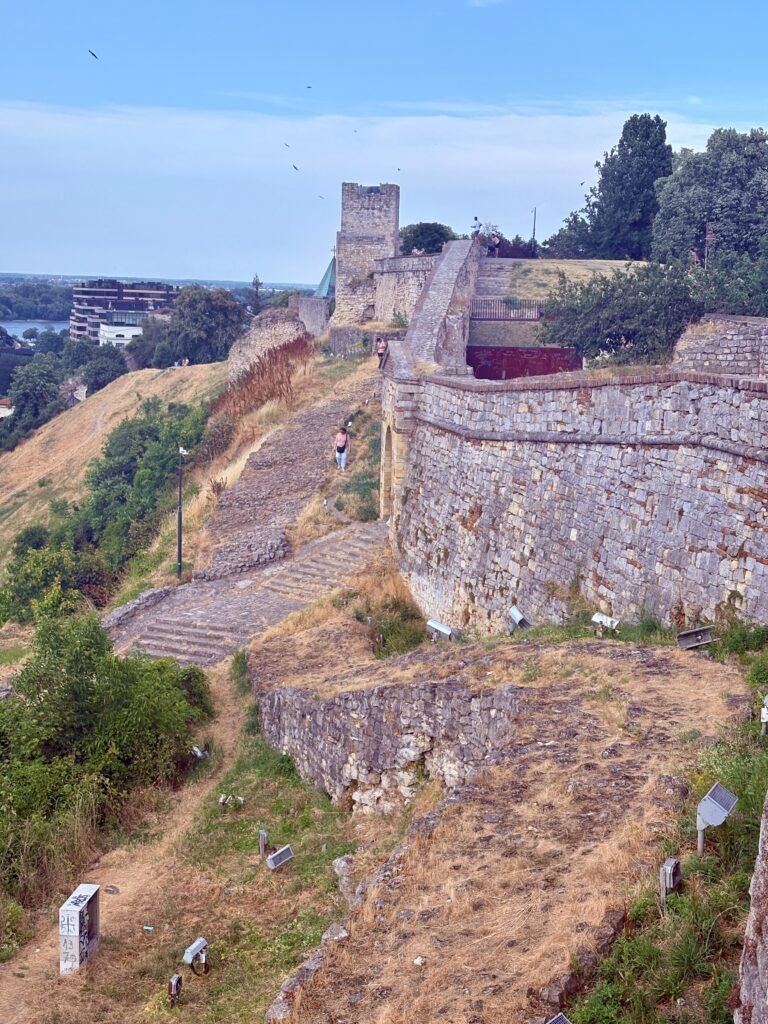
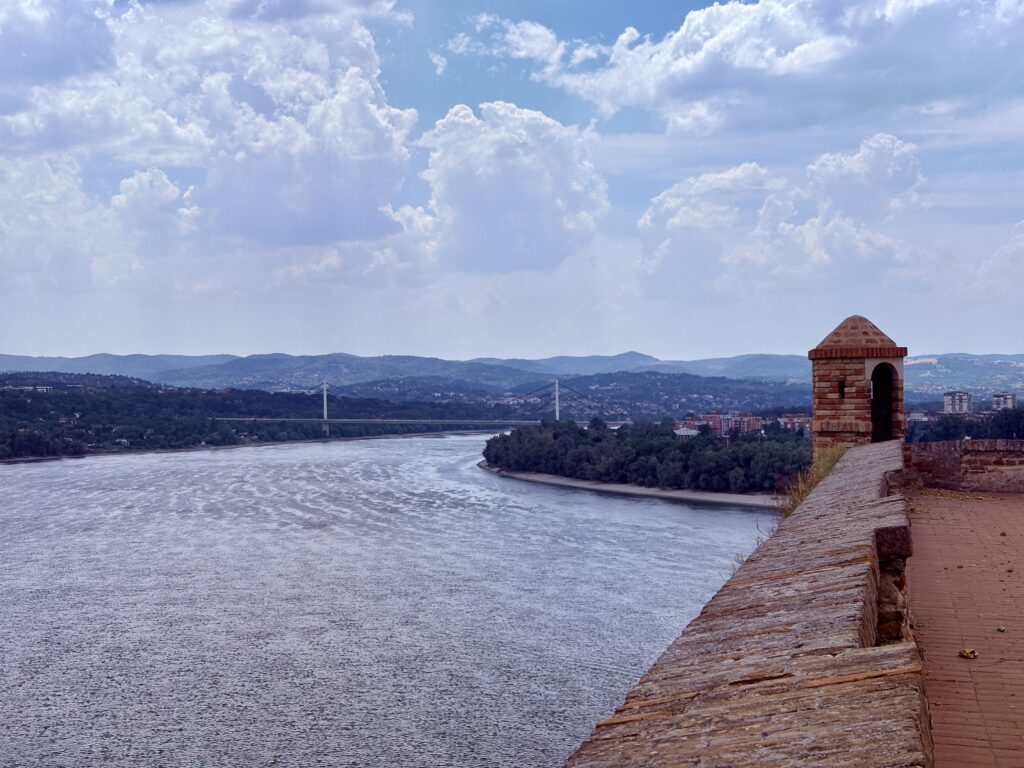
For dinner, I went to PRANA brunch, which offered avocado toasts, and had a dessert at Puffy Lil’ Pancakes, both great dinner options.

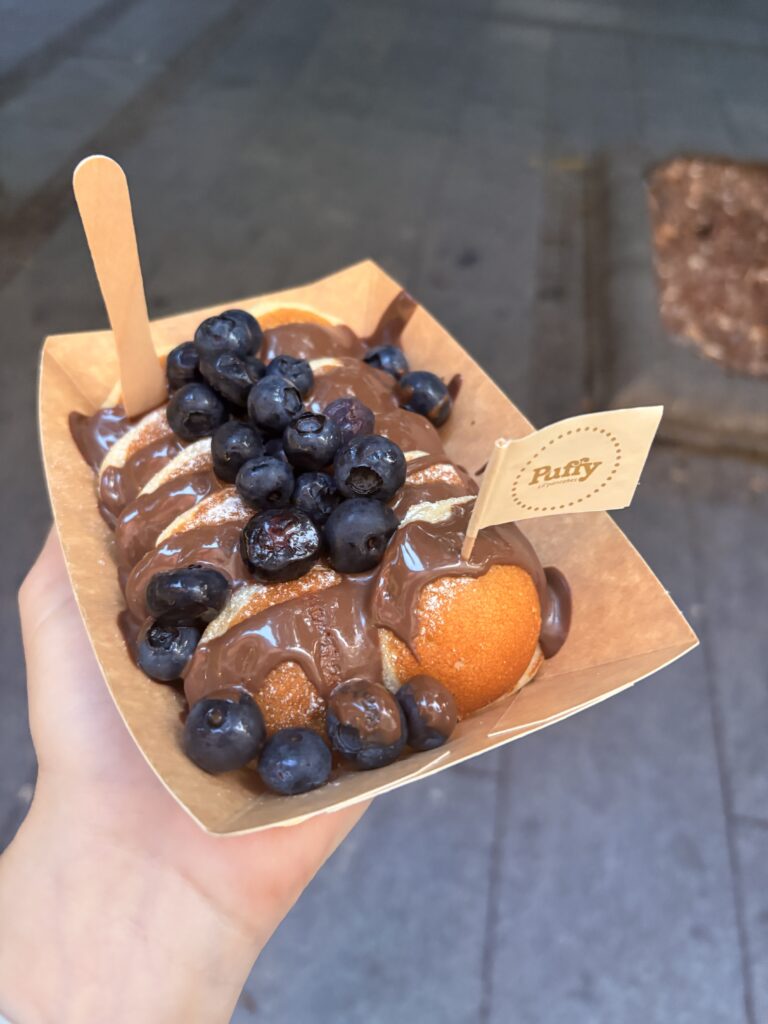
Day 9 – From Serbia to Bulgaria
Before going to the airport, there was still time to visit something, so I went to the Museum of Illusions, which was only 5 min away from my hotel and was opened at 9 am. It is an interesting museum, with two floors featuring illusions and logical games. I really enjoy optical illusions, so I had a lot of fun in this museum. Although I knew some of the illusions, seeing them in a different light and re-reading the explanations was enjoyable. The one that was the craziest for me was a small tunnel where you’d walk looking up. There was some movement in the ceiling which caused a vertigo effect, so I felt that the very fixed exit door was moving.
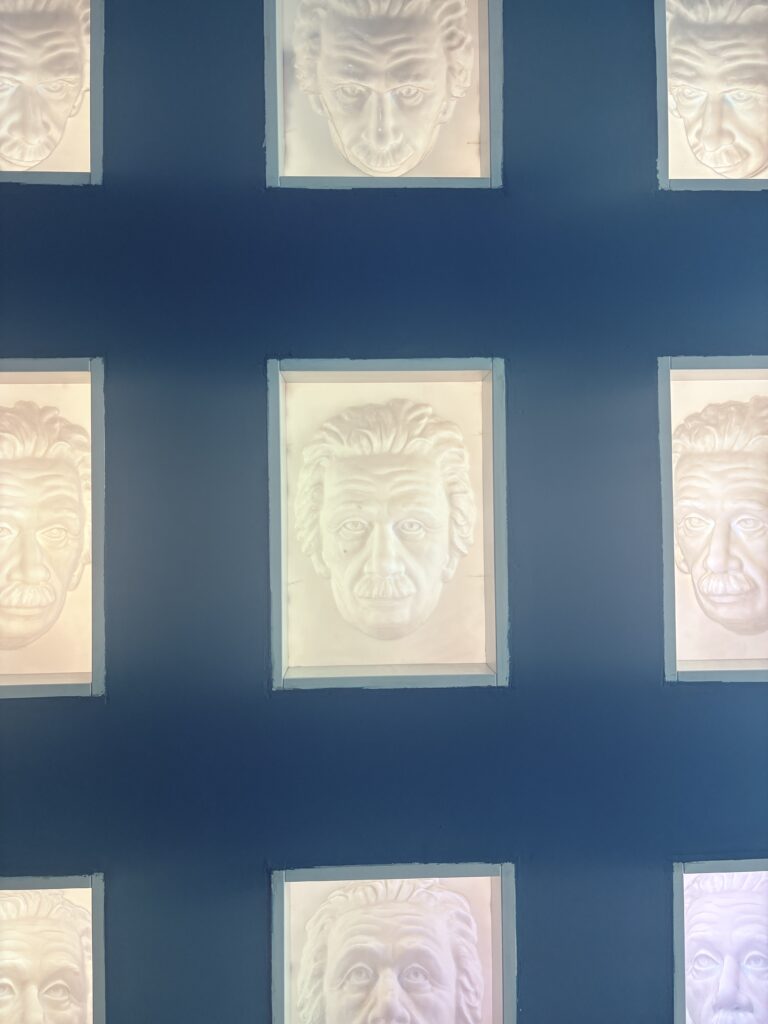
The rest of the day resulted to be quite uneventful. My midday flight was delayed 3 h due to a thunderstorm, so when I arrived it was already late afternoon. Then, I had to drive to Veliko Tarnovo, which takes around 3 h by car. On the way there, I received an alert due to a recently started wildfire not too far, but fortunately it seemed to be contained quite fast.
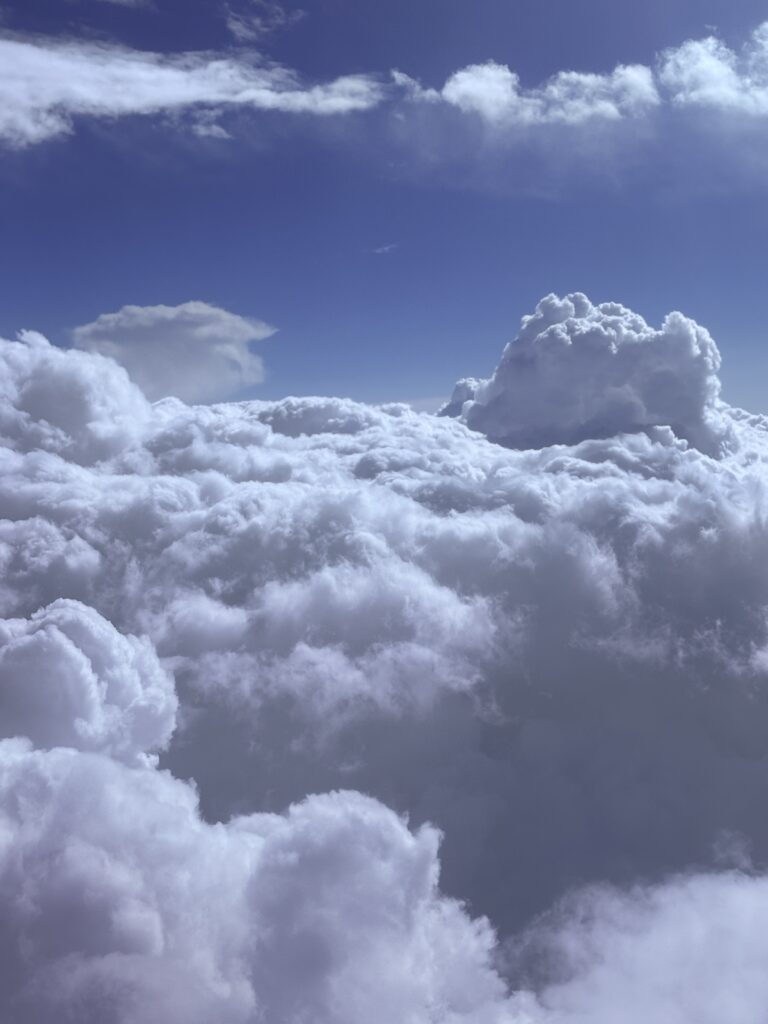
I stayed in the Hotel Concorde, a comfortable and clean hotel with helpful staff. The location of the hotel was great, and was at the perfect start for a touristic visit.
Day 10 – Veliko Tarnovo
Veliko Tarnovo – city center
I started the day walking towards the Monument of Mother Bulgaria, which honors the soldiers dead in several wars Bulgaria participated in, finishing with WWI. I continued the walk through a bridge towards the Monument to the Assen Dynasty. This monument is dedicated to the kings Assen, Peter, Kaloyan and Ivan Assen II, who librated Bulgaria from the Byzantium empire during the medieval ages. There was a gallery next to it, which was in a nice building but was still closed.
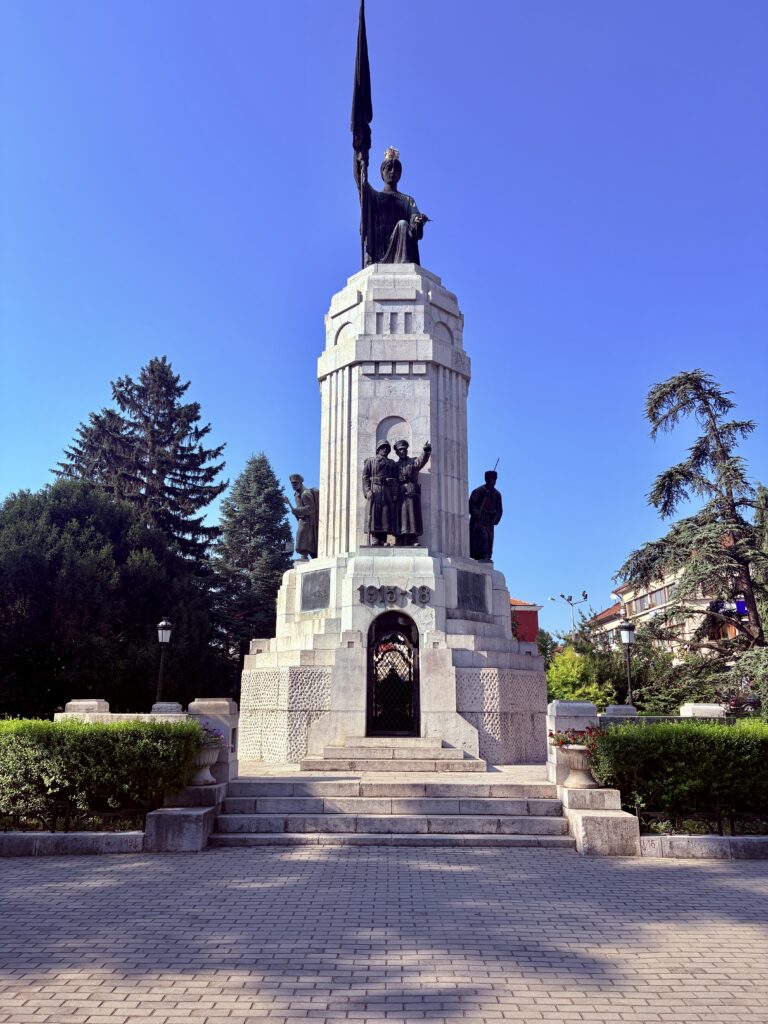

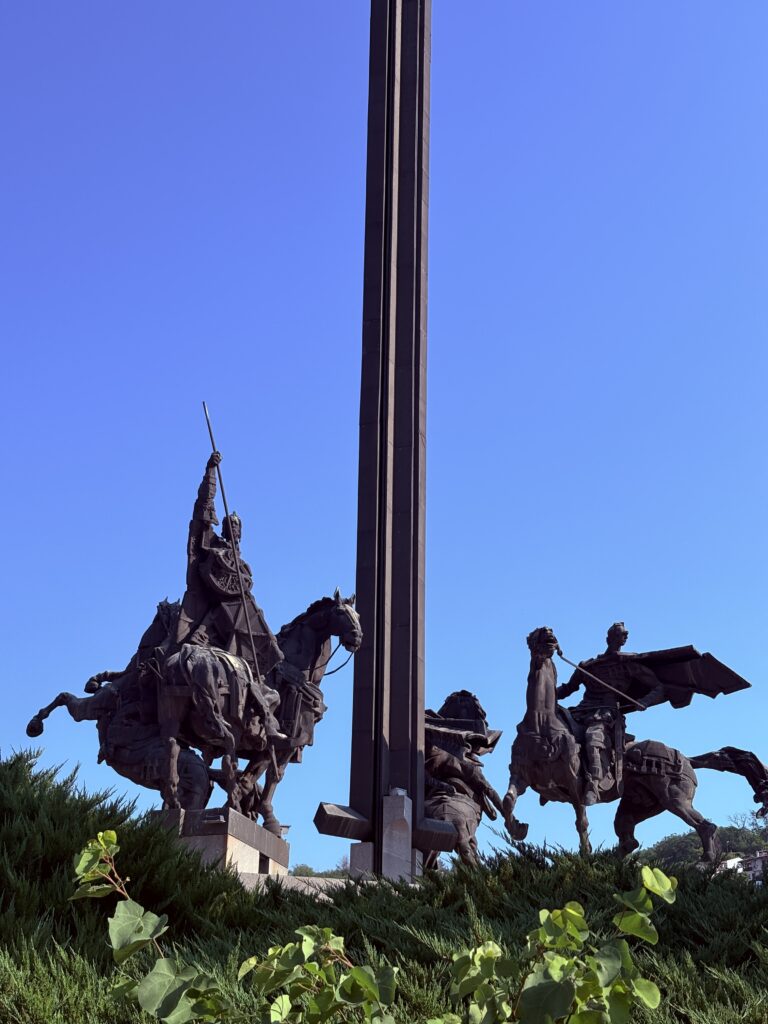
Veliko Tarnovo – Tsarevets Fotress
I decided to walk towards the Tsarevets Fortress on this side of the river, which is not necessarily an option I would recommend – there’s a large portion of the way that doesn’t have a pedestrian area, so you’d be walking on the mountain road, and then many of the stairs bringing you down to the bridge are a bit run down.
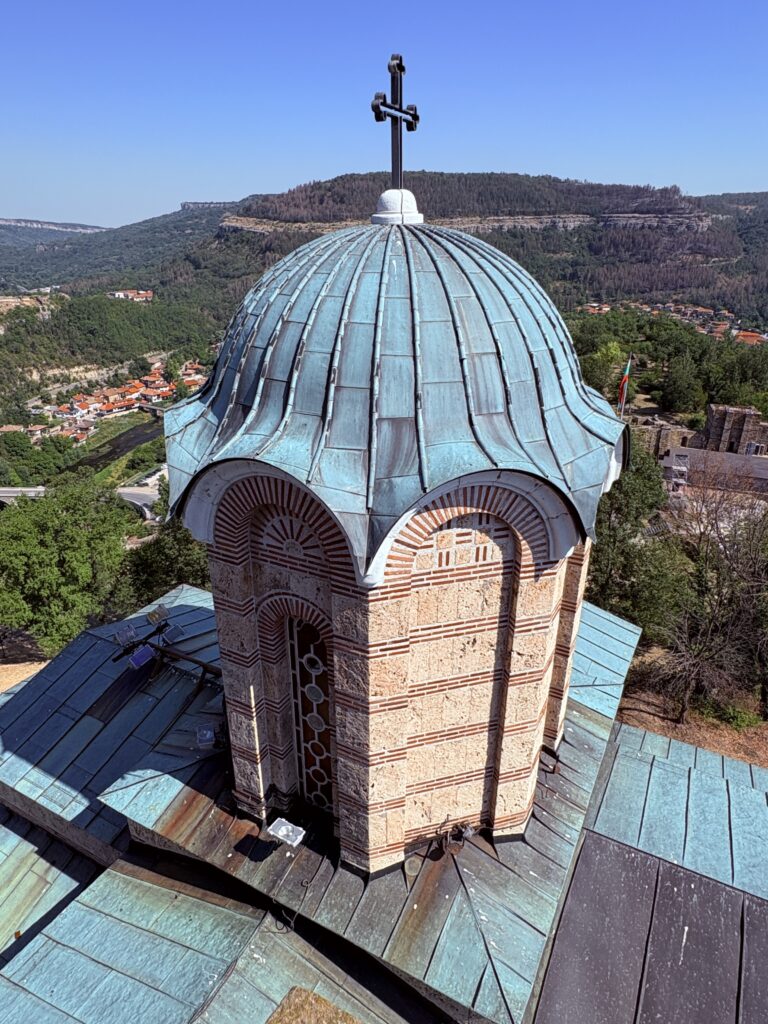
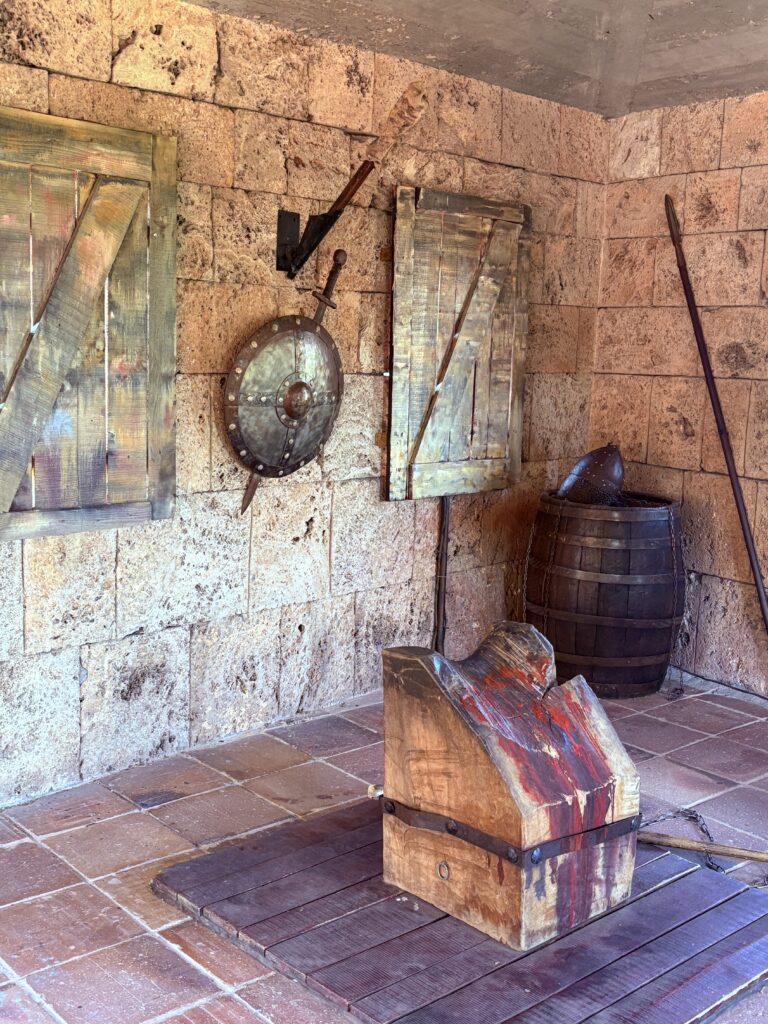

The fortress was an interesting sight. It’s well conserved and there’s some information you can access using an audioguide on your phone. The most interesting part for me was the church they have on top of the hill, the Patriarchal Cathedral of the Holy Ascension. While the church itself is quite ancient, it was completely reconstructed in the 20th century, with Teofan Sokerov painting the frescoes inside the church. While I found these murals very engaging, the church authorities did not, so the church was never reconsecrated, making it technically a museum. You can also take an elevator and go to the top of the tower for 5 leva, which gives an overview of the fortress and the city.
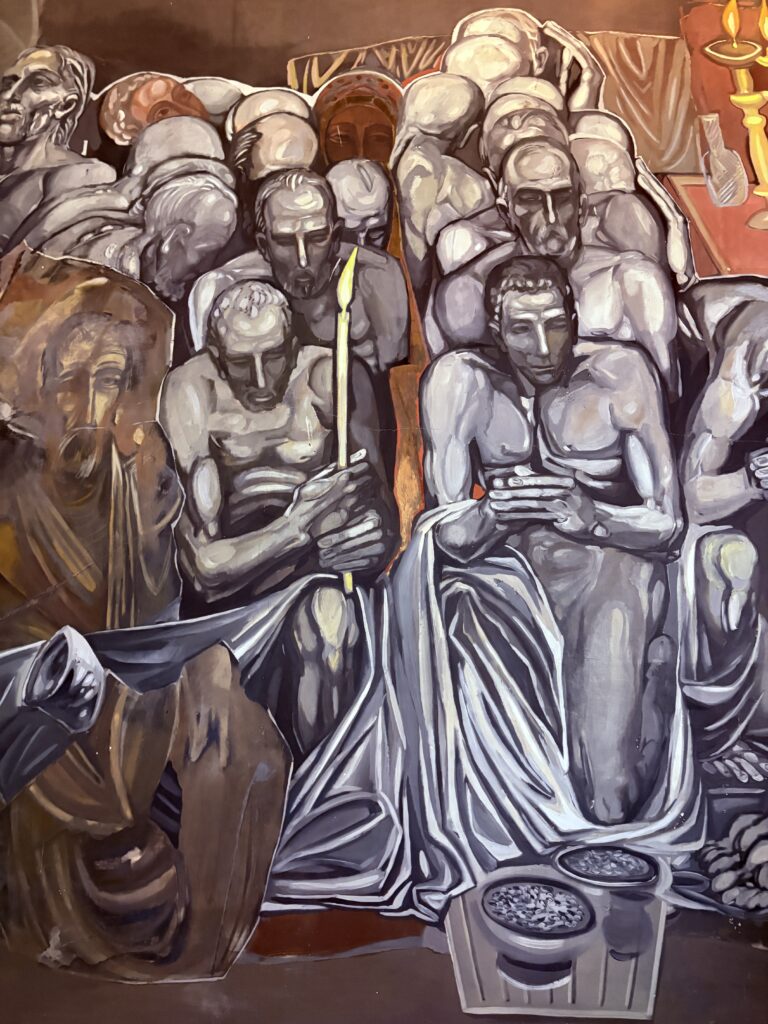
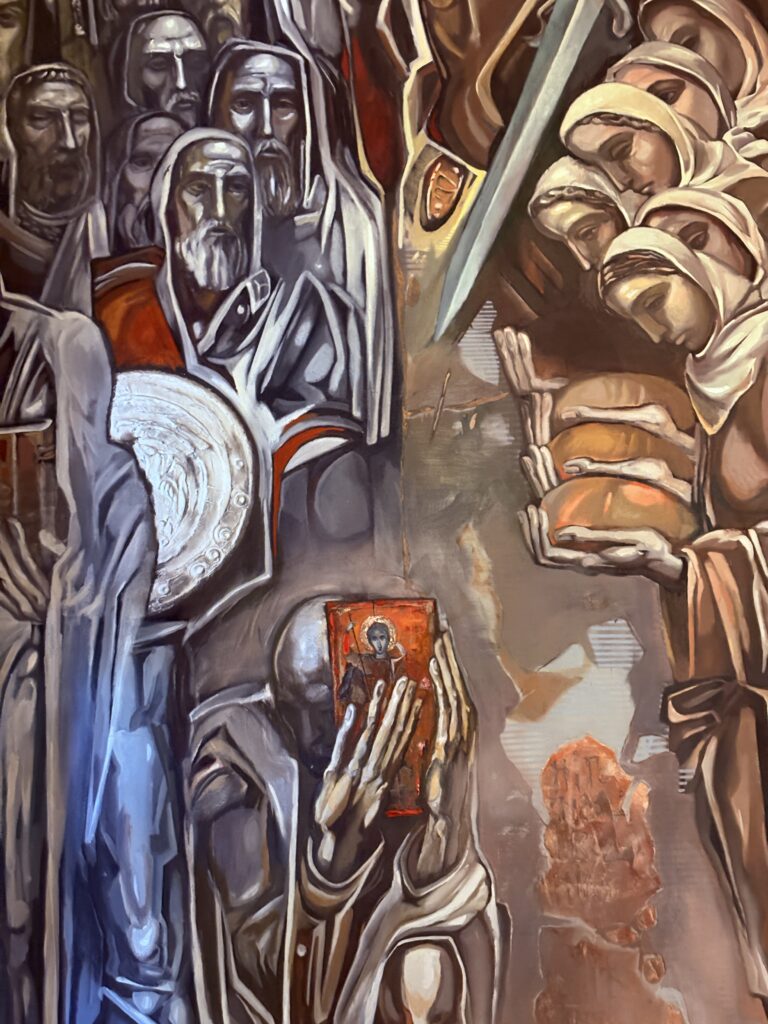

I considered going to the other fortress that you can see in Veliko Tarnovo, the Trapezitsa Fortress. This fortress is bit further from the city, and you can reach it with a short hike up. There is also a swing on the way, great for photos. In my case, I opted against going there, as there was less to see than in the Tsarevets fortress from what I read. Instead, I just walked around the city, taking in the small streets, cute souvenir stores, and great wall art.
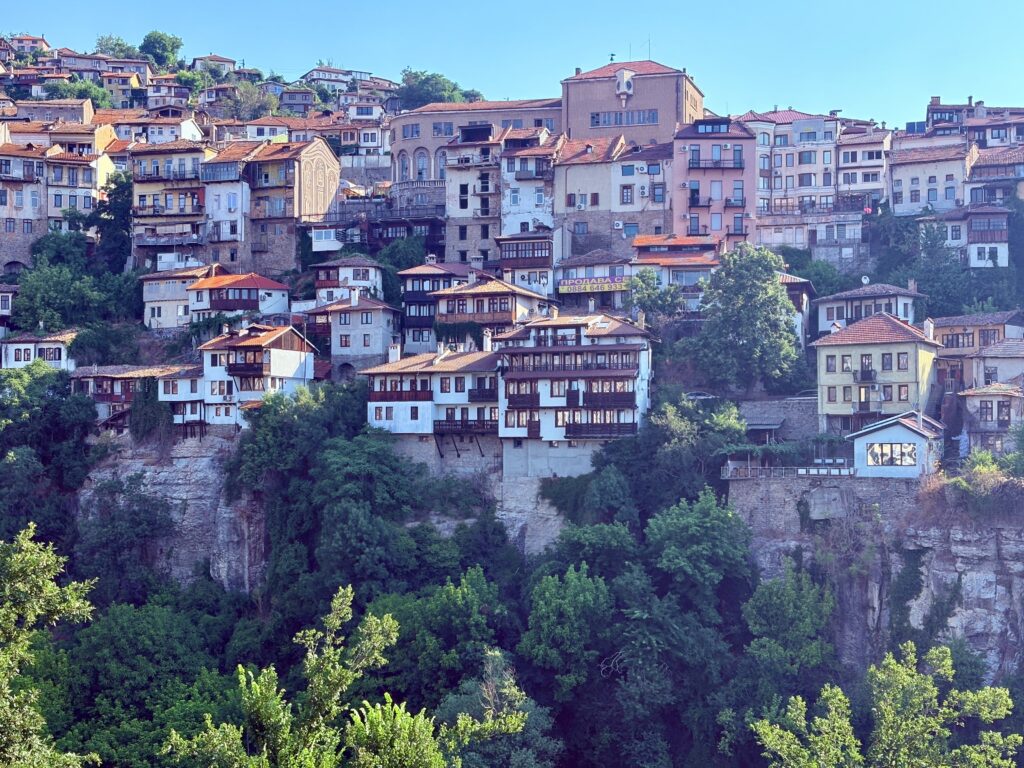
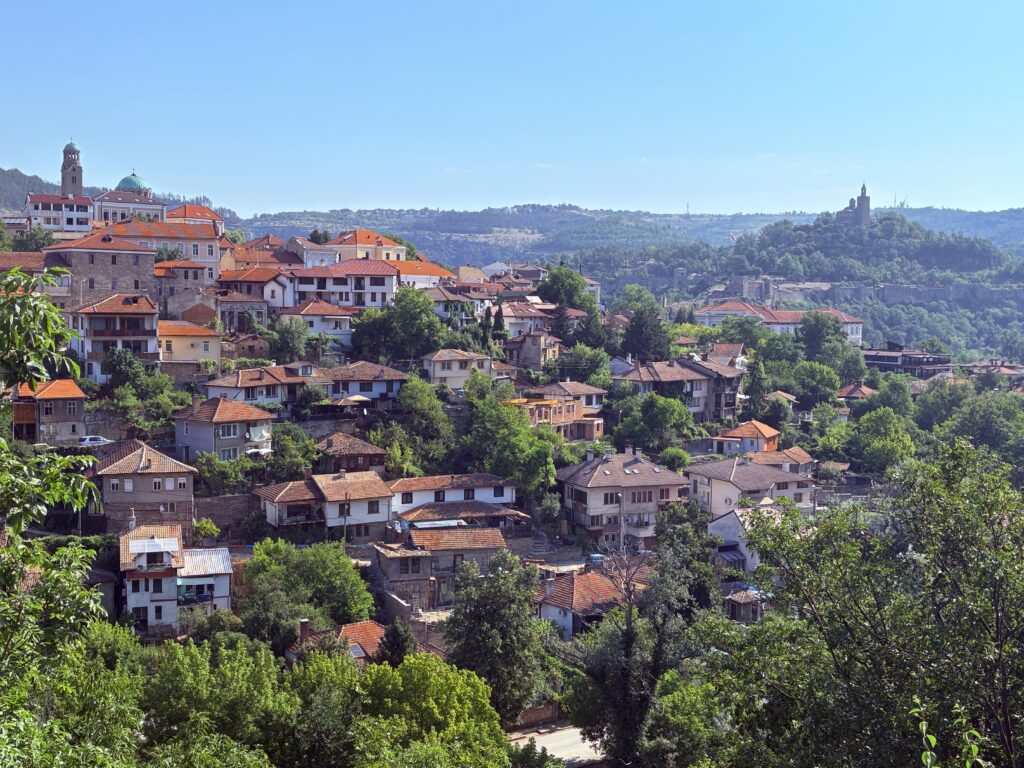
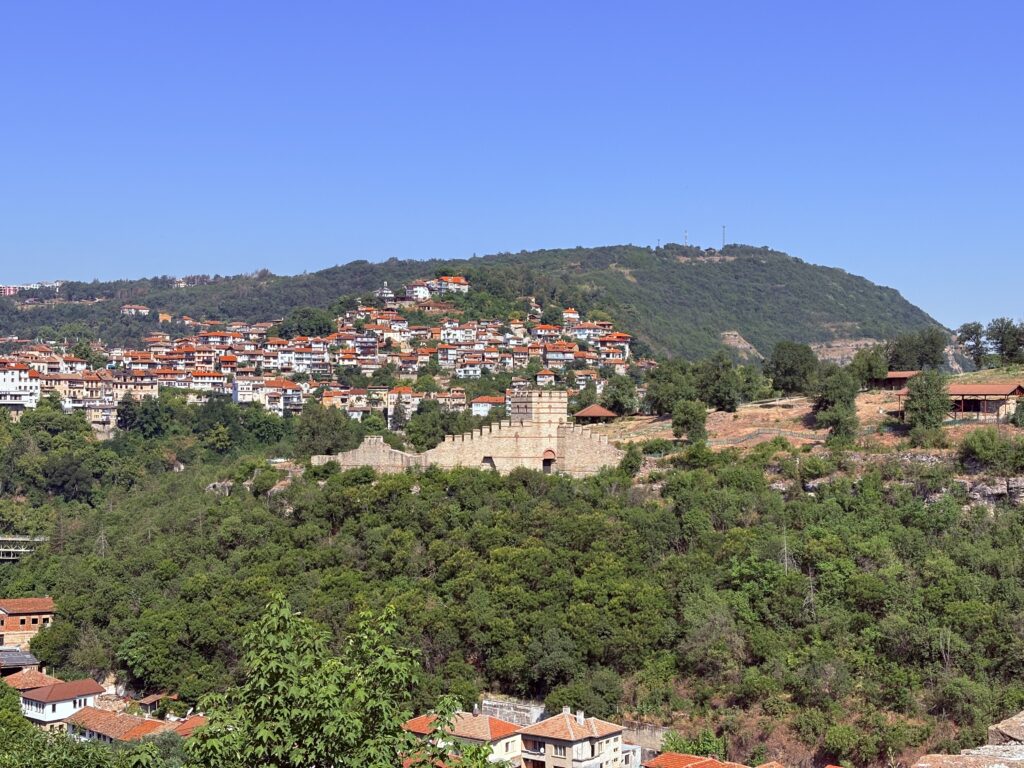
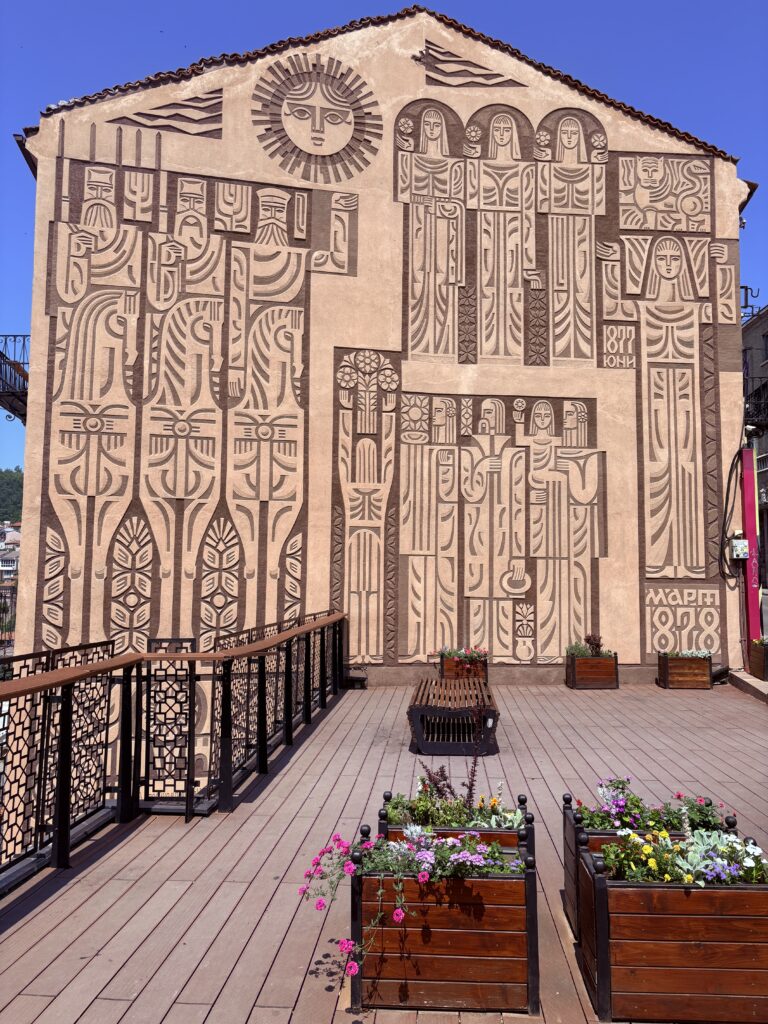


Before leaving, I had lunch at a great restaurant, the Shtastliveca, which offers fantastic views of the city and delicious traditional meals.
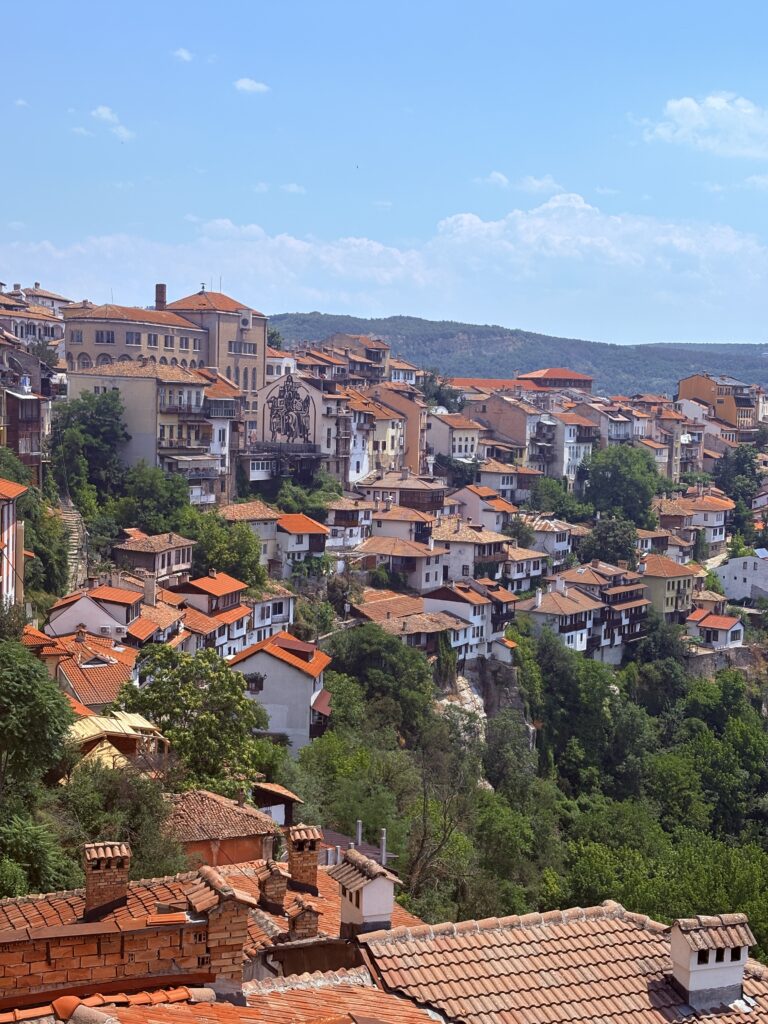
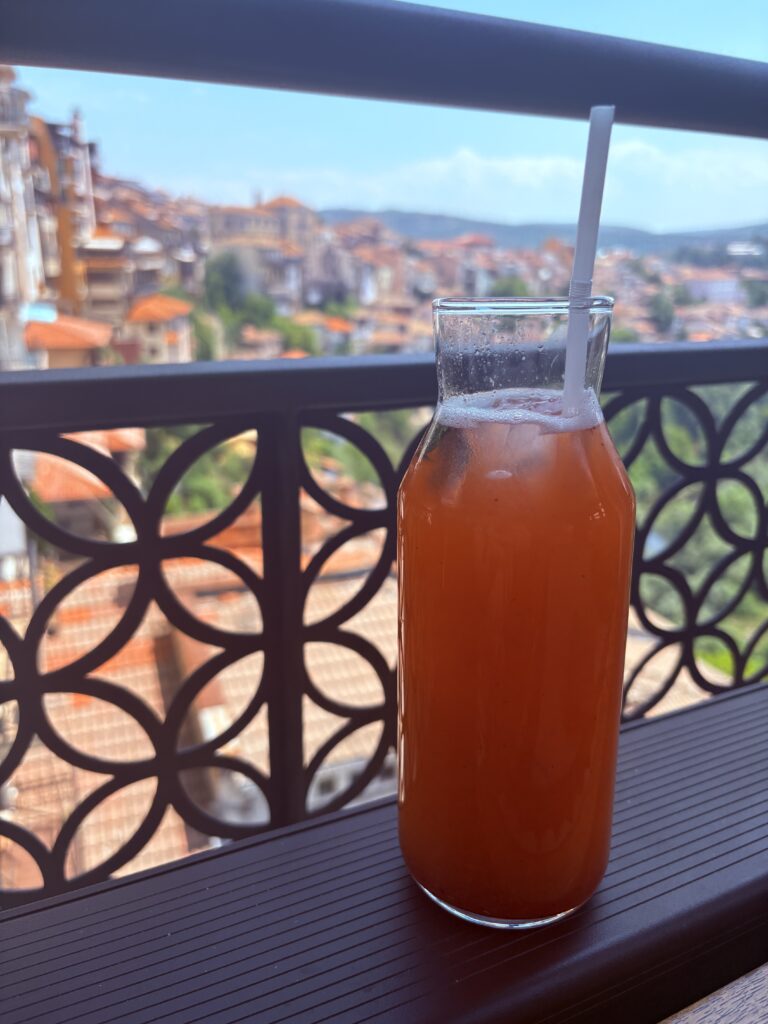

Monastery nearby Veliko Tarnovo
After lunch, I drove to the Monastery of the Holy Transfiguration of God, located 15 min away from the city. While Google maps suggest a rather long way up, the last turn towards the museum is legal, so there’s no need to go up to the next city for the turn. There are a few parking places in front of the monastery, and then you walk through the door. On the left hand side, one can see the residence of the monks who are living there. Straight ahead there is the church, which is the highlight of the place. While from the outside the place is quite run down, they restored the frescoes recently, so they look fantastic. The entrance to the church costs 4 leva.



Ethno village Etar
My next destination was Plovdiv, which takes around 3 h by car from Veliko Tarnovo. To make my trip lighter, I stopped at the Ethno village Etar (1 h from Veliko Tarnovo), which is an ethnographic museum with traditional houses. The museum is quite complete. It has a lot of information about how different water mills functioned, and in the main village, most of the houses had an exhibition upstairs, describing different crafts and ways of life of people.
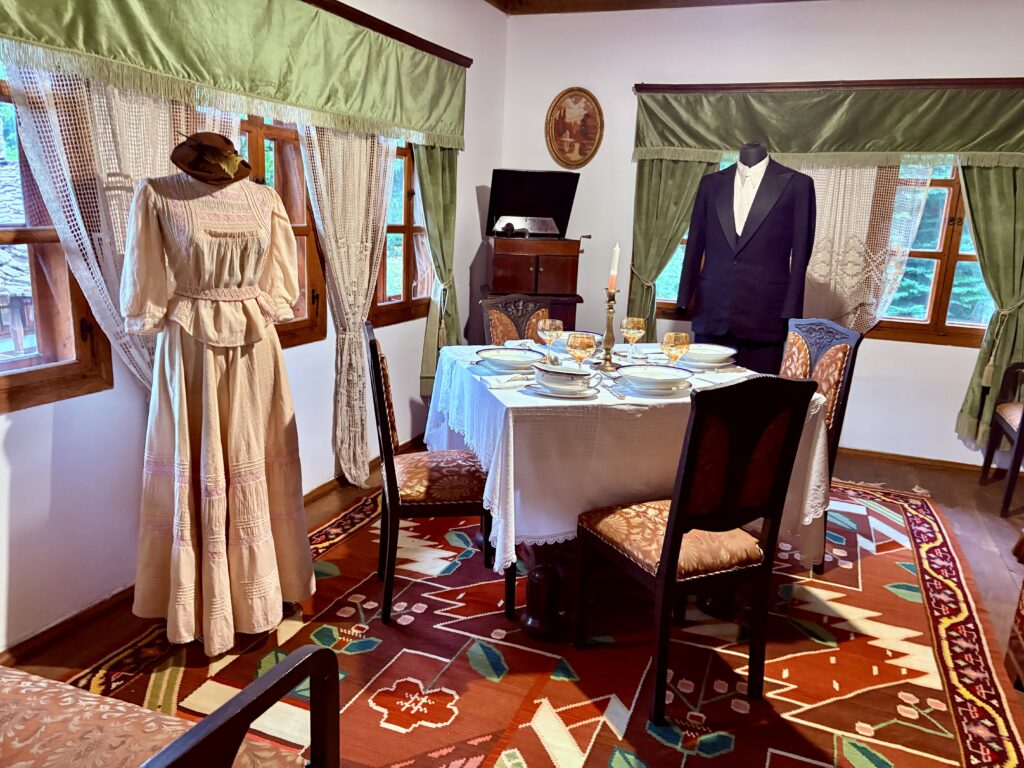


Plovdiv
Having gotten more used to the Bulgarian roads (with their high speed limits even on not-so-great roads), I arrived to Plovdiv while there still was light, which allowed me to explore the city a bit. I loved it! Plovdiv is such a gorgeous place. There is plenty of beautiful street art in the buildings, roman archeological sites, a lively main streets with boutiques and restaurants, and old colorful houses.
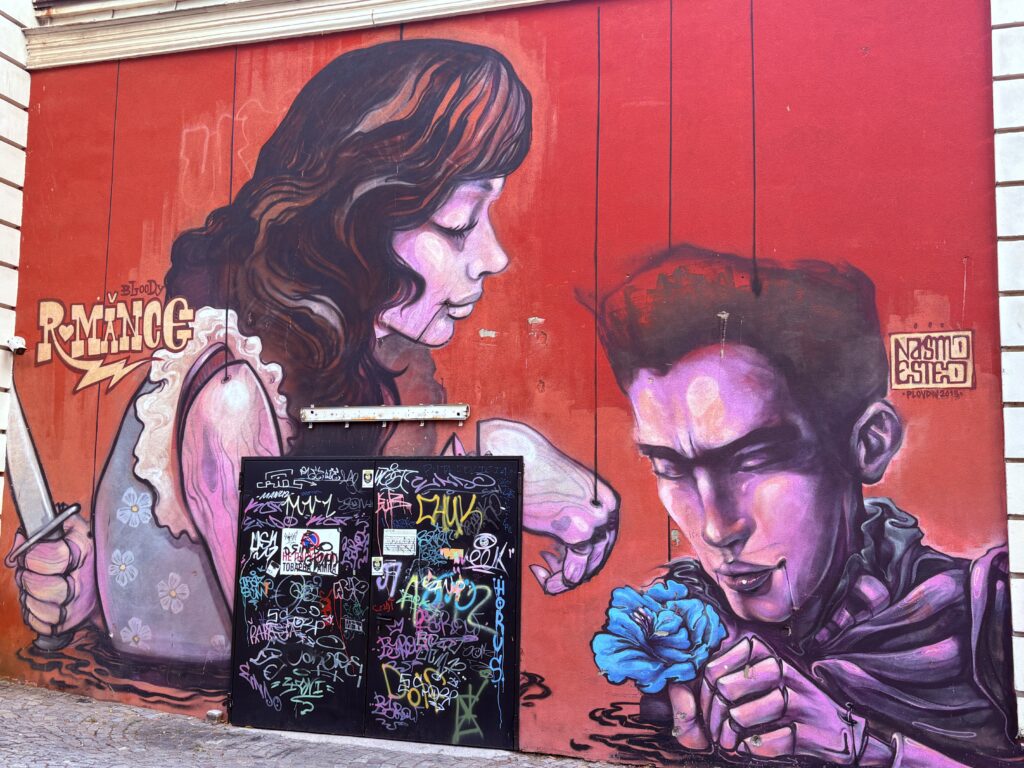
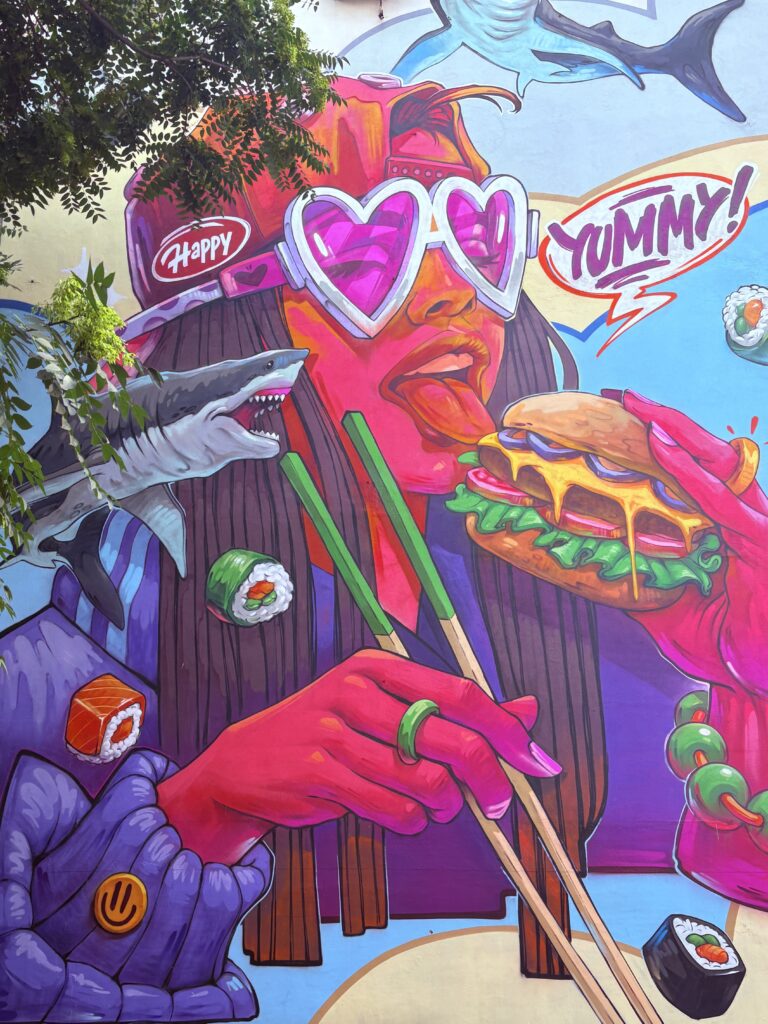
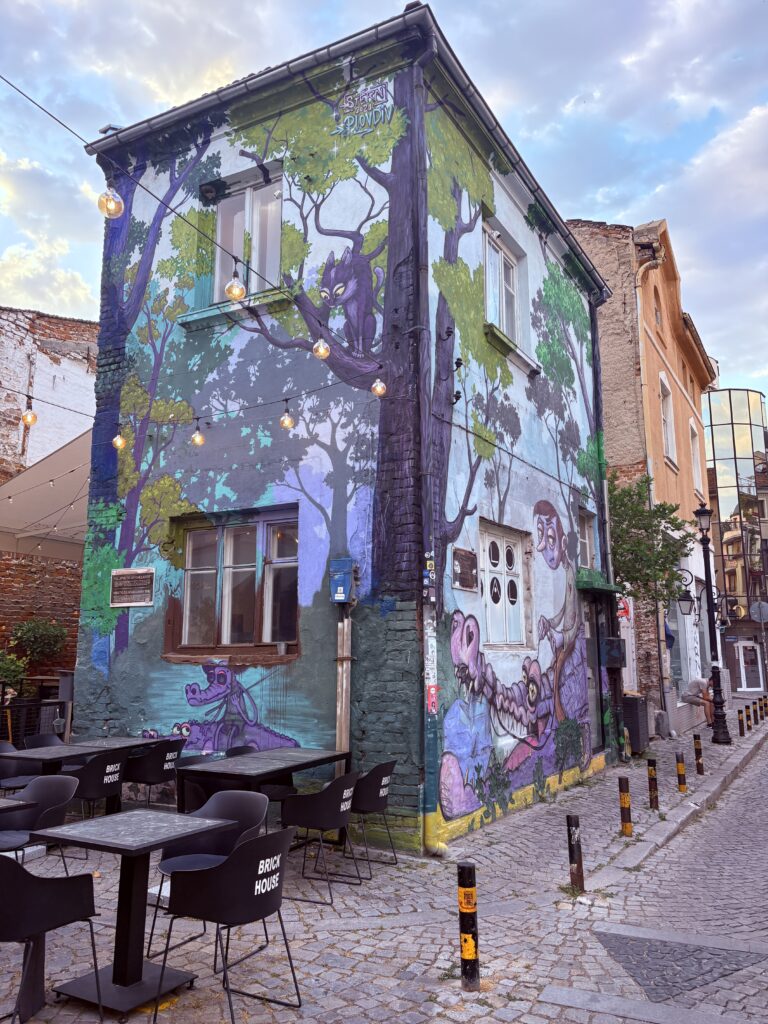
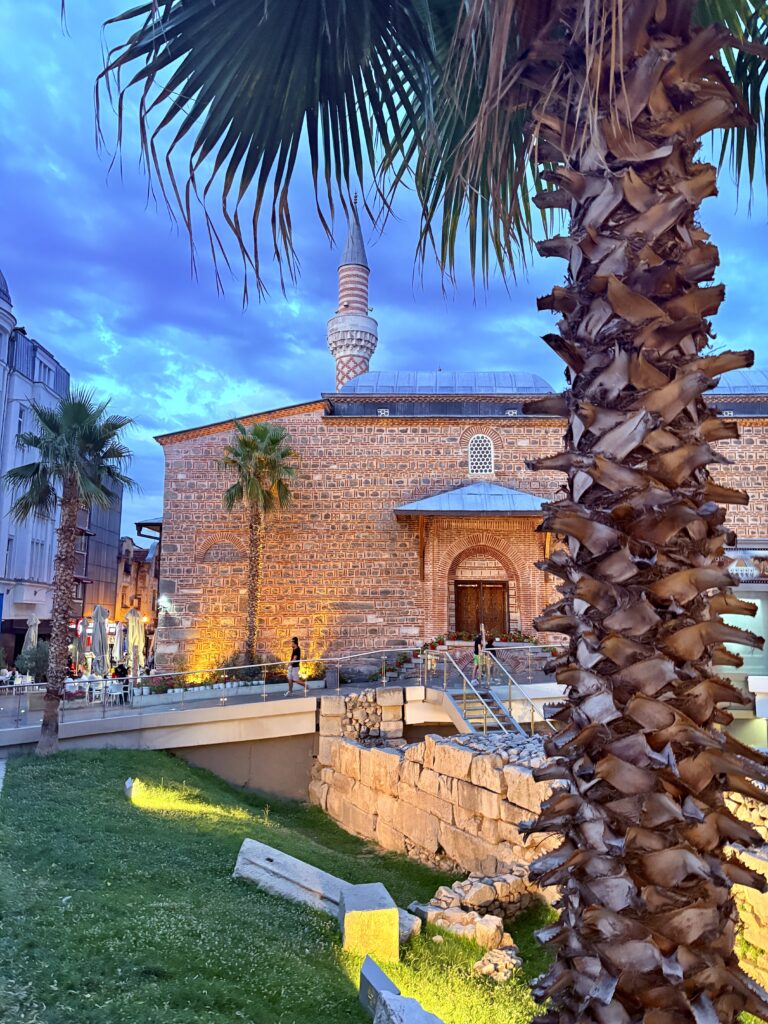
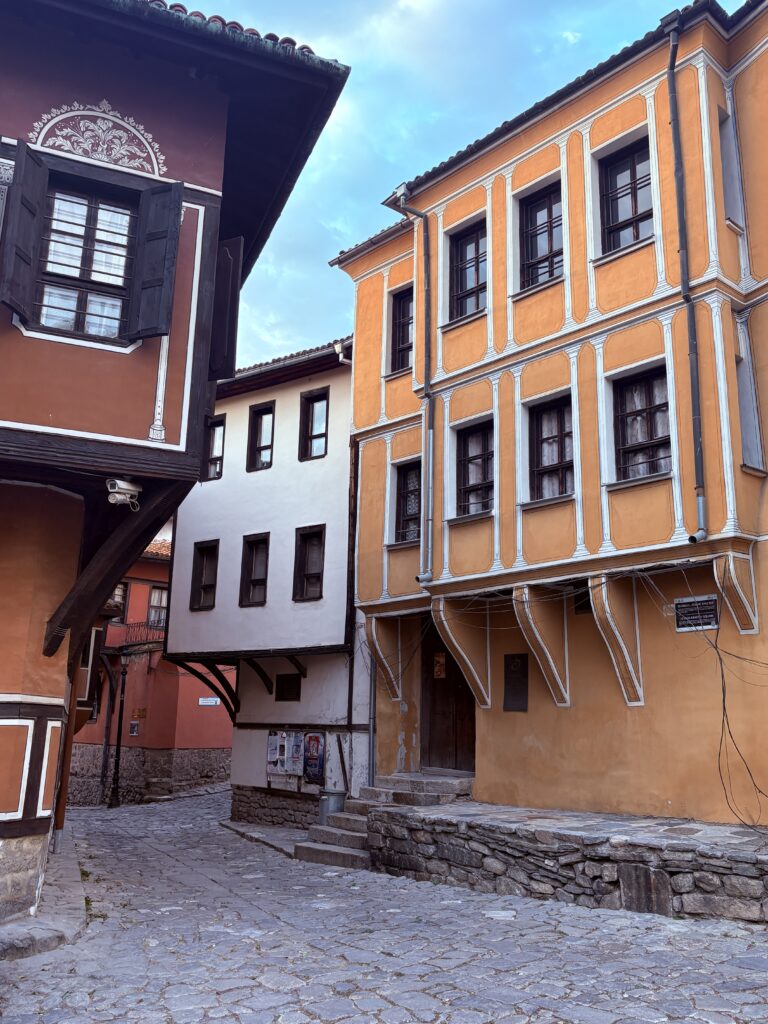
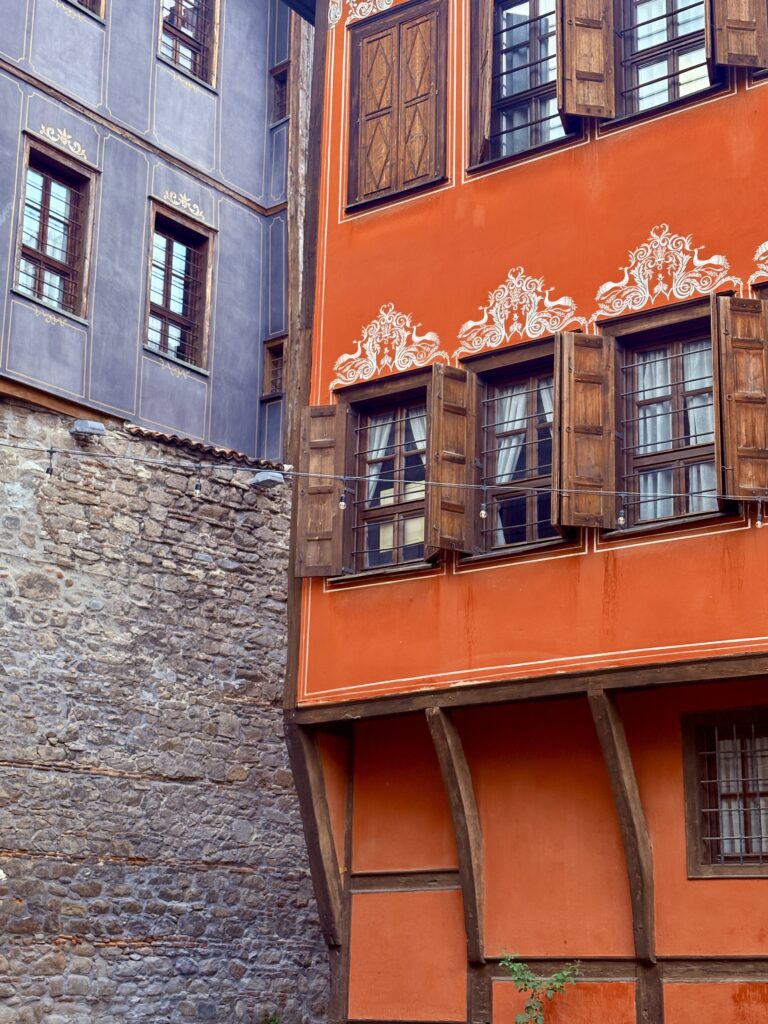
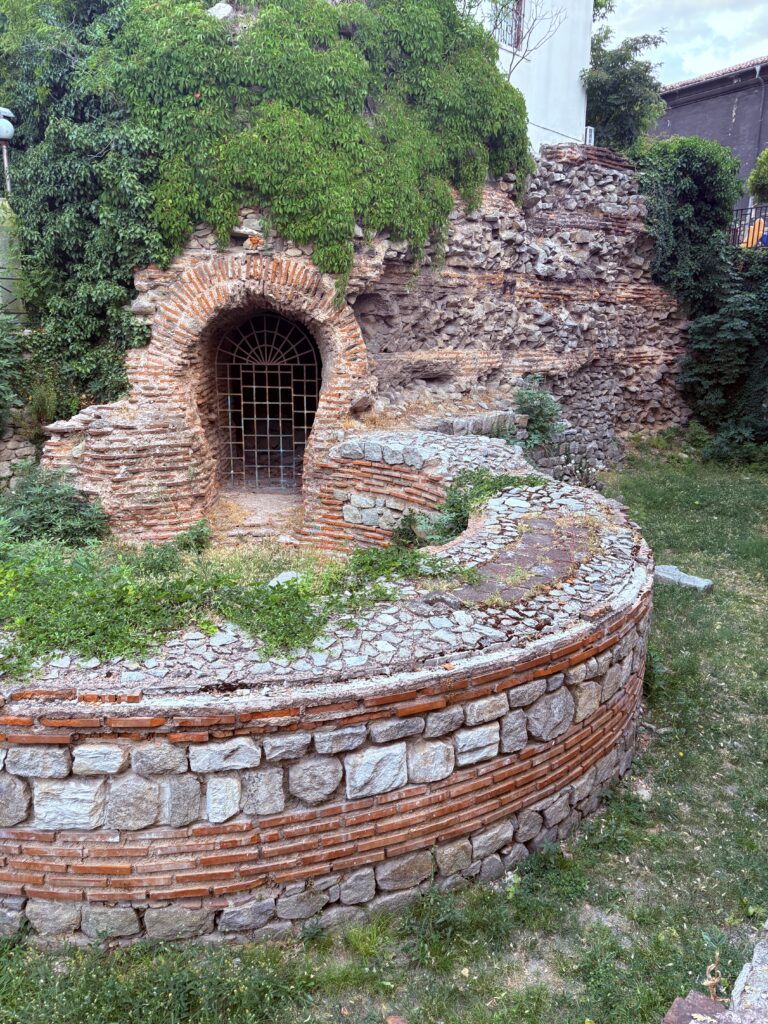
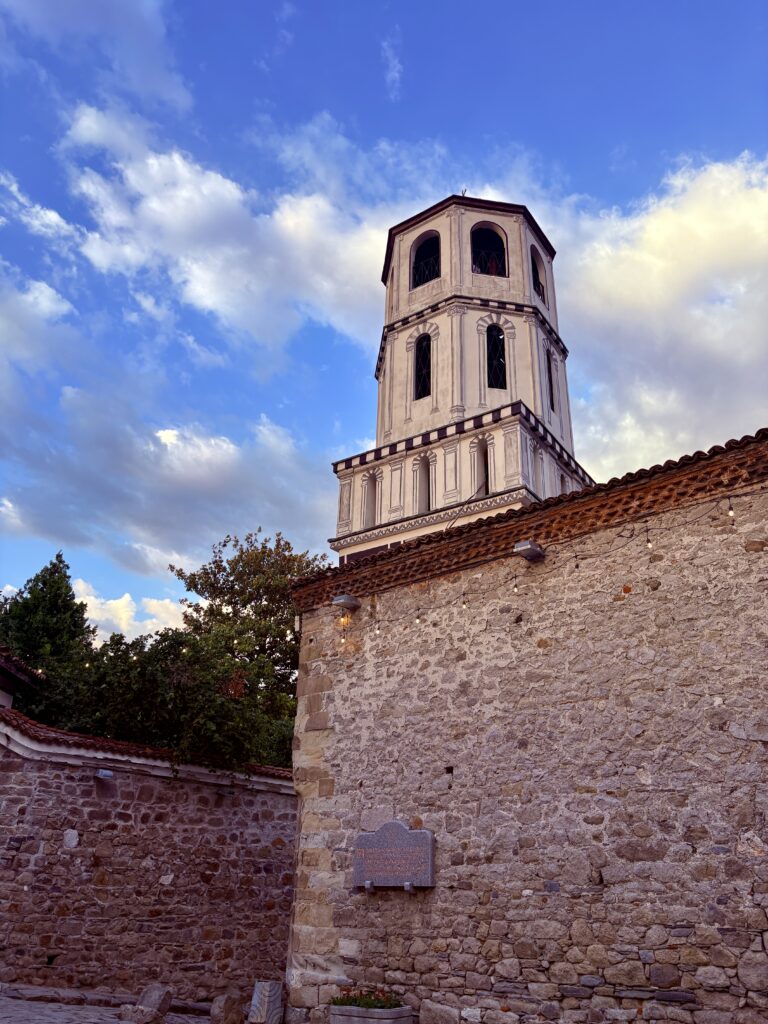
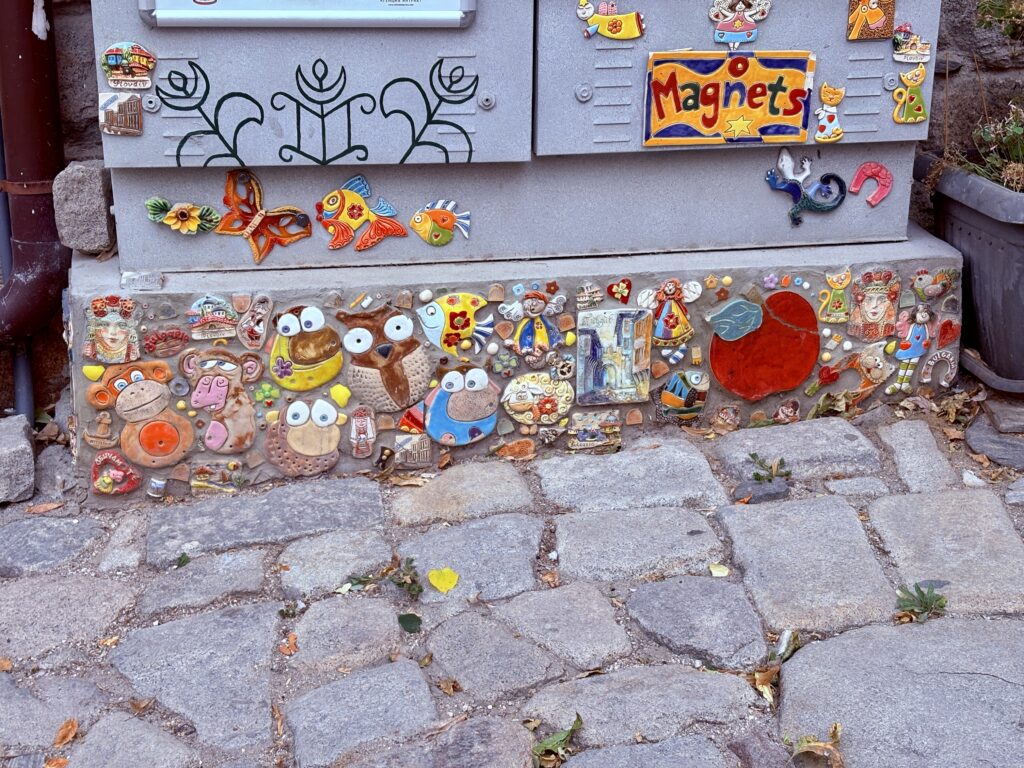
Not to be missed is Nebet Tepe, a fortress in ruins that gives you outstanding panoramic views of the city and is the perfect spot for sunset in Plovdiv.
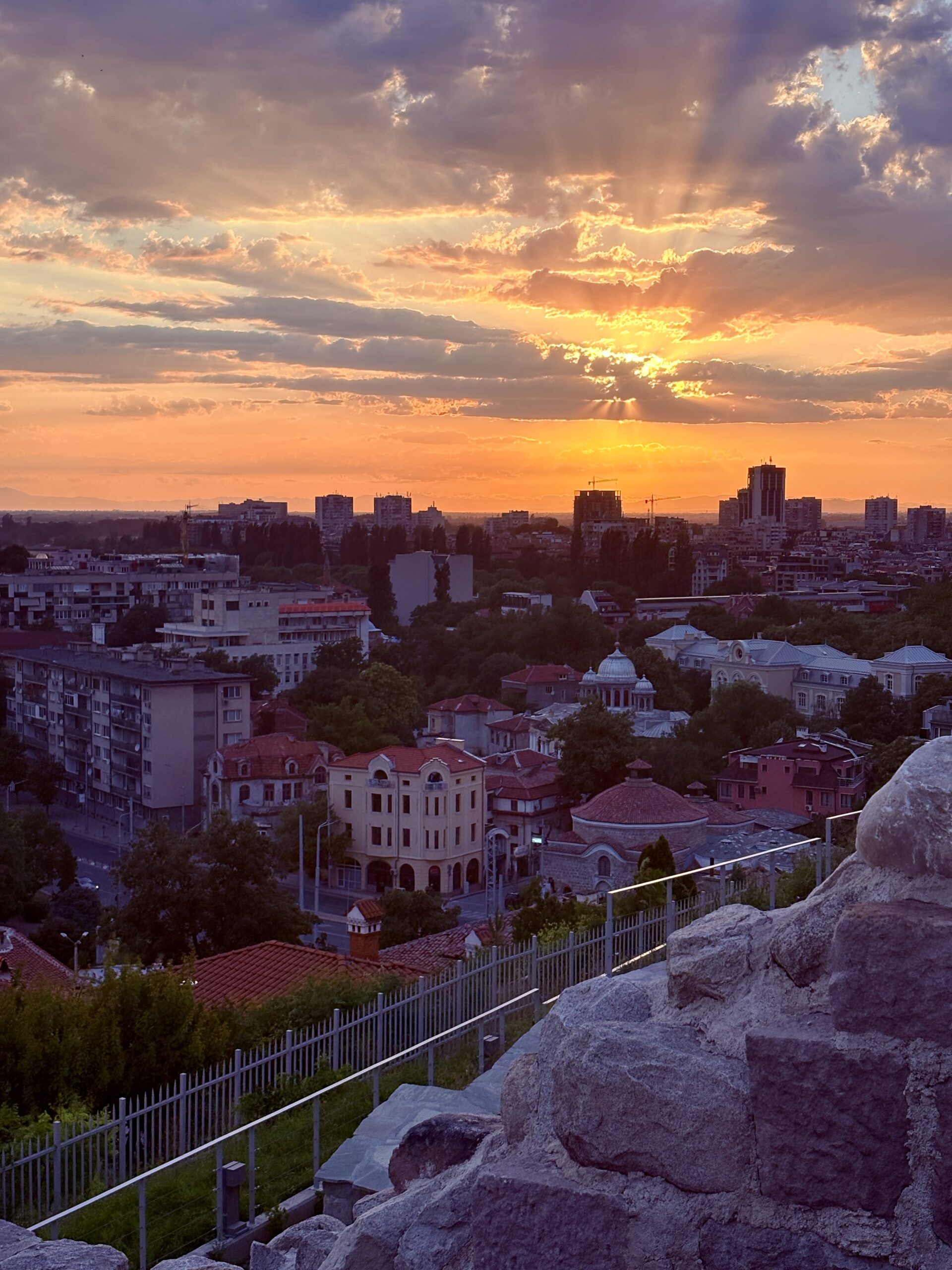
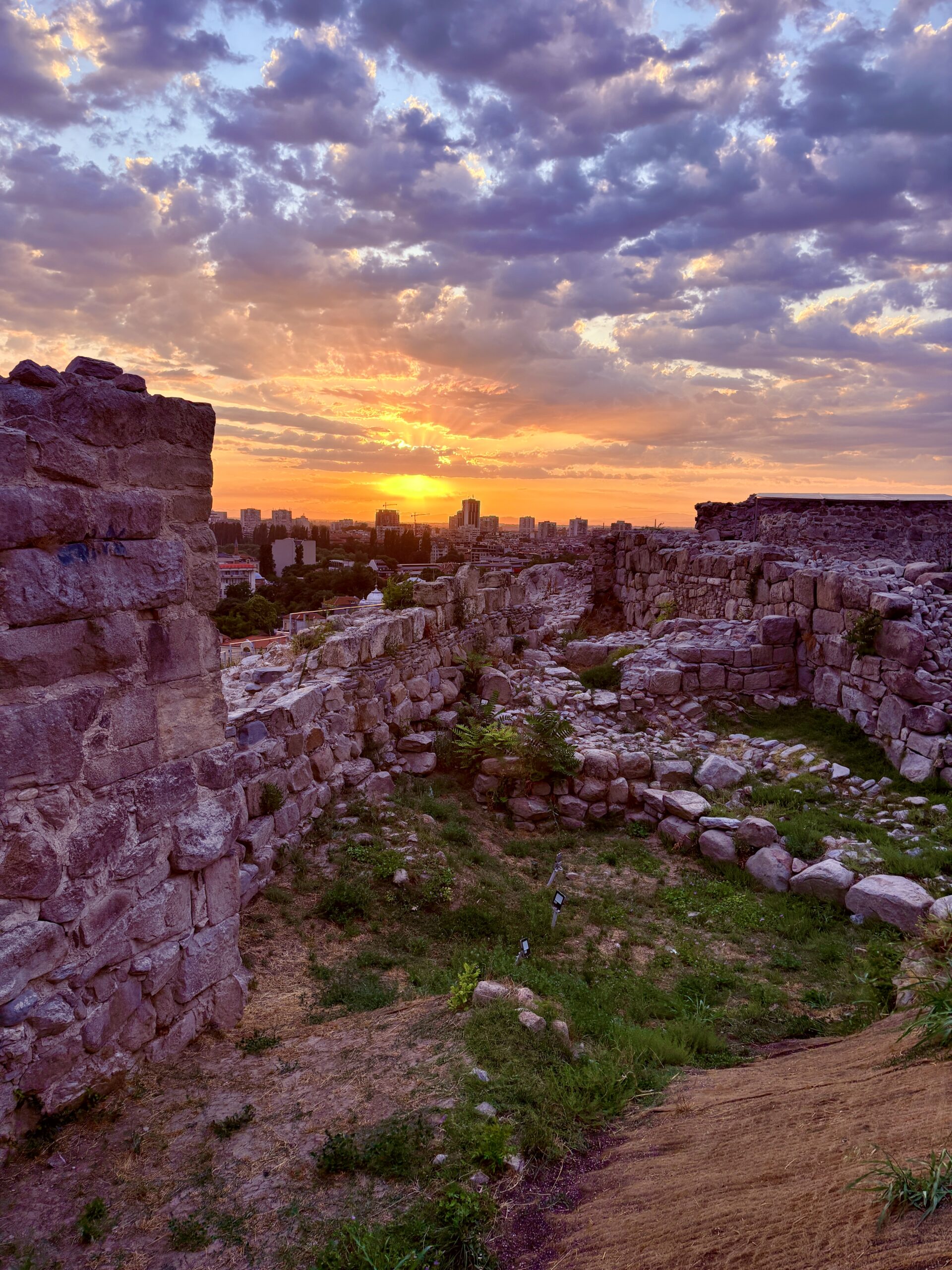
For the night, I stayed in the Plovdiv Center Hotel, a pleasant hotel with very white clean rooms. Just beware if you have accessibility issues this hotel is not for you – there’s no elevator. Otherwise, it’s a cool place, and with very convenient location to explore the city.
Day 11 – Plovdiv
Since I really enjoyed the day before, I continued to explore the city. My first stop was the Episcopal Basilica of Philippolis, a byzantine church with beautiful mosaics. I did buy the combined ticket, which included also the Late Antiquity Building Irene and the Small Basilica, which contained even more mosacis, although not at the same scale as the Episcopal Basilica.
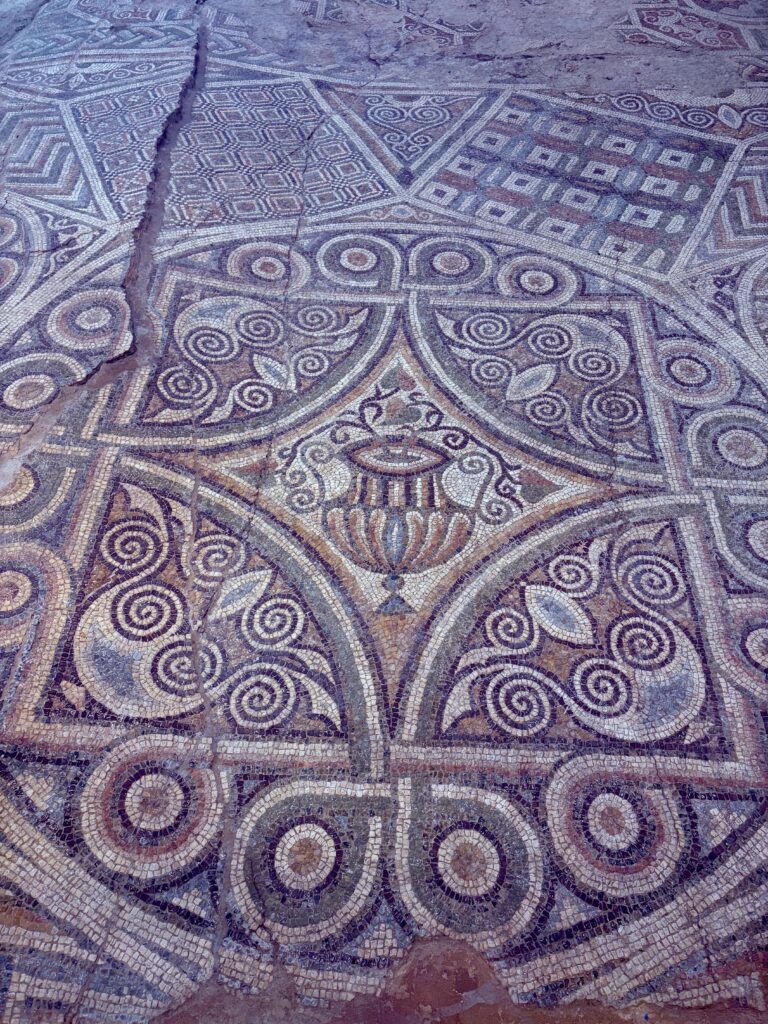

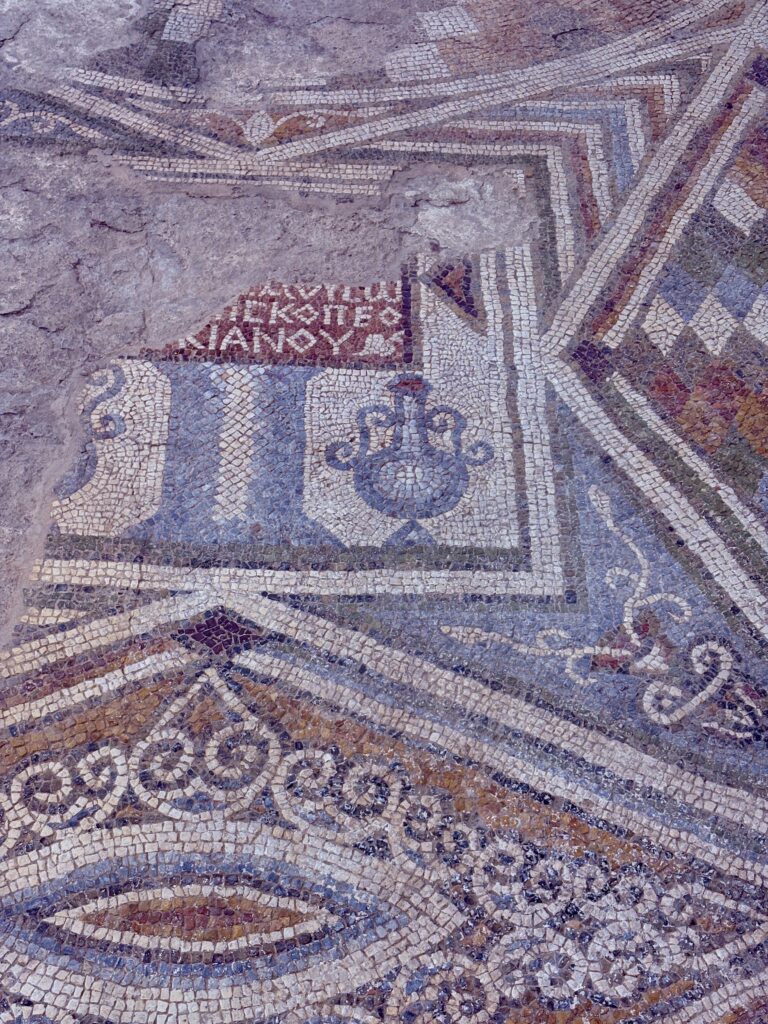
I walked around the city, quickly looking at some other attractions due to limited time, including the Ancient Theater of Philippolis and the Ancient Stadium, as well as the Djumaya Mosque. I went up again to the old city, this time visiting the ethnographic museum, which gave a lot of detail on the craftsmanship of carpet weaving, as well as local differences in dress styles.
After a healthy and fancy lunch in Pavazh, and a not-so-healthy but very fancy dessert in Dessert Trap, I headed towards my next destination, Sapareva Banya, the base for my hike tomorrow to the Rila lakes. I stayed at the Kot Garden Hotel, a small family-run hotel with comfortable rooms. The city itself is pretty small and there’s not that much to do. There are a few supermarkets and stores, and the key attraction are the natural spa waters.



Day 12 – Seven Rila Lakes and Monastery
Seven Rila Lakes hike
From Sapareva Banya to the chairlift towards the headtrail of the Rila Lakes it’s only 30 min, although through a winding road. The return ticket for the chairlift is 30 leva in 2025 and is a 20 min ride. Nearby the ticket office, you can see the updated temperature on the mountain. And let me prepare you here: it might be (very) cold, even in summer. I was there mid-July, and the first thing I did once I reached the top was run into the hut and buy myself a fleece jacket. I’m so happy they had this small store, because otherwise I was already considering going back due to the low temperatures.
While the weather was not what I had hoped for, it wasn’t terrible, so I’m happy I did the hike at the end. The fog that day was quite thick, so while I could see all the 7 lakes individually, I only could get a glimpse of several of them together before the fog came back. The hike took a total of 5 h from and to the bottom of the chairlift, of which only 3 h were of walking time. While it’s not an easy hike due to some steep areas, it’s doable for anyone moderately fit and healthy. If you’d like more details about this hike, check out this article.
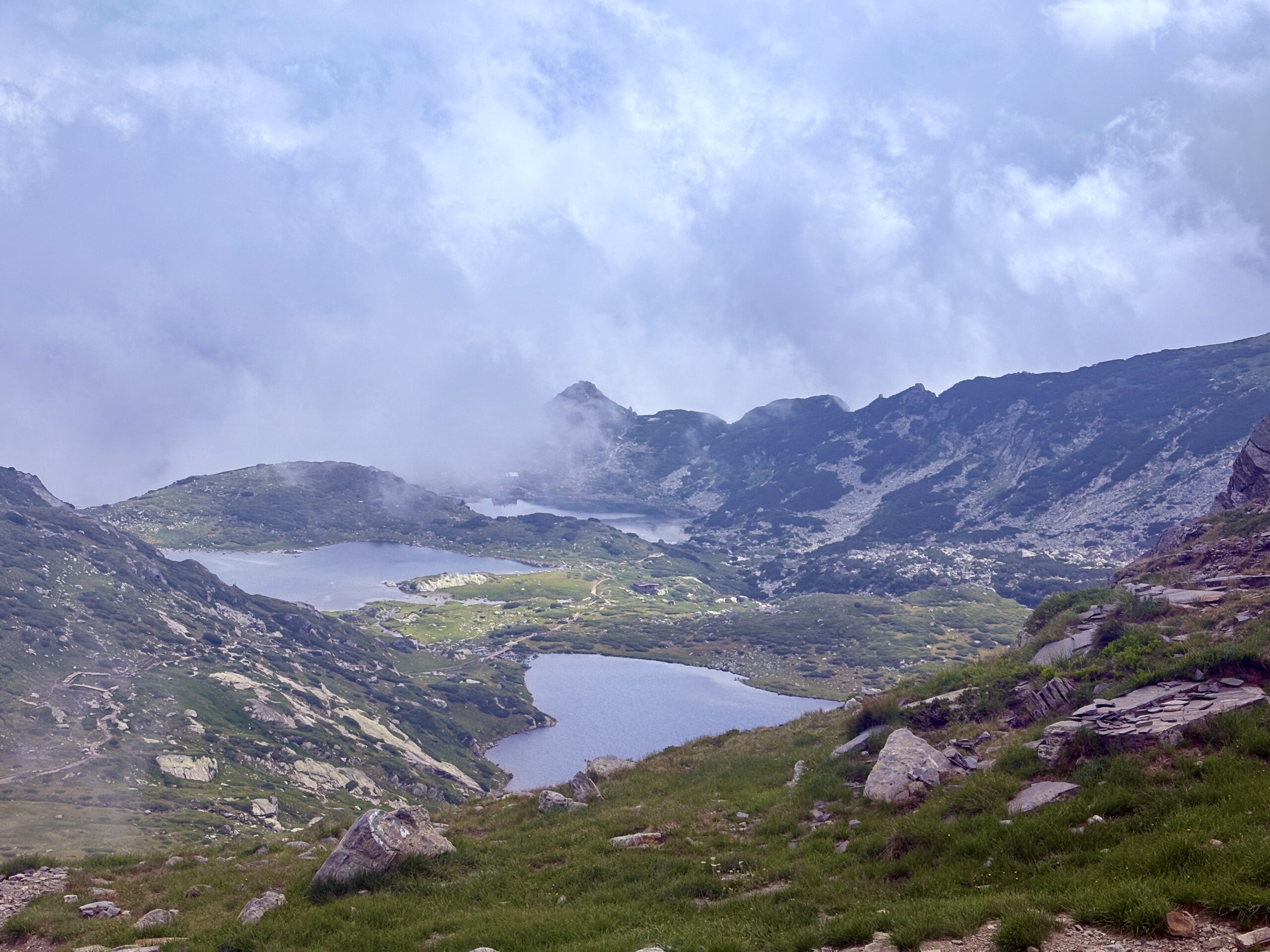

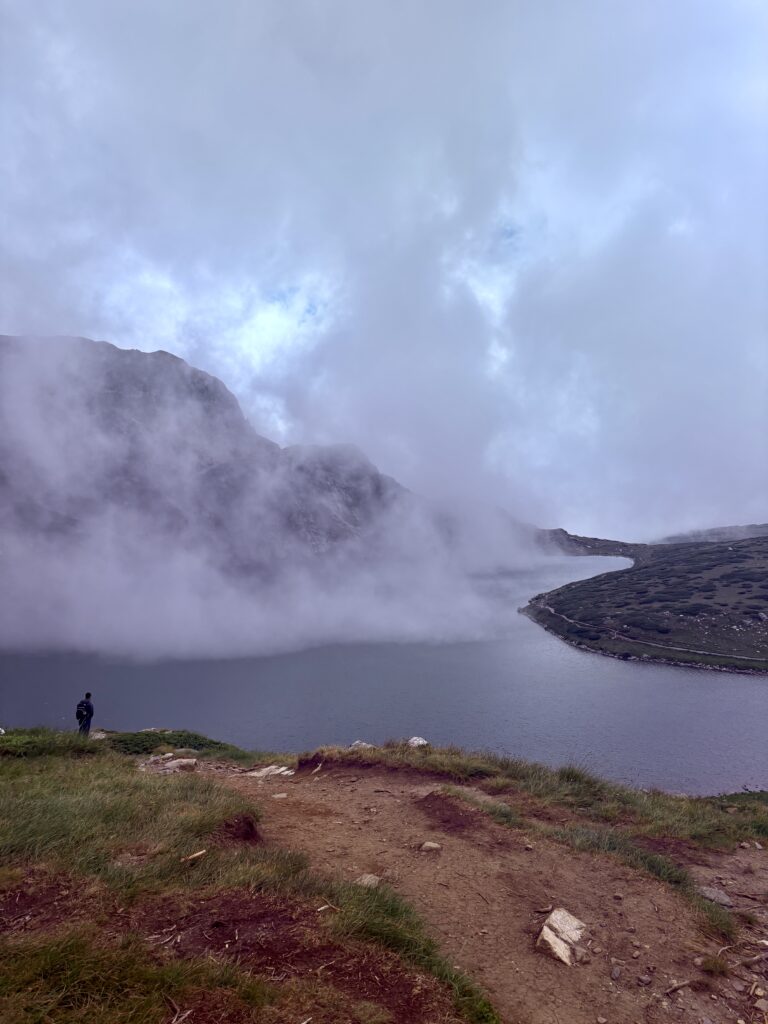
Rila Monastery
After the hike, I drove to the Rila Monastery, which is the largest Eastern Orthodox monastery in Bulgaria. It was initially built in the 10th century and it is still active. The monastery, as the hike, constitute very popular one day trips from Sofia due to their proximity to the capital. The monastery is part of the UNESCO World Heritage List since 1983. You can access the church for free, but the museums have a cost associated. It is not allowed to take pictures inside, only from the frescoes outside.
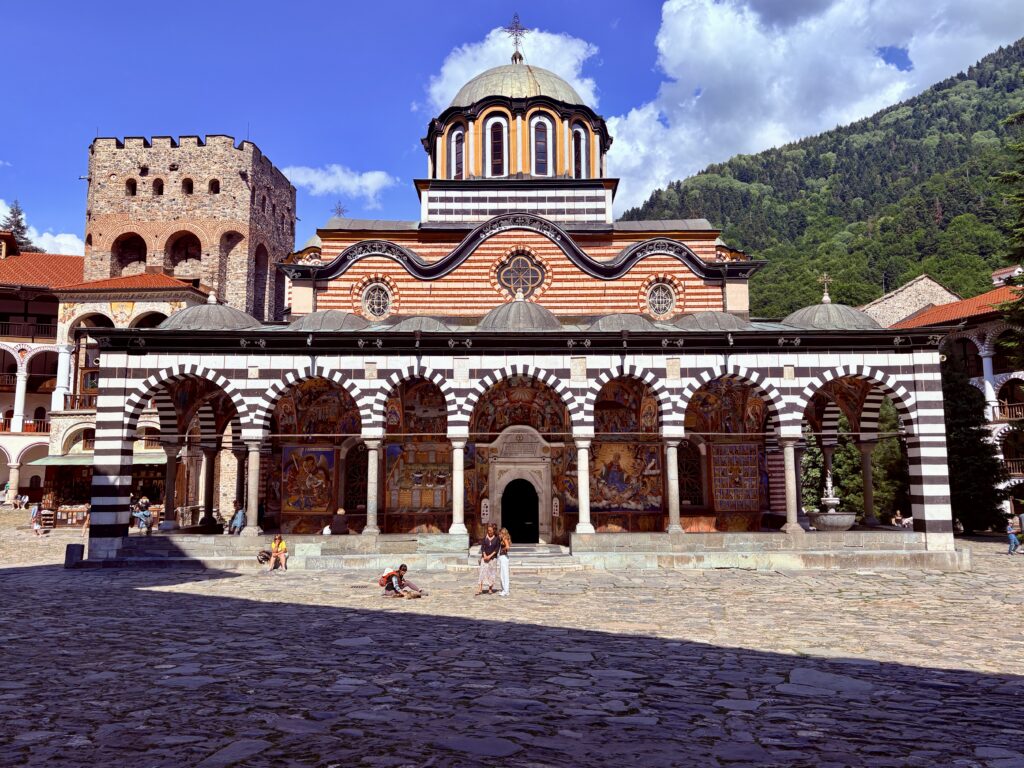
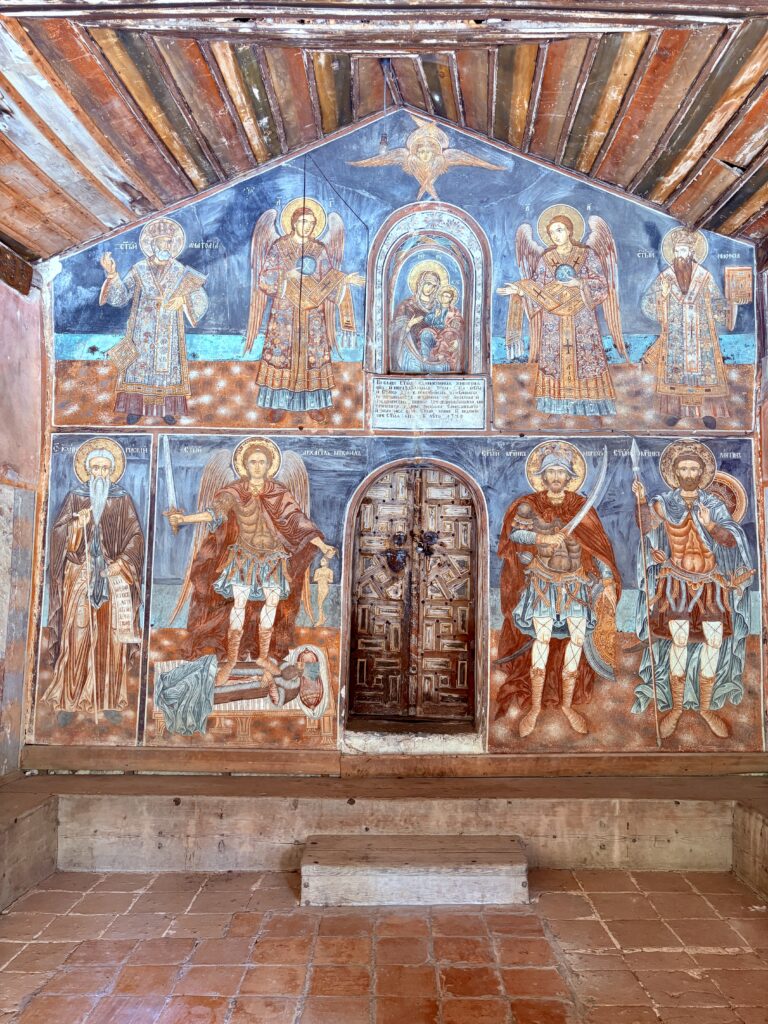

While it’s a nice place, I did feel a bit underwhelmed with it. The frescoes and general style really reminded me of the monastery I visited in Veliko Tarnovo, and I felt that, apart from the size and maintenance of the exteriors, they were pretty much the same. There were also some indications towards the ossarium, but they let to a small cemetery (the ossarium was closed to visitors).
I stayed nearby the monastery for the evening, and got a great trout for dinner at the restaurant Pchelina.
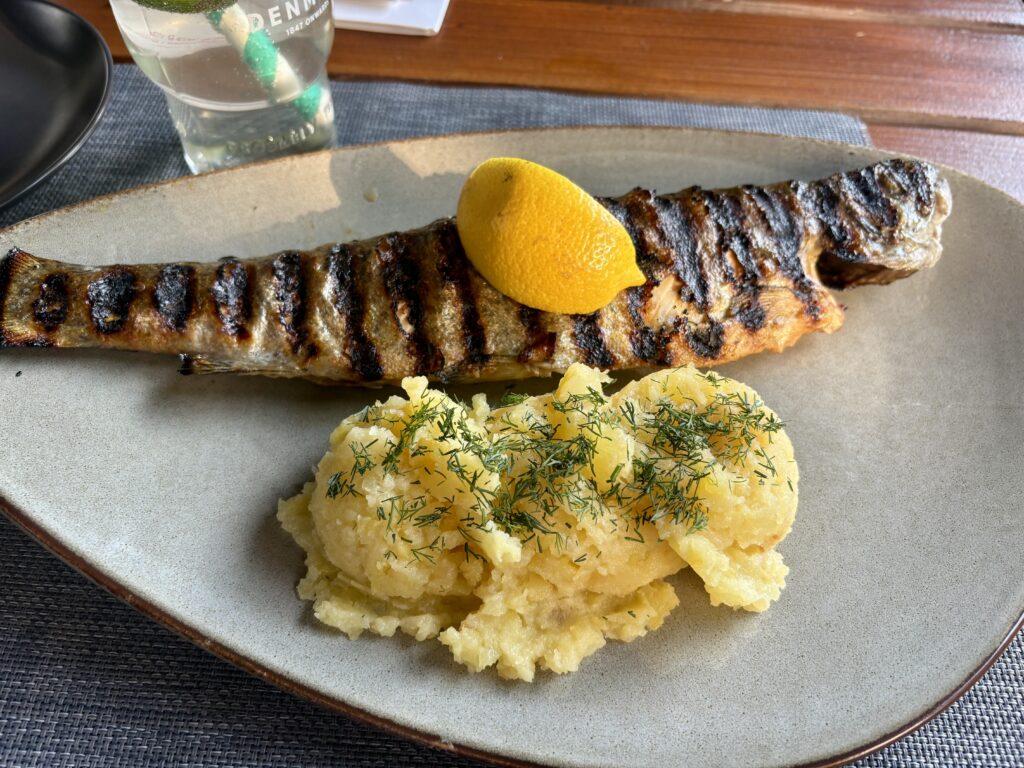
Day 13 – Sofia
My final day in the Balkans was spent in the capital of Bulgaria, Sofia. It is located around 1,5 h away form the Rila monastery, and the drive in the morning was quite easy, as not many people were around.
Boyana church
My first stop was the Boyana Church, a UNESCO heritage monument since 1979. The ticket to the church costs 12 BGN, and while the website recommended booking in advance, I had no issues getting in. There is however a limit of people that can be inside the church at the same time, so it might be worth getting the reservation if you’re not flexible. If you’re coming by car, there is some street parking around.
From the outside, the church is not very impressive, just the standard stone-made building. The interesting part comes from the frescoes inside, which are a great representation of medieval art. There are three layers of frescoes, as the artists at that time would rather put an additional layer than paint over the previous paintings, and several restorations. What arose my curiosity was that some of the saints had paint over their eyes. I chatted for a bit with one of the employees, who explained that they represented saints protectors of children who could not have kids, so for superstition people painted their eyes over.
Similar to many churches in Bulgaria, taking photos inside was not allowed.
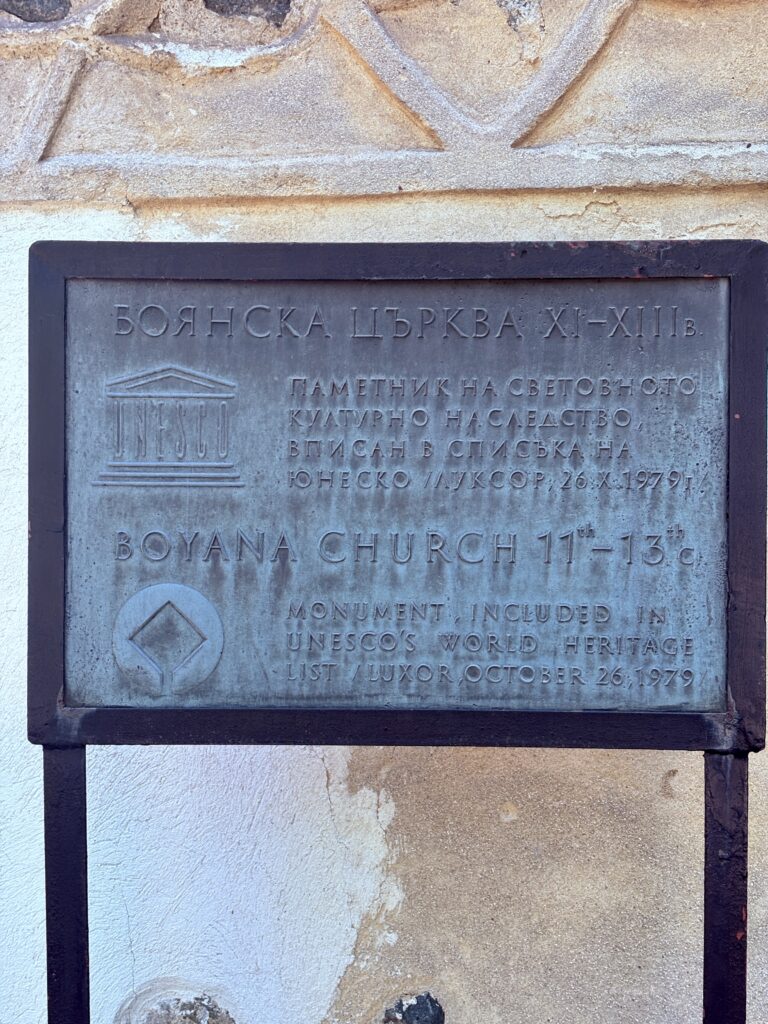
Museum of Socialist Art
The next stop was the Museum of Socialist Art, which is also located outside of the city center. I must admit I had some issues finding the place, as the point indicated by google seemed to be an official building, which also looked closed. However, that official building was actually the museum itself. I’m still not sure why they wrote “Ministry of culture” in much larger letters than the museum name, but it made it very confusing.
Once inside, there is a garden with sculptures from the soviet era, and after buying an 8 BGN ticket you could also access to the inside building with paintings. There was quite a few representations of socialist/communist leaders, and some scenes from revolutions and manufacturing work. There were also some propaganda posters. My favorite said: “Let us work tirelessly to reduce production costs in every manufacturing operation” – definitely some common points with capitalism there.
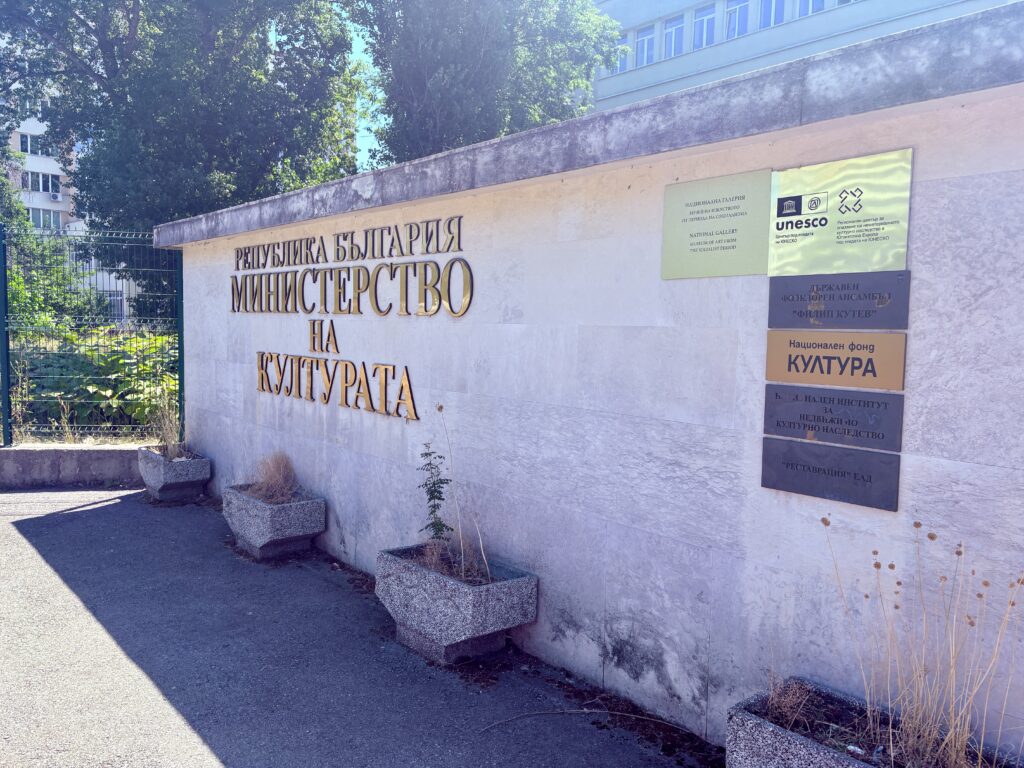
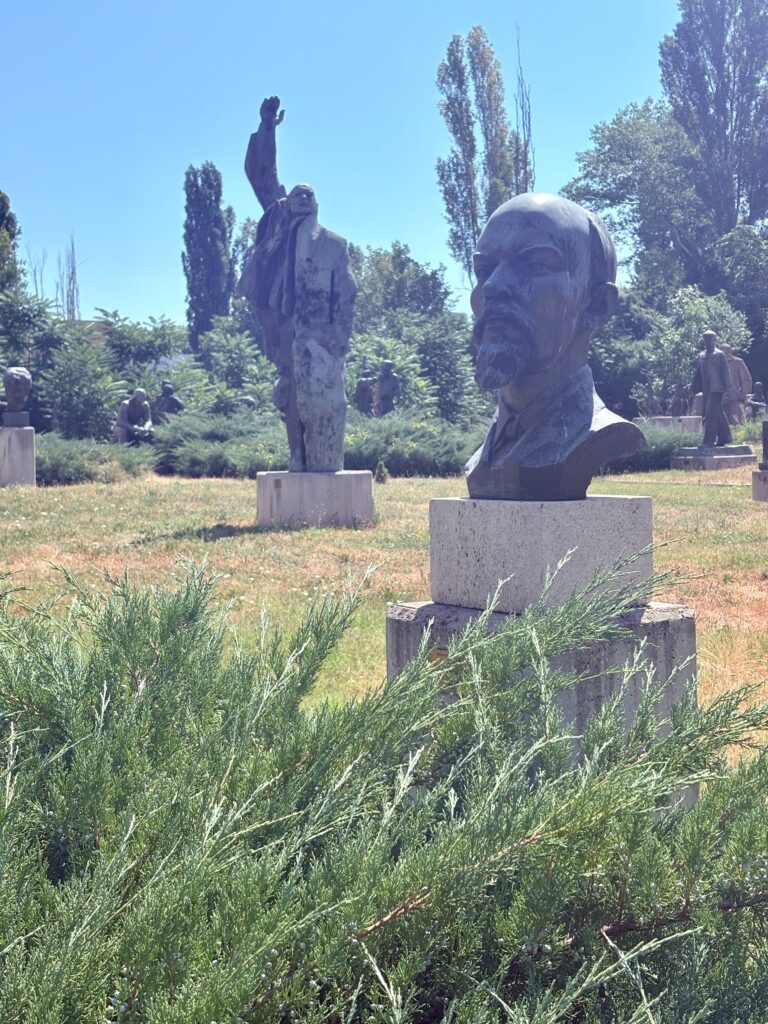
City Center
After that, I drove to my hotel, the Sofia Balkan Palace, which has a great central location, and left the car to explore the city center by foot. The city center is quite condensed, so you can see the main attractions in a few hours (if not visiting museums). I started checking the Saint Nedelya Orthodox Church, which is right in front of the hotel. Behind the hotel there is an ancient orthodox church “Saint George”, and part of the arqueological site Serdika – Sredets. On the other side of the road, I visited the archeological site Serdika – Ulpia, and right behind there is the mosque Banya Bashi. The metro station is nicely integrated with the ruins of the arqueological complex, doing a great job in making them part of the everyday life, while conserving them.
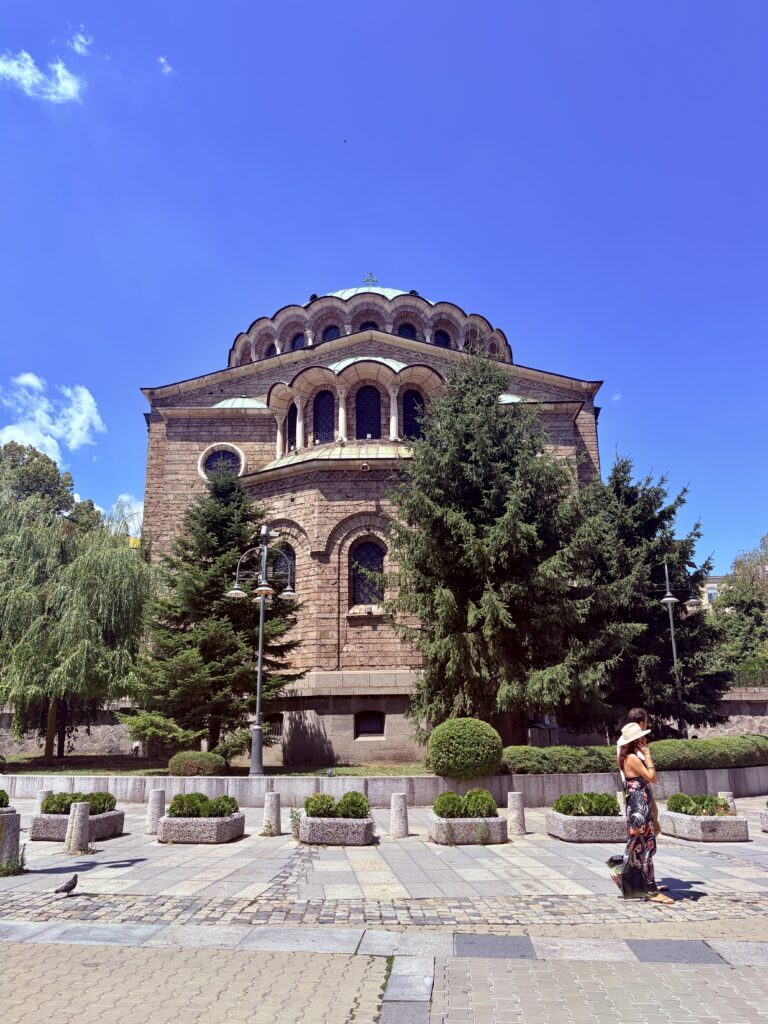
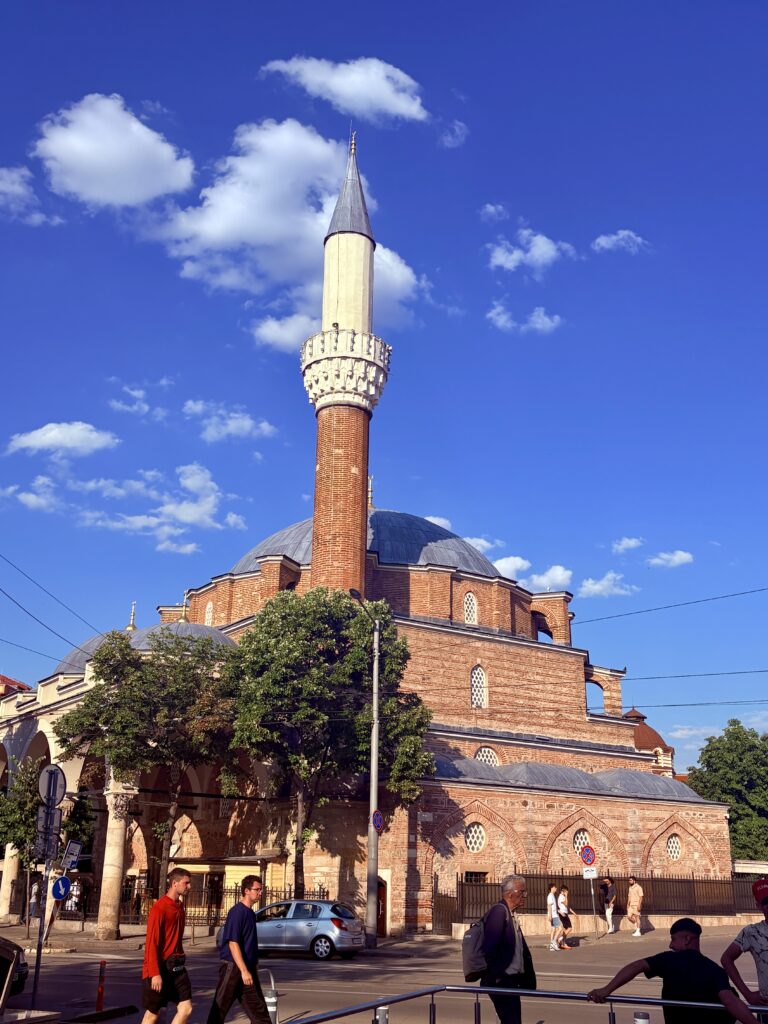

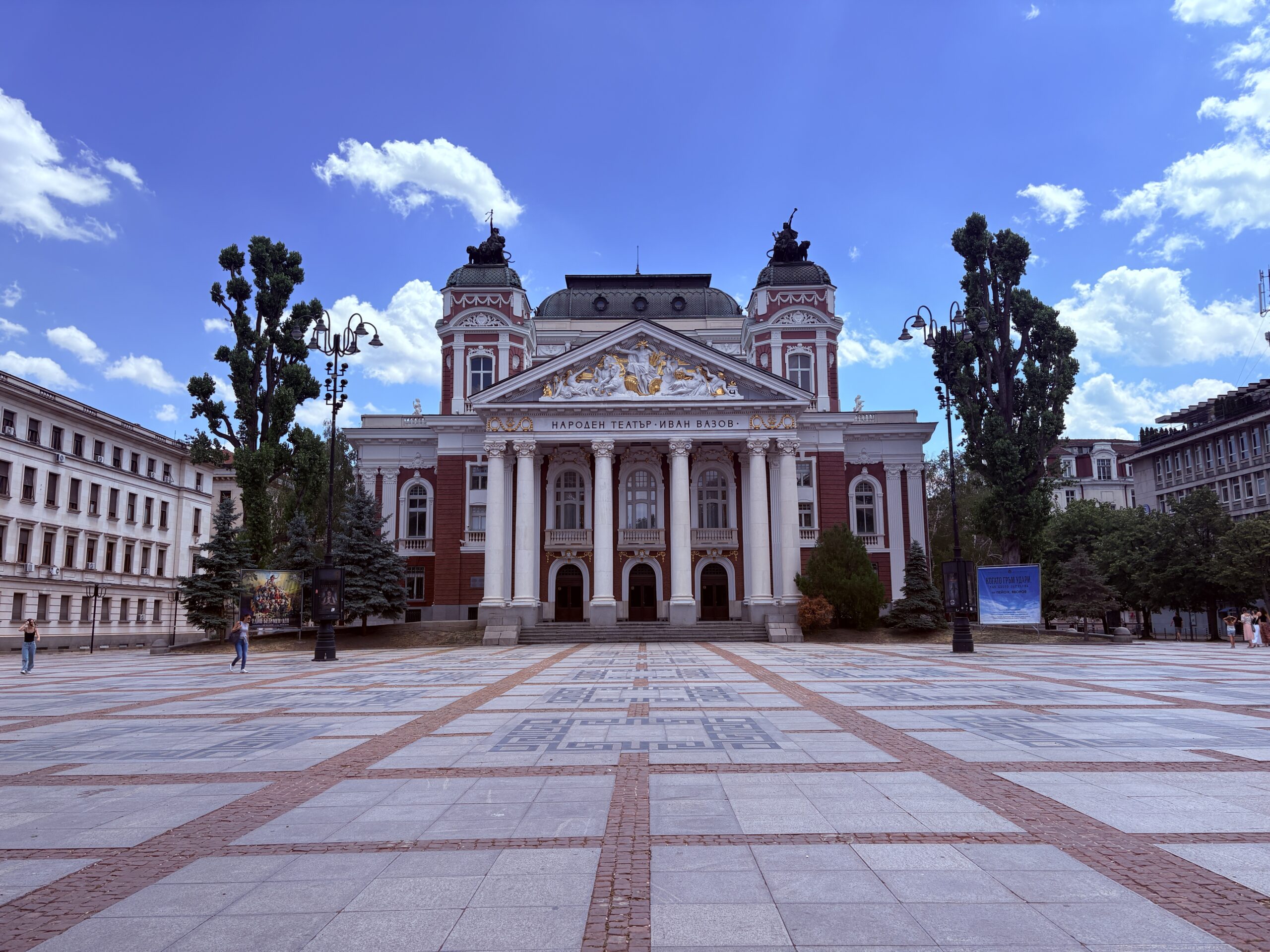

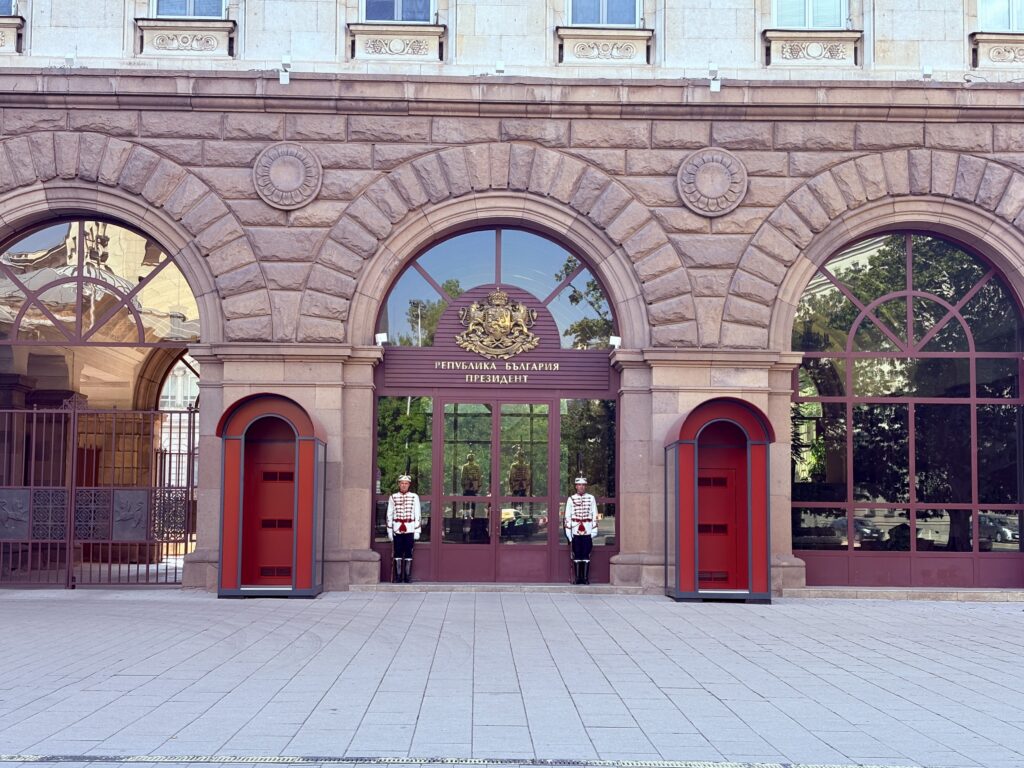
From there, I walked past the city court and walked through the Vitosha Boulevard, which has many restaurants and shops. Walking a it further, I reached the National Theater. They had some shows, but I couldn’t see whether there was a translation to English, so I skipped. A bit further there is the Cathedral St Alexander Nevsky, probably the most famous sight in Sofia. This cathedral was built between 1882 and 1912. On the way to the cathedral, there was also the Russian church, which was built in Russian Revival style.


While near the cathedral, I had the chance to go into the National Gallery. It’s a lovely exhibition of art, featuring mostly Bulgarian artists, but with art pieces also from different countries – for instance, they had an exhibition of ancient worldwide art.
Personal highlights
Everyone has different tastes, intersts, and previous experiences, so if you like traveling, visiting as much as you can is good. I like nature, art, and interesting architecture, so I’m generally more drawn to these places. From this trip, I would personally highly recommend:
- Lake Bled. Touristy? Yes. Beautiful? As well. I felt that one day in Slovenia was not enough and would love to go back to hike there!
- Plitvice. I know, it’s a classic. But classic are so for a reason. This was my second time in Plitvice, and I have to say that going during the right season makes an astonishing difference. My first time was in spring on a grey day and I wasn’t impressed. However, with the sun shining, the color of the water was spectacular.
- Split. It has the same medieval feeling as Dubrovnik, but not the crazy prices nor crowds.
- Old bridge in Mostar. It’s the place all my friends wanted to visit after I shared photos with them. Looks straight out of a postcard.
- Cathedral of Saint Sava. I admit it, I like sparkling shiny things. This cathedral was sparking and shiny inside. My favorite from all the orthodox ones I’ve gone to so far.
- Patriarchal Cathedral of the Holy Ascension. Technically not a church but a museum. I loved the painting style, it has a depressing/creepy feel to it. Very creative.
- Plovdiv. Gorgeous city, full of history. I wasn’t particularly excited about it when planning the trip, and only went there seeing that everybody recommended it. There’s a reason for that, it’s a great place.
- Seven Rila Lakes. Great hike. Challenging enough to feel satisfied, but not too tiring. The views from the top are great.
Is it cheap to travel to the Balkans?
Of course, price is always relative to where you start from. For me, starting my trip from Spain in 2025, I would say that Slovenia and Croatia were on the expensive side, similar to what you get in the touristy areas of Barcelona. Montenegro and Serbia were generally cheaper. Bosnia, and Bulgaria were the cheapest countries in this trip. In the Sofia airport, I bought a box of typical sweets for 3€. A simple meal in Bosnia and Bulgaria was between 10-15€, Montenero and Serbia 15-20€, and Slovenia and Croatia, 20-25€. By simple meal I mean something like a pizza or a piece of meat with some vegetables in an average restaurant.
How safe it is?
For this itinerary, I did part of the trip with friends and part, solo. In neither of the countries I visited, did I feel unsafe. Of course, standard precautions are to be exercised at all times. It’s always recommended not to go through small alleys, shortcuts, and so on, if you’re not familiar with the area, especially as a woman. I will leave my impressions of each country below:
- Slovenia: no issues at all. All the places I visited were quite touristy, so pickpockets might be an issue, but I encountered nothing like that.
- Croatia: same as Slovenia. However, Croatia is one of the Balkan countries most affected by landmines, so choose your hiking destinations carefully. That is not an issue in Plitvice, which is completely safe.
- Montenegro: the only potential issues that I’ve noticed is that roads were a bit narrow and winding.
- Bosnia & Herzegovina: Bosnia is also very affected by anti-person mines. In cities, there are pickpockets, with labels that warn you about them. I also noticed that there’s more man loitering in the streets in Bosnia than in the previously mentioned countries. While I did not feel observed or harrassed in any way, even when wandering on my own, some women may feel unsafe.
- Serbia: I noticed a few drank men on the streets. While none paid any attention to me, it may make some women feel unsafe.
- Bulgaria: Sofia had the highest number of street beggars that I’ve seen in this trip. Beware of potential pickpockets.
What is the dress code?
I expected most of the Balkans to follow a similar dress code to other European countries, but was a bit hesitant about Bosnia. How conservative is Bosnia with women’s clothes? Well, from what I saw -and in the touristic cities- it was pretty much the same as everywhere else. Being a muslim majority country, there were of course women with hijabs, but they often were chatting with their friends in tank tops and shorts. I saw more women wearing a niqab, probably due to direct flights to more conservative countries. While the dressing style is liberal in the cities, out of caution, consider dressing more modestly if going to the countryside.
Dress code in religious buildings
If you’re interested in visiting churches and mosques, be aware that they do have modesty rules, both for men and women. Usually, wearing clothes that hide your shoulders and knees should suffice. Also, no caps and hats are allowed in churches. I was surprised, but no orthodox church required me to wear a headscarf, which I was requested to do in Ucraine and Russia. Also surprisingly, the only mosque I visited (in Mostar), didn’t require me to wear a headscarf either.
Practical tips
Connectivity
Like many people nowadays, I cannot live without data. I chose maya.net for my eSIM, and I’m super happy with it! I had service in all locations I went to (even the hike), and 3GB was a good amount of data for the 2 weeks. They offer an option to top up as well, and the prices are very reasonable.
Cash or card?
In Bosnia, Serbia, and Bulgaria, it’s also good to have cash for small expenses. For instance, if you want to use one of the public restrooms, you will need coins. So make sure to exchange a few euros to the local currency!
As per 2025, Slovenia and Croatia use the euro, Bulgaria has BGN (leva), Serbia has RSD (dinars), and Bosnia & Herzegovina has KM (marks).
To avoid exchange fees from my bank, I use the wise.com card. It costs only 7 € to get one, and then you can use it as a standard debit card. Another advantage is that, if your card gets lost or stolen, you only lose the amount you put in there. I always travel with it!
Ipoh in one day
Ipoh in One Day: Best Things to See and Do If you’re planning a day…
A weekend in Budapest
A weekend in Budapest: The Perfect 2-Day Itinerary for History, Baths, and Architecture If you’re…
2 days in Venice
2 days in Venice: The Perfect Weekend Itinerary for Canals, Culture, and Colorful Islands Some…
Hike to Castle Ruins near Arlesheim
Hike from Dornach-Arlesheim to Goetheanum, Dorneck Castle, and Burg Birseck Getting there Dornach-Arlesheim is located…
One day in Karlsruhe
One day in Karlsruhe: Top Things to Do in Germany’s Fan-Shaped City Located in southwest…
Hiking the Seven Rila Lakes
Hiking the Seven Rila Lakes in Summer: Complete Guide and Tips Hiking the Seven Rila…